




















































































































































THE
All Rights Reserved 2006. No part of this publication may be reproduced or transmitted in any form or by any means, electronic or mechanical, photocopying, recording or any information storage or retrieval system without permission in writing from The Indian Institute Of Architects.
Only materials accompanied by stamped and self-addressed envelopes can be returned. No responsibility is taken for damage or safe return by the Editor of JIIA. The Editor of The Indian Institute Of Architects takes no responsibility for author’s opinion expressed in the signed articles.

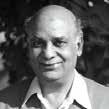


Printed & Published by Ar Lalichan Zacharias on behalf of The Indian Institute of Architects.
Designed by November Printed by Arihant Digiprint
Shed No.1, Ground Floor, CTS No.15, 16, 20, 21 & 37, Italian Compound, Dindoshi Village, Ittbhatti, Goregaon East, Mumbai-400063.
Published at The Indian Institute of Architects, Prospect Chambers Annexe, 5th Floor, Dr D N Road, Fort, Mumbai-400001.
+91 22 22046972 / 22818491 / 22884805 +91 22 22832516 (fax) iiapublication@gmail.com iiaho2014@gmail.com www.indianinstituteofarchitects.com
Editor Ar. Lalichan Zacharias R.N.I. No.9469/57 lalichanz@gmail.com
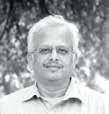




Cover page designed by November
JIIA IS REFEREED JOURNAL ISSN-0019-4913
REGISTERED
SOCIETIES REGISTRATION ACT, XXI OF 1860
OF THE INDIAN INSTITUTE OF ARCHITECTS
87 • ISSUE 05 •MAY 2022
BRILLIANCE in Architecture emanates from one who designs from the heart while embracing historical, contextual and social integrity.
The theme for the May 2022 issue is BRILLIANCE.
We are carrying in this issue, the 19 projects that won the various IIA National Awards for Excellence in Architecture, 2020. We also report on the IIA National Award winners declared and felicitated during the NATCON.
The IIA celebrated its 105th Foundation day on 12th May 2022. Ar Manguesh P, our team member has collected messages and comments from our Past Presidents to commemorate this occasion.
Ar. P. Vivek is in Dialogue with Senior Ar. N.M. Salim from Calicut. Our other regular columns like Travelogue and Sketches continue.








May was a month of extraordinary action as IIA and its different chapters and centres started
their physical meetings and get-togethers after the Pandemic. IIA Awards at Goa, Mahacon Pune, Senior Architects Felicitation Nagpur, NATCON Hyderabad and RAF Jaipur - to name a few are events that were arranged and it was heartening to note that all the events were attended by members in large numbers.
To strengthen IIA we need to increase our membership. The Journal, together with the Membership Development Committee is initiating a campaign to bring in maximum new members into our fold. We request all members to join this effort by recommending and nominating at least 5 new members each.
I welcome you to keep contributing to JIIA in the form of articles, design features etc., and also by recommending some advertisers. We need to have a robust Journal to bolster our IIA.
Ar. Lalichan Zacharias Editor
The transformation that is emerging across various Chapters and Centres, from a period of lull to one of aspiration and rejuvenated activities, to bring togetherness amongst our members with a number of programs is very encouraging for the progress of our Institution.





The Mahacon of the IIA Maharashtra Chapter, hosted by IIA Pune Centre was very well attended by all Centres and other parts of the country. The two-day event was well organized with eminent speakers, panel discussions and a material exhibition. Ar. Prakash Deshmukh, our past president was presented the Lifetime Achievement Award by the Maharashtra Chapter and senior architects were felicitated.
The much-awaited National Convention IIA NATCON 21 hosted by the IIA Telangana Chapter unfolded at HICC, Hyderabad with a large exhibition followed by a grand inaugural ceremony. Two of our esteemed members, Ar. Shirish Beri and Ar. K.T. Ravindran received the Baburao Mhatre and Madhav Achwal Gold Medals respectively.
The highlight of the ceremony was the participation of Shri K.T. Ramarao, Hon. Minister for IT & Urban Development, where he articulated the vision for Telangana and the Government’s gesture in allotting land for the IIA Telangana Chapter was very much appreciated. The sessions of the next two days had eminent speakers and discussions with excellent participation of members.
The Rajasthan Architecture Festival which generated a lot of interest amongst our members lived up to expectations as it started off with a grand inaugural ceremony in the presence of the Chief Minister and Urban Development Minister. The entire program was well coordinated with eminent speakers from far and wide apart from the office bearers and committee members of Arcasia, heritage walks, and a large material exhibition. A festive mood prevailed throughout.
The respective Chapter Chairmen, Conveners, Co-Conveners, Office-bearers, EC members and the entire organizing team have worked passionately with diligence for the success of these events with excellent logistics and hospitality. Our appreciation and congratulations to them. The enthusiasm, fellowship and bonding among the members were very evident in all these events.
There are reports from some Centres that some members are being harassed by CAD software companies. There should not be any cause for worry if one has legal software and in case they find they are still being disturbed they can file a complaint. It is essential that one uses licensed software to uphold our dignity. IIA has consistently been providing information about the availability of IIA CAD, a perpetual license, at an affordable cost for the benefit of our members.


Warm Regards, Ar. C. R. Raju President, IIAAr. Vilas Avachat Vice-President, IIA Ar. Jitendra Mehta, Jr. Vice President, IIA Ar. Gyanendra Singh Shekhawat Hon. Treasurer, IIA Ar. Ashutosh Kr. Agarwal Jt. Hon. Secretary, IIA Ar. Leena Kumar Jt. Hon. Secretary, IIA Ar. Satish Mane Jt. Hon. Secretary, IIA Ar. Divya Kush, Immediate Past President Ar. C.R. Raju President, IIA

The IIA National Awards 2020 for excellence in Architecture held in Goa this summer provided a platform that reflected a high level of BRILLIANCE that is emerging through the works of the architectural fraternity in India today. Every architect in his or her respective position undergoes challenges and accountable responsibilities in the multi-dimensional approaches involved in architectural practice. This itself evolves from the wide spectrum encompassed in architecture education and the experience of handling various design situations and solutions.
The density-based land uses and activity patterns linked to our designs make our design processes very complex and multilayered. Vernacular and traditional architectural practices on one side while contemporary architectural vocabularies on the other generate a need to be very sensitive in our journey towards making our concepts and design as brilliant as ever.
The JIIA has posed a question at this critical juncture when the pandemic posed the debate on the health of buildings versus the health of the users of architecture:
What are the expectations of brilliance architecture that clients are looking for? Are architects able to achieve these levels? What contributes to all this? Is it the high degree of aesthetic sense or is it just the aspect of form following function in a built form is it addressing ecologically sensitive strategies along with design? Is it with just carpet areas or do we need to emphasise integrated infrastructure services in architectural design like innovative usage of energy through solar, and recycled water and futuristic trends of utilities?
A perfect blend between architecture and engineering through structural module and systems also facilitates the levels of spaces and allow an architect to create spaces which enhance value addition. Brilliance also emerges from the compliances with prevailing building regulations and notified codes that include contemporary trends of green building concepts which add resilience and inclusivity with the context.
Architectural built-forms, positioned among natural and built environments revolve around a happiness index that is valued with newer dimensions of people-friendly architectural solutions. Exploring local natural materials versus ecologically-friendly factory-made processed materials provides architects with a huge database for adding typological patterns. Economics linked with budgetary provisions and its applications at various levels also go towards creating thought-provoking planning theories and methodologies in design.
Do costing restrictions act as constraints or do they create opportunities for finding affordable design solutions. Do engineering-wired-based technical grids dominate our design concepts or do we, as architects, blend the two to enhance the design solutions that reflect professional brilliance?

Design briefs from various clients need a combination of visual art, humanities, science, architecture design, services, engineering, climatology, environment, interiors, urban design, landscape architecture, conservation, socio-cultural identities, economics and many more that contribute to the final end product and solutions which speak of the articulation of spatial organisation in design. Further, design elements like colour, texture, scale, proportions and other aspects of basic design also evolve symbolic identity-based design solutions. Achieving levels of safety through architecture design with appropriate materials during disasters or natural calamities also take a front seat when the accountability of architects and their works come under audit and scrutiny. Climateresponsive architectural typologies and socially responsible architectural strategies add an undeniable index of brilliance to spaces in architecture and adapted policies through systems of technologies in design.
At holistic scales, concepts of town planning reflecting regional identities also enable architects to integrate ground realities and client requirements into well-curated and synchronised superimposed layers on design.
The historic past with the prevailing context and futuristic trends of the emerging building industry provides strengths and opportunities. The wide spectrum of site planning at the macro and micro levels also contributes toward working out a comprehensive architectural solution, eventually reflecting and enhancing a high degree of brilliance in design. The constantly changing digital world and software have been transforming our design approach, but it’s up to the architects how our practices adapt to the change. Construction technologies through a timeline-based technique of execution on site and incorporation in design eventually work on the extent of maintenance and operation schedules in design.
JIIA is very happy to be part of this initiative where the architect fraternity of the country showcased their works at IIA Awards and beyond in every possible forum that adds value-based BRILLIANCE to our practice with tremendous inputs of the analytical framework of architectural education.
So to conclude, BRILLIANCE in architecture is much more than what we see among the masses and policymakers. Architects can make a difference here at this platform of BRILLIANCE via JIIA.
Ar. Manguesh R. PrabhugaonkerIn the wake of urbanization, many buildings face demolition even before completing their service life. This phenomenon results in the loss of valuable architectural heritage in many historical cities worldwide, such as is also in Pune. Refurbishing underused or relinquished structures is a promising solution to revitalising the urban fabric. It also achieves environmental and socioeconomic benefits. This research put forth the Adaptive Reuse (AR) phenomenon of urban old-built stock. The analysis presented to advance the conceptual and theoretical understanding of the AR phenomenon. Various advantages offered by AR and risk and constraints in the manifestation of this proposition are discussed. It presents the case of the adaptive reuse of a historic building from a residential to an office, located in Pune city. It includes the theoretical and practical background to support AR architecture precedent. The analysis demonstrated that using AR is a successful approach for conserving heritage structures, which provides several benefits, albeit not widely espoused in practice. Furthermore, the analysis indicated the necessity to reshape and retrofit existing built stock to contribute toward sustainable future development and preserve the intrinsic value of architectural heritage for posterity.
Keywords: sustainability, heritage, residential, office, conservation, restoration, retrofitting, energy, repurpose.
Historic built stock represents a nation’s physical, socio-economic and cultural capital. The obsolescence or redundancy of old structures calls for demolition that impacts the constructed environment negatively. Adaptive Reuse (AR), creative reuse, and ‘brownfield development’ are commonly used strategies adopted to conserve existing old built stock (Manewa, Ross, & Madanayake, 2016). Deterioration and ageing result in reduction or deprivation of structural adequacy of buildings. Obsolescence is often described with physical, technological, functional, economic, legal, social, and political attributes (Langston, 2008). AR emanates in increased building life, reduced material cost, energy and transportation, and pollution, advancing environmental sustainability (Bullen, 2010).
AR is repurposing an activity in which structurally strong structures are modified for economic benefits. This concept protects heritage structures by avoiding demolition. In this process, a historic often dilapidated building is repaired or altered for contemporary use with keeping past features intact (Cantell, 2005). In old areas, many buildings are adequately maintained with minor changes to suit modern requirements but they are often ignored, leaving them to deteriorate with time. A significant number of structures are indeed worth preservation at varying levels (Bond, 2011) which is true in historic cities like Pune.
Old built stock represents the cultural heritage considered as a ‘resource’(Kohler, 2002). The research established that only 0.5-1.0 % of existing built stock requires demolition, while the rest is substantially strong to stand for the next 30-50 years for reuse to meet new spatial and structural requirements. The venerable historic structures located in strategic locations have high commercial value and are recognized as the country’s assets and need preservation for future
generations (De Silva D., 2016). This research puts forth the AR phenomenon from diverse perspectives for contemporary Indian cities.
AR represents a strategy adopted for conserving heritage buildings efficiently. Theoretically, this concept was developed in the 19th century to preserve historical monuments by Eugène Emmanuel Viollet-le-Duc. Later it was dealt with from diverse perspectives by historians and conservation architects covering technical and aesthetic aspects. AR includes restoring, repairing and retrofitting existing building components that pose a daunting challenge for conservation experts and planning authorities (Plevoets, 2011). The phenomenon of AR is studied from diverse perspectives in past research scholarship. It is recognized as a creative adaption aimed at creating a link with the past, facilitating problemsolving and architectural interventions. It is looked at in light of functional, physical, economic, socio-legal and technological aspects. The inability of urban built stock to cater to the user's needs and for economic gains and achieving sustainability calls for AR. These reasons support the wide use of AR strategies for conservation efforts from historical times (Kalaci, 2014).
Repurposing old structures is a time-tested concept. It includes reconfiguration, embellishment, enlargement and other required structural changes that modify the structure. It is stated that the AR strategy applies to structurally strong structures (Conejos S., 2013). With this process, the buildings can accommodate socio-economic and environmental changes. Decision-making is complex in nature and based on four criteria: social, economic, environmental and governance (Perovic, 2015).
Transforming buildings to suit other functions and uses has been in practice from historical times. However, AR as a theory and formal practice came into being in the 1970s. In the wake of the French Revolution, converting a building’s structurally sound function was a common practice where many religious establishments were converted to cater to military or industrial uses. For this, the buildings were sold and confiscated without a conscious consideration for keeping their heritage value intact (Mehr, 2019). A glaring example of AR is the Old City Hall, Boston, US, owned and used by the City Council from 1865 to 1969. The American Heritage Foundation preserved this building of historical interest and later converted it for commercial use with high-end restaurants and business offices (Al-Ghamdi, 2011).
Viollet-le-Duc was the pioneer of the stylistic restoration movement initiated in the 19th century after the French Revolution. This movement stressed reinstating heritage by inserting new structural elements without changing its original character. Ruskin, the leader of the antirestoration movement, criticized the approach adopted in the Victorian era, instead suggesting the caring of built stock daily, with repairs and maintenance.
In the 20th century, Boito initiated the ‘restorationconservation movement’ reconciling Ruskin and Viollet-le-Duc’s approaches. Riegl (1996) suggested
prioritizing the structure’s heritage value for restoration and reproduction, believing that absolute conservation is not feasible. Reproduction was justified even if the decorative parts were lost. The first document was the Athens Charter regarding heritage restoration initiating the movement of modern conservation in 1931. Brandi pioneered this movement developing conservation policies. The Venice Charter introduced the AR phenomenon post-second World War (Mehr, 2019). Various conservation and restoration theories guided contemporary movements having different concepts and forms of AR over time. Such theories exhibited the changed priorities from a value-based approach to a technological need base addressing user demands. Some theories specified within-use adaptation with some introductions of interventions based on the heritage building’s primary function. In contrast, across-use adaptation includes functional changes, as mentioned in the Venice Charter. The modern conservation theory defines design material and authenticity of workmanship as per the Nara document. Here, the authenticity judgment addressed various aspects, including design and form, design, materials, function and use, techniques and traditions, settings and location, and spirit (Petzet, 2004).
It is established in research scholarship that an efficacious adaptation represents a gesture of respect towards the place’s historical character while allowing for changing functions enhancing the building’s character instead of destroying it. UNESCO’s Historic Urban Landscape (HUL) approach includes adaptation, dissemination, and monitoring (Li, 2021).
There are two ways to address the issues posed by abandoned structures- bulldozing the whole property or reconstructing it. AR is a sustainable answer as it :
• extends the building’s life
• supports sustainability by reducing material and transport
• reduces consumption of resources and pollution
• revives the neighborhood while respecting and retaining the building’s heritage and significance
A structure is abandoned for various reasons, including unsatisfactory spatial-visual quality, deterioration, decreased structural strength, malfunctioning installations, shabbiness and vandalism and a subsequent negative image. A building loses its functional lifespan because it cannot cater to the current users' demands because of the inefficiency of building layout for modification and rearrangement with minimum interventions (Remoy, 2007). Many older buildings present in historic districts suit repurposing and become significant sites in conservation schemes (Shipley, 2006). The parameters that qualify an architectural establishment for AR include its historical significance, its age, and the rules and regulations for appropriate interventions (Young, 2014). Heritage conservation is referred to as a luxury, not a necessity (Said, 2017).
4.1. Functional and physical obsolescence: This phenomenon represents the inadequacy of an architectural product for the intended function, that
is, for which it was designed. Physical obsolescence is the degradation of the structural part, building facade, components or installations, rendering the building incapable of supporting required functions. A building’s viability depends on its physical characteristics. In many instances, the repurposing of an old structure constructed with age-old technology and materials is difficult and often leads to obsolescence in economic terms.
4.2. Economic obsolescence:
It occurs on the depreciation of a building’s economic viability in continuing operations as per its intended functions and purpose due to increased land cost or change in land use. Often, fewer business opportunities and the insignificant schemes offering incentives and compensation decrease the investors' interest (Nurul, 2016).
AR reconnects old structures with society giving them a second life (Wilkinson, 2009).The increased life due to the transformation aimed at creating usable and accessible spaces results in reduced socio-economic and environmental costs. This continued urban development process revitalizes an old heritage structure enhancing social cohesion and human interaction (Bullen, 2010).
AR offers substantial savings in energy required for rebuilding or demolishing and subsequent economic and commercial viability (Othman, 2020). AR represents a socio-economic agenda promoting heritage and it also contributes to sustainability and resource efficiency, reducing maintenance costs and enhancing the building's economic viability (Kalaci, 2014).
Preserving old structures is a pre-condition for maintaining socio-cultural continuity (Chiu R. L., 2003). Reuse of significant buildings is preferred against their demolition as it revitalizes the old built stock to achieve environmental sustainability. It is referred to as a meaningful action taken toward selfsustaining architectural conservation that also has economic benefits (Wilkinson, 2009). Although the process adopted for AR calls for some changes and modifications, their identity and architectural character are kept intact. It offers a structure or area an extended life, protecting the historic spatial character and place’s historic fabric (Günçe, 2016). The benefits offered by AR are graphically illustrated in Fig.1.
AR has several benefits but lacks extensive usage because of associated serious challenges for architects, developers and government bodies. It includes justification of a building’s heritage value and choice of strategies that assure minimal impact on the constructional features, setting and its importance in the historical context. Decision-making for AR is primarily focused on economic aspects rather than assessing the benefits objectively and risks involved (Bullen, 2010).
6.1. Functional physical constraints AR interventions are affected by the existing building's architectural character which comprises floor layout, openings, columns, walls and structural details. The
building's spatial configuration requires modifications addressing emerging spatial needs and often requires high costs (Wilkinson, 2009).
6.2. Awareness deficit regarding AR potential
Persistent lack of awareness about the intrinsic value and perception that old buildings have limited functional life leads to bulldozing and vandalism, hindering the upgradation process. Furthermore, the scant availability of sustainable AR projects exhibits people's misconception about their success. Besides, less support from owners and the commercial market supports the reluctance to select AR by and large (De Silva, 2016).
6.3. Technical constraints
AR calls for using veritable, scarcely available materials or integrants, besides they are often expensive. This phenomenon results in the adoption of incompatible materials, adversely affecting the project's authenticity in hand. Besides un-trained workforce to handle old materials and technology hinders AR. Besides the technical problems and complexity involved, issues emerge such as unsatisfactory availability of space and access for installation of new services. The accomplishment of AR relies on precise examination of the structures, where its non-attendance generates latent problems like inconsistency in dimensions and materials and structural defects (Nurul, 2016).
Figure 1: Benefits of AR (Source: Adapted from Othman, 2020)
Figure 2: Risks associated with adaptive reuse (Source: Adapted from Othman, 2020)
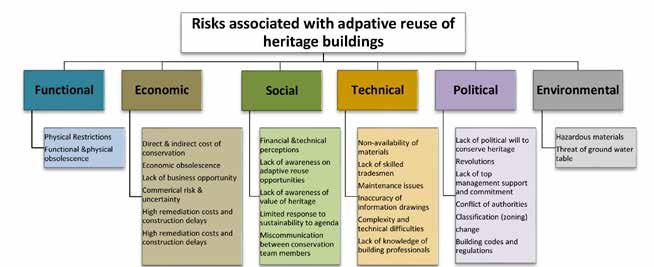
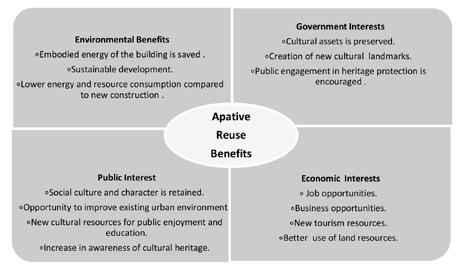
6.4. Constraints due to building regulations and codes
AR projects need to comply with building regulations, codes and conservation guidelines which are often confusing and inconsistent. Contractors are not interested in the adaptation of old structures because of lengthy processes and associated risks posed by delays, design constraints, material compatibility and vacating occupants (Bullen, 2010). Architectural analysis for AR is a complex process comprising a detailed investigation of the design pattern (Fisher-Gewirtzman, 2016).
6.5. Process of AR
According to Bullen (2010), the AR process is different for each project. However, it should be initiated only after examining the following parameters:
to aesthetically fit the streetscape
of materials to match the existing palette
of AR
approval process
of building
for technical innovation
due to location
urban density
visual amenity
Council guidelines
for building after AR
value
codes
Various aspects that govern the decision of opting for AR include structural integrity, material durability, workmanship, maintainability, design complexity, and prevailing climate (Conejos, 2011). The selection of strategies for AR includes minimal interventions, the reversibility of actions, livability, sustainability, compatibility and accessibility (Li, 2021). The risks associated with AR are presented in the figure2.
The methodology adopted is through case studies, for which a residence that has been through the AR process is selected. The method used included a semi-structured interview of the owner, a photographic survey and a documentary analysis. The interview was audiorecorded, and the recorded data was processed with Verbatim Transcription. This research adopted three approaches for analysis that include the study of the primary building form, the reshaped building form, and tactics, strategies and interventions.
The selected building is located in Pune Cantonment's Camp area, characterized by British colonial buildings, low-rise residential development and commercial establishments. The civil population, predominantly the business class commonly known as 'camp followers,' settled there to cater to the army's needs (Petkar, 2012). The reason behind the AR of this residential building is attributed to its distinct character with verandahs, high ceilings, balconies, sloping roofs, and windows having colonial influence and holding imperial charm. Besides, it reflects Pune's cosmopolitan character and rich heritage, which was constructed 100 years ago as a residence. This 1200 sq. feet ancestral property was put to AR to satisfy the emergent need for office space by the owner, an architect by profession. The determination to opt for AR was affirmed by functional, physical and economic obsolescence. The retrofitting took about four years to reshape the structure while keeping the original scale and proportions intact. The residence has a double-storeyed load-bearing structure with wooden structural members and a pitched roof and a long projected balcony overlooking the road in the front.
The residential unit was structurally restored, replacing wooden structural members with steel. The wooden roof trusses were not in good condition; however, the structural members were comparatively strong, but they were also replaced to attain uniformity of the structural frame (see Fig. 3). The unique form of the residence is maintained with utmost care. The interior layout is remodelled to cater to the changed use from residential to office. The doors and windows were reused with minor changes and repairs. However, more openings were created with steel and glass, providing spaciousness and facilitating penetration of daylight. (see Fig. 4).
Traditional antique furniture combined with modern steel and wood furniture was selected to provide functional efficiency and aesthetic appeal. Modern materials are introduced sensibly to the context

complementing the quasi-old architectural vocabulary and aesthetical quality. The corridors peeping onto the street of the cantonment were retrofitted with restored wooden railings and bamboo blinds. It was kept to disconnect the external environment and workspace

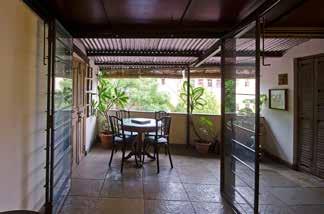
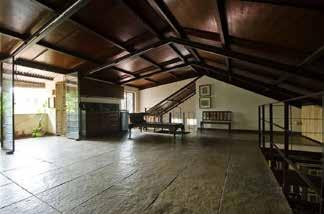
with the purpose to render the interiors cool and for acoustic comfort by reducing external noise. Bamboo mats ensure continuous airflow modifying micro-climate and reducing air-conditioning demand and subsequent energy consumption. (see Fig. 5). An open office plan has simple furniture demarcating the functional spaces. The absence of partition walls provides visual connectivity and spaciousness. The wooden members are kept unchanged, with some strengthening enhancing the ambience and authenticity of character. The windows and doors are reused by fixing tinted glass in window frames to let diffused light in. (see Fig. 6)
The interiors exhibit an assemblage of artefacts such as paintings, sculptures and clay pots acting as an interface between the current and historical period (see Fig. 7). The spiral staircase leading to the mezzanine space of the studio is a critical element of the interior space. It offers a pause point and a transition space. The perforation in the tread of the metal staircase makes it look lighter in appearance and well-integrated with the space (see Fig. 8).

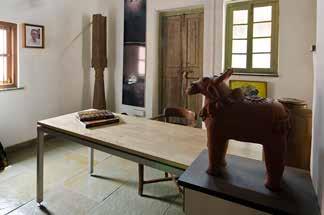
During the process building regulations, codes and conservation guidelines were followed. It was stated that Pune Municipal Corporation’s (PMC) Development Control rules are confusing, and lacking clarity regarding planning and licensing requirements. Besides this, getting the plan approved by the municipal bodies was a daunting task as per the interview data.
Old-built stock is a significant, under-utilized resource
for the historic city of Pune. It has various architectural marvels built in different styles and eras, providing the city with an individualistic and unique identity. The venerable old residences in the Camp area are relatively in good condition than the city core’s building stock facilitating AR. In this inquiry, the AR phenomenon is analyzed by studying a residence for a detailed evidence-based examination of this approach. The analysis of AR presented here demonstrated how a structure is adapted for a new use while keeping the original structure's authenticity intact as per the modern conservation theory. The adoption of various architectural, and decorative elements and retrofitting with minimal interventions catering to the changed spatial requirements of the new use is noticeable. This case represents an across-use adaptation that includes functional changes specified in the Venice Charter. The structure is currently in operation, fully equipped with modern amenities as an office building satisfying physical and environmental comfort conditions having a historical character. The process was efficiently handled by addressing many procedural problems encountered that restrained the stakeholders from opting to repurpose an old building smoothly. The analysis indicated the complexity and risks associated affects the frequent AR in cities. Older built stock in the Camp, Pune represents a significant cultural and aesthetic resource. A few of them are refurbished and adapted for reuse; however, dozens and perhaps hundreds are waiting for knocking down given the high cost of restructuring and renovating them for a fresh use.
It is noticed that the reuse and retention of old structures with adequate interventions is the ultimate form of recycling that add to the sustainability of the built environment. Although attitudes about heritage bear various socio-economic pressures, people still need to reconnect with their roots to celebrate the community's unique identity. This research advocates AR because of its environmental benefits and encourages people to invest in old neighbourhoods, and renew and retrofit old built stock to achieve resource efficiency while respecting historical integrity. However, AR is coupled with complex challenges for conservation professionals, such as addressing the functional changes following regulatory conditions to obtain approval for execution. Nevertheless, the numerous social, economic, spatial, and environmental gains offered can render this option attractive and feasible. Although AR often results in interference with the architectural tissue with reconstruction and extension activities, their dominance over the original structural and architectural form should be limited. In such efforts, the inadequate juxtaposition of forms, scale and using materials alien to the context should be excluded. The need to examine the suitability of the new use while re-functioning heritage buildings and to decide the most appropriate adaptive reuse strategy is stressed.
Old buildings in cities hold an extraordinary part of the city’s setting and need preservation with various strategies and approaches. This research highlighted the significance of more AR projects aiming at sustainability
and presented a process-based design approach. It demonstrated how AR results in keeping the aesthetic expression intact yielding novelty in functional, environmentally sensitive and reflexive architecture. It is noticed that the AR of old built stock is not widely used given the myths and misperceptions. It is established that this concept plays an integral role in sustainability. The pressing need for dynamic, risk-taking and creative people is to be realized. It is visible that AR surpasses maintenance enhancing the building’s performance. It represents an effort and intervention to upgrade, and modify an existing architectural facility to suit emergent spatial and technical requirements. In this process, the originality of the residence was protected significantly, and its performance was upgraded by adding a
coinciding layer following current standards to satisfy the requirements of changed activity and subsequent users. This research stressed that preserving heritage and transferring them to upcoming generations could be accomplished through AR. Preserving and reusing dilapidated traditional structures in the cities of historical importance, such as Pune, will enrich the city's socio-sustainability, continuity and livability. AR is a successful approach to architectural conservation that helps preserve the intrinsic character of structures and spaces economically. This research explored the basic tenets of AR providing insights from an interdisciplinary perspective aimed to promote this concept as a propitious sustainable approach for keeping the legacy of historical city districts intact.
The authors are thankful to Ar. Khushru Irani for providing valuable information on adaptive reuse of the case study.
1. Al-Ghamdi, S. A. (2011). Build ing to Subsist: The Concept of Adaptive Reuse of Buildings In Saudi Arabia. Doctoral disserta tion, University of Dammam.
2. Bond, C. (2011). Adaptive reuse: Explaining collaborations within a complex process (Doc toral dissertation, Department of Planning, Public Policy & Management, University of Ore gon).. University of oregon.
3. Bullen, P. P. (2010). The rhet oric of adaptive reuse or reality of demolition: Views from the field,. Cities, pp. 215-224.
4. Cantell, S. F. (2005). The Adaptive Reuse of Historic Industrial Buildings : Regulation Barriers, Best Practices and Case Studies. Submitted in partial fulfillment of the requirement for the degree Master of Urban and Regional Planning. Virginia : Virginia Polytechnic Institute and State University.
5. Chiu, R. L. (2004). Socio‐cul tural sustainability of housing: a conceptual exploration. Housing, theory and society, 21(2), 65-76.
6. Conejos, S., Langston, C., & Smith, J. (2011). Improving the implementation of adaptive reuse strategies for historic buildings. Le Vie dei Mercanti SAVE HERITAGE: Safeguard of Architectural, Visual, Environmen tal Heritage. Naples, Italy.
7. Conejos, S. L. (2013). Adapt STAR model: a climate-friendly strategy topromote built envi ronment sustainability”. Vol. 37 No. 1, pp. 95-103.
8. De Silva. (2016). Barriers and Challenges of Adaptive Reuse of Buildings. Institute of Quanti ty Surveyors Sri Lanka annual technical sessions 2016- “Social responsibility of Young Quantity surveyors” at Colombo.Srilanka. 9. Fisher-Gewirtzman, D. (2016). Adaptive reuse architecture doc umentation and analysis. Journal of Architectural Engineering
Technology, 5(3), 1-8.
10. Günçe, D. M. (2016). A critical look to the adaptive reuse of traditional urban houses in the Walled City of Nicosia. Journal of Architectural Conservation , 149-166.
11. Kalaci, E. (2014). Implementa tion Challenges to the Adaptive Reuse of a Heritage . Proceedings of the 2nd ICAUD International Conference in Architecture and Urban Design. Tirana, Albania,: Epoka University.
12. Kohler, N., &Hassler, U. (2002). The building stock as a research object. Building Research & Information, 30(4), 226-236.
13. Langston,C. (2008). The sus tainability implications of building adaptive reuse. Beijing , China.: Chinese Research Institute of Construction Management (CRIOCM) International Sym posium.
14. Li, Y., Zhao, L., Huang, J., & Law, A. (2021). Research frame works, methodologies, and assessment methods concerning the adaptive reuse of architec tural heritage: A review. Built Heritage, 5(1), 1-19.
15. Manewa, A., Siriwardena, M., Ross, A., & Madanayake, U. (2016). Adaptable buildings for sustainable built environment. Built Environment Project and Asset Management, 6, 139- 158.
16. Mehr, Y. S. (2019). Analysis of 19th and 20th century conser vation key theories in relation to contemporary adaptive reuse of heritage buildings. Heritage, 2(1), 920-937.
17. Nurul, E. A. (2016). Recurring Issues in Historic Building Conservation. Procedia - Social and Behavioral Sciences, (pp. 587-595).
18. Othman, A. A. E., & Mah moud, N. A. (2020). Public-pri vate partnerships as an approach for alleviating risks associated with adaptive reuse of heritage buildings in Egypt. International
Journal of Construction Manage ment, 1-23.
19. Perovic, M. (2015). Overcom ing The Challenges Of Building Heritage Projects:Improvements To Time, Scope And Cost Perfor mance.PhD diss., Queensland University of Technolog.
20. Petkar, A. S., &Diwan, G. R. (2012). Urban Renewal of the Sadar Bazaar Area in Pune Cantonment. In Proceedings of International Conference on Advances in Architecture and Civil Engineering (AARCV 2012) (Vol. 21, p. 613).
21. Petzet, M. (2004). PRINCI PLES OF PRESERVATION. an introduction to the international charters for conservation and res toration 40 years after the venice charter. , 1-23.
22. Plevoets, B., & Van Cleem poel, K. (2011). Adaptive reuse as a strategy towards conservation of cultural heritage: a literature review. Structural studies, repairs and maintenance of heritage archi tecture XII, 118(12), 155-163.
23. Riegl, A. (1996). The modern cult of monuments: its essence and its development. Historical and philosophical issues in the conservation of cultural heritage,
69, 83.
24. Remoy, H.T., van der Voordt, T.J.M. (2007), "A new life: con version of vacant office build ings into housing", Facilities, Vol. 25 No.3/4, pp.88-103.
25. Shipley, R., Utz, S., & Par sons, M. (2006). Does adaptive reuse pay? A study of the business of building renovation in Ontario, Canada. International journal of heritage studies, 12(6), 505-520.
26. Said, L. B. (2017). Public Perception and Conservation: The Case of. Heritage in Action: Making the Past in the Present.
Cham: Springer , 151-165.
27. Wilkinson, S., James, K., & Reed, R. (2009). Delivering sus tainability through the adaptive reuse of commercial buildings: the Melbourne CBD challenge.
In PRRES 2008: Proceedings of the Pacific Rim Real Estate Society 15th Annual Conference (pp. 1-19). Pacific Rim Real Estate Society (PPRES)..
28. Young, F. P. (2014). Historic preservation and adaptive use: a significant opportunity for sustainability. ARCC Conference Repository.
Himani Lahoti is a student of Final Year B.Arch at Dr. B.N. College of Architecture, Pune. She is currently pursuing her architectural design project.
Dr. Vasudha A Gokhale has graduated from MANIT, Bhopal and has completed her postgraduation and doctorate from IIT Roorkee. She is a Professor and Head of PhD Research Centre at B.N. College of Architecture Pune. She was a visiting scholar at University of Melbourne and, New Zealand. She has more than 125 publications to her account.
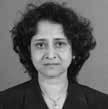

M.Arch.
This research aims to study the factors that have a considerable impact on the conviviality of architectural spaces by studying three cultural institutions. The theoretical aspects are understood through the literature study to identify the key parameters influencing conviviality. Further, the identified parameters are tested for the degree of influence on the phenomenon of conviviality through spatial analysis of the selected cases of three public institutions: Triveni Kala Kendra, New Delhi, the Museum of Socialism, Lucknow and the Lilavati Lalbhai Library, Ahmedabad. The selection of cases is on the basis of accessibility to a wide range of users largely by virtue of being public spaces, yet maintain the spatial diversity by selecting spaces of varied functional use.
The study has been successful in generating the key principles of convivial spaces that shall prove to be useful for design professionals. The study concludes that comfort, accessibility and connectivity, control or ownership over space, engagement with the space, aesthetics and design contribute to the conviviality of a cultural institution but the degree to which they impact a space can vary to a great extent. The study was conducted during the pandemic with limited physical access to the public buildings. Hence the study is purely interpretive and includes the end users’ perspectives based mainly on the memories of past visits.
Keywords: conviviality, cultural institutions, spatial engagement, comfort, sociability

The functionality and dynamics of a place are largely influenced and driven by the quality of the space. In essence, public spaces form the backbone of any society, and it is essential for them to be designed in a manner for them to be sociable, accessible, diverse and invite participation. A term which fits best in this context is ‘convivial’. The spaces which make a person feel at ease are termed convivial spaces. The spatial features and characteristics contribute to the conviviality of the spaces.
In a society, culture plays a very important role in its progression. The cultural institutions, being the prime locations for the dissemination of this education, are an integral part of the society and become vital teaching public spaces for designers to analyze and learn spatial aspects and gain sensitivity. The way an individual behaves or interacts in a space is majorly governed by the language of the built, unbuilt and all its spatial features.
The term convivial has been derived from the Latin word “convivere” which means living together. This term has long been related to sociable, amiable and celebratory traits. Conviviality is a quality which energizes human interaction and vivacity. The term evokes a connection that requires the presence of others between a mood and an atmosphere. It needs an attitude that can be gracious, cheerful or graceful. People prefer conviviality because it gives them and others a taste of happiness which they may not have been able to conjure on their own (Thombre and Kapshe, 2020).
Conviviality conceptually transcends the English sense of having a good time in the company of others (Heil, 2015). It can be talked about as an event, atmosphere, cultural aspect, spatial characteristics and quality of life. It generally occurs widely when addressing or planning for multi-cultural societies. With reference to the studies on multicultural societies by Amin (2008), he states "Conviviality as an everyday virtue of living with a difference based on the direct experience of multicultural. It is a word that has begun to circulate in thinking on social inclusion and cultural recognition of differences in public open spaces".
The concept of conviviality develops chiefly under the sense of place discussion. Individuals normally participate in social activities according to their sense
of place. Physical parameters often allow the growth of the sense of a place to respond to the existing functions in a given place by making out some meaning from it. Convivial public spaces are spaces which are amicable and comfortable to use. They provide the ambience needed for successful public spaces because people don’t feel threatened or uncomfortable in them, as stated by Jaganath (2017), “The ability to make people feel relaxed and comfortable in a space can influence positive thinking and good health of the person.”
Shaftoe (2008) indicates that welcoming environments have their own personalities, creating a healthy and friendly urban atmosphere for people to use. That is what is intended for public spaces that are well-used. But there are also public spaces that are not assessed and are viewed as socially threatening or harmful. The convivial approach to spaces revolves around cultural, social and positive development rather than economic factors. It tends to centre on the daily life of people where spare time, free space, convivial technology and convivial organizations act as a social and cultural capital which comes from cultural networks rather than existential assets such as income (Thombre and Kapshe, 2020).
Jorgensen and Stedman (2001) have found that an individual’s inclination about a place is an indication of emotional measurement. Their convictions about a place shape the cognitive dimension (Figure 1). This ideology can be used in shaping a framework for a feeling of conviviality at a particular place. The feeling of solace and sentiment of euphoria are fundamental fixings with legitimate administration to make convivial public spaces.
After studying various literature and authors on convivial spaces and public spaces, the features which are required for to cultural institutions and which will be considered for the purpose of this study are as shown in Table 1 (Burte, H., 2008):
• Comfort
• Accessibility and connectivity
• Control or ownership over space
• Engagement with the space
• Aesthetics and design
Cultural institutions encompass a variety of spaces. For this research, a varied typology of sites ranging from an arts complex to a library was selected to ensure a mix of use and avoid biases. Also, they are in the same climatic zone which will enable the study to understand how the designers have responded climatically. The case studies selected are as follows:
1. Triveni Kala Sangam, New Delhi: This is a prominent and famous cultural and arts complex and education centre.
2. Museum of Socialism, Lucknow: This houses a collection of exhibits about the social reformer, Jaya Prakash Narayan. It is also called the Jaya Prakash Narayan (JPN) Interpretation Centre.
3. Lilavati Lalbhai Library, Ahmedabad: Embedded in the heart of the CEPT University campus and designed by B.V. Doshi, the CEPT Library is conceived as a place

for the students and faculty of the various academic departments to catalyze relationships.
The study was conducted during the pandemic with limited physical access to the public buildings. Hence the study is purely interpretive and includes the end users’ perspectives based mainly on the memories of past visits.
4.1 Triveni Kala Sangam, New Delhi
Triveni Kala Sangam is an eminent art, cultural and educational centre in New Delhi. Due to its conducive climatic response, the building becomes a good hangout space for people, especially scholars and students, to spend the afternoons or evenings together. The landscaping is such that despite the built form, a user is not constantly amidst buildings, but offers a place to enjoy nature as well. The indoor-outdoor spaces in turn provide the opportunity to connect passively with nature and engage with it. The absence of any form of ticketing allows everyone to walk into the space freely. However, the lack of parking creates a problem for private vehicle owners. Flexibility in the performance spaces of various types of art, when many activities have to be arranged in a small plot, and balance between the interior and the exterior can be seen easily (Figure 2). The privacy of the building gradually increases as one goes vertically from the public spaces on the ground floor followed by working studios on the first and second floors. A perfect balance of separation and cohesion can be seen. A high degree of versatility has been achieved by accommodating a large number of functions on the site adding to the experiential quality of a public building (Facebook, 2019).
Each floor provides the outer wall with a planter, providing a nice climate. By having window openings on the entire north side of the wall, the light and ventilation are taken care of without letting the direct heat of the sun in. Along with the planters, the use of jaalis as a façade element not only creates a traditional relatable façade element but also helps in letting in the fresh air and cutting the harshness of the Delhi afternoon sun. Mr. Stein said of this building, ‘I have searched for ways and a vocabulary that would articulate a rational, efficient reconciliation of advanced modern engineering techniques and architectural attitudes of the twentieth century, with India's ancient, but enduringly essential,
aesthetic and cultural values.’ Almost as a campus of individual blocks, each clearly labelled, the current building is perceived as a whole with more than 50 per cent of the covered area accessible to the public (Figure 3). Architectural features are carried out with a plaster façade around the perimeter of the site as well as planting in pedestrian traffic and vehicular movement of the wall. The connectivity between the spaces adds to the coherence of the space. However, the absence of a lift is felt in the four-storeyed structure.

4.2 Museum of Socialism, Lucknow
The contemporary design of the Museum's architecture takes responsibility for constructing what will be the past of tomorrow while narrating the present one. The entrance is a volume of three heights that instantly


initiates a conception of the institution's size and the person's stature (Figure 4). The façade's triangular shape, easily visible even from a distance, derives from the wedge cut out of the JPN International Centre, as well as from its stronger diagrammatic definition of the triad of socialist aims- liberty, independence and fraternity. The entrance leads to a cellar, a play of deception in which the house seems to float, the thickness on both sides being equal to two floors of water bodies (Archohm, 2016).
The presence of natural light facilitates the atmosphere required for the place. Despite being in a building with no windows, the way the natural light creeps in engages the users. On the exterior, the facades have been built as blank walls with an introverted character. However once inside, light is sent on a wild goose chase so that it is controlled as it returns, and its tonality is most suitable for the visual spread and to illuminate the minds that consume it. (Figure 5)
The sound suits the place's atmosphere. The low-level lighting of the galleries contrasts with the bright and naturally illuminated atrium. The airflow inside the building does not let any user feel as if they are in a suffocating building. Landscaped open spaces provide respite from the museum's otherwise intensely immersive environment, providing spaces for reflection and realization in a leisurely fashion.
Spaces are stretched in equilibrium in the horizontal and vertical planes, so that the path, though in bits and in sync with the specified areas of experience, seems like a continuous one. Volumes are placed within volumes to bring levels of difficulty and surprises to the space-making experience (Figure 6). Internally, volumes are made to interlock seamlessly as the concept of a community in the enterprise is not only a reverberating word but also as the program has also been built in this way. The
architecture is in dialogue with the integrated planning of museums and exhibits, construction experience and landscape. The landscape is a key component of the house, with a seamless sinuous drive into the venue, an 'introductory walk' into the entry foyer, usually used as inserts, rests and even termination nodes to balance the built environment of the JPN Interpretation Centre before being physically and metaphorically swept off its feet in the Convention Centre's skies. An urban forest itself is an indication of the homage paid to nature that the corporation is parked in a green location that is visibly huge.




As a library complex within a college campus, this building serves the purpose it is designed for, with
adequate seating and reading spaces. Situated in the hot and dry climate of Ahmedabad, this building along with the operable louvres, light wells and sunken built mass tackles the weather and succeeds in achieving an ambient atmosphere comfortable for the users within. With a large open plaza in front, this building provides a great view and is in alignment with the previous structures (Figure 7) (Gonchar, J., 2018).
The entrances to the building serve as not only a connection between the square and the inner volume but also as a place of arrival and pause, wider at the outer edge and (maybe asymmetrical) narrowing down within. The building is thus much like a kaavad- a moving temple, in which layers of doors are opened, each unveiling a continuous narrative, a different episode. The narrative

of the building engages a user and creates a successful connection within the minds of the users. Capturing and being able to articulate the correct scale of the scheme, spaces and form is another important predictor for an architectural work of its ‘knowledge of location’.
Located at 4 meters and 8 meters below ground level, the central book centre, surrounded by research carrels, with archives at the base and study rooms, benefits from ample and filtered natural illumination that flows through the louvred façade as well as the natural cooling effect provided by the surrounding soil, a technique that offers a geothermal advantage in the warm environment (Figure 8). According to the architect, ‘Entering a library is to reflect, to connect with oneself and with books’. A below-grade surface that has worked its way up into the light appears to be the huge unrendered concrete ground floor. The base is given an interesting sculptural look by an asymmetrical series of gaping diagonal recesses. In airy, transparent contrast to their base, the two 4 m upper storeys stand on this plinth.
The identified parameters were explored in detail to draw conclusions about corresponding physical attributes. The understanding of the architectural and physical attributes of the three case studies, lead to drawing the following inferences in terms of the parameters identified earlier (as shown in Table 2).
• Degree of contribution: All the parameters studied are
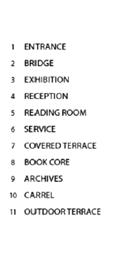
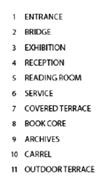
essential for a space to be convivial in nature. However, the degree of contribution of each parameter to the experiential quality and conviviality of the whole space varies greatly.
• Comfort in a space plays a significant role: It helps subconsciously in putting a user at ease. It is comfort which explains why a natural lit space and ventilated area is more habitable than an artificially lit area. Similarly, passive cooling is much more comforting as compared to the actively cooled spaces.
• Visual and physical connections: The visual connect one can establish and the physical connection one can traverse enables a user to experience and relate to the journey of the space and connect with it.
• Restrictions and controls: The restrictions or controls a space offers surely do alter the ease of movement occurring in a space. Yet, it was observed that users tend to adapt to it and do not refrain from habiting the space.
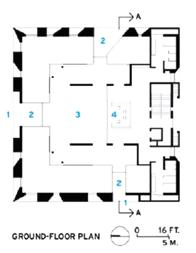


• Engagement with spaces: The activities a space offers are the prime purpose why a user is visiting a space. Thus, the engagement the space offers in the form of activities and the passive engagement by the layout of spaces, landscape and transition contribute greatly to the conviviality.
• Design of space: The design of a space needs to be aesthetic, legible and arouse curiosity. All three case studies are beautifully designed, they have unique design forms, yet the scale and spatial planning enable their spaces to be understood by the user and not be dominated by them.
of
has photo galleries, an amphitheatre, kid’s area, and
The visitors are also provided with audio tour. The numerous activities along with the landscape engage a user well in indoors. Outdoor spaces are currently less interactive.
has spaces for isolated study,
study, discussions,
spaces
areas. The shaded sill on the outside provides for seating of
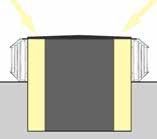
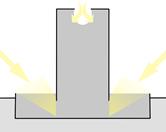


There is no restriction on people entering. Cars are not allowed. The entry gate is small and there is no ticket needed.
It is accessible by all from 10:30 am to 5:00 pm.
It is open to all entering the CEPT campus, which is restricted by guards. The facilities are open to the members only.

The small spaces are well connected with each other. The whole campus is pedestrian friendly, but the use of cars is not allowed inside. Parking is also not provided. In the four-storey building, vertical circulation is via the staircase only.
A large archway acting as entrance and a flight of steps leading to the top create a visual connectivity to the space. The space is completely pedestrianfriendly with steps inside the building as well.
With entrances on all sides, this is a library of easy access. The transition of spaces within is through steps and lift. Bridges lead to the inside of the spaces through the entrance which also act as a space for pause and relaxation.
The space, designed by J.A. Stein, is extremely versatile in terms of the activities it offers and the kind of spaces it has. The indoor and outdoor spaces complement each other, and the campus provides a breather in the Delhi context.
Designed by Archohm, this serves as a gateway to the forthcoming interpretation centre. The building is a landmark hence have bold appearance. The wedge-shaped building may be intriguing but the scale and the site planning enable a user to connect and relate to the space.
This library is designed with a vision to blend with the campus and use traditional materials in a modern way. The shape of the building and the form, building within a building, provide seclusion and calmness needed for a library space while using local materials like wood and concrete to complement the existing campus.
The above work was done as part of dissertation project as per academic curriculum of SPA Delhi in session 2019-20 by Rajita Jain under the guidance of Kamini Singh. The authors acknowledge the guidance and contribution from the faculty coordinators Prof. Mekhla Parihar, Prof. Jaya Kumar, Dr. Prabhjot Sugga, and Prof. Arpita Dayal on the process of research.
1. Amin, A. (2008). Collective culture and urban public space. City: Anal ysis of Urban Change, Theory, Action, Vol 12, p.5- 24
2. Archohm, (2016). Museum of Socialism-Jaya Prakash Narayan Interpretation Centre. Retrieved 2022, from ArchDaily: https://www. archdaily.com/794277/museum-of-socialism-jayaprakash-narayan-in terpretation-centre-archohm
3. Burte, H. (2008). Space for Engagement: The Indian Artplace and a Habitational Approach to Architecture. Calcutta: Seagull Books. P. 99, 100, 105, 106, 122.
4. Gonchar, Joann (2018). Lilavati Lalbhai Library by RMA Architects. Retrieved 2022, from Architectural Record: https://www.architectural record.com/articles/13220-lilavati-lalbhai-library-by-rma-architects
5. Heil, T. (2015). Conviviality (Re)negotiating minimal consensus. Routledge International Handbook of Diversity Studies. Routledge. P. 317-324.

6. Jagannath, T. (2017, April 20). Creating ‘Convivial’ Public Spac es. Medium. Retrieved 2022, from https://medium.com/inter views-and-articles-on-art-public-spaces/creating-convivial-public-spac es-7c40cc9f079a.
7. Jorgensen, B.S.; Stedman, R.C. (2001). Sense of Place as an Attitude: Lakeshore owners Attitudes Towards their Properties. Journal of Envi ronmental Psychology, p. 233-248
8. Shaftoe, H. (2008). Convivial Urban Spaces: Creating Effective Public Places. Routledge. P. 6, 47, 49, 66, 76.
9. Thombre, L., and Kapshe, C. (2020). Conviviality as a Spatial Planning Goal for Public Open Spaces. International Journal of Recent Technology and Engineering (IJRTE). P. 4382, 4383, 4385
10. Triveni Kala Sangam, New Delhi (2019). Retrieved 2022, from: https://www.facebook.com/triveninewdelhi/photos/458307454736355
11. White, S. (1989). Building in the Garden: The Architecture of Joseph Allen Stein in India and California, Oxford University Press. P. 139 -145.
Ar. Rajita Jain is an architect by profession who engages with the dynamics of urban spaces and the people. She aims at developing ways of amalgamating cultural and traditional beliefs with modern-day technology to give the urban fabric a vernacular sensitivity.
Ar. Kamini Singh is an architect- urban designer. Her research interest lies in exploring the placemaking potential of urban spaces. She has over ten years of professional experience in academia, research and architectural practice.



 Ar. Leena Kumar Jt. Hon. Secretary, IIA
Ar. Leena Kumar Jt. Hon. Secretary, IIA

The IIA is the national body of architects in the country. Established in 1917, IIA plays a major role in promoting the profession of architecture. The annual awards were instituted in 1989 to encourage, acknowledge, appreciate and honour significant contributions of professionals in the field of architecture. These are the only national-level awards presented to deserving architects by its own fraternity members’ organisation, given in various categories. Previously, the awards were named JIIA Awards and there were only six categories. In the year 2003, it was renamed as IIA Awards. Year by year the categories have been increased as also the participation of architects. For IIA Awards 2020 we had the following 15 categories and attempted to cover the spectrum of architecture.
After completing glorious 28 years, this year’s awards were organized very innovatively and focused on participation from young architects. With the intent of promoting participation and motivating our young fraternity, we reduced the fee structure to encourage young architects. The IIA National Awards 2020 for excellence in architecture, the most coveted architectural award of our Nation, had its Awards Night hosted by the Goa Chapter at Panjim on 9 & 10 April 2022. It was the culmination of many anxious months of waiting for a physical jury to be held with the pandemic playing hide & seek with us over its third wave. The date finally arrived, albeit a little late, but it was worth the wait. The prestigious IIA National Awards 2020 greeted close to 500 entries in 15 categories. The Awards were conducted as a twostage jury steered by the awards team of the IIA National Council and the Goa Chapter.
The first stage of the jury held in Mumbai at the IES College of Architecture, comprised 16 eminent jury members that spent the whole day together deliberating on the entries received and its evaluation, to shortlist 66 entries out of the 486 received for the final jury. It was an arduous task considering the high level of entries received and the meticulous review required.
The hosts for the Awards, instead of holding the Awards Night in a hotel and instead opted for a heritage site, the ESG complex at Panaji. The ESG complex is a 167-year old structure established in the year 1842 during the Portuguese rule of Goa as the Escola Medico Cirurgica da Goa, renamed Goa Medical College in 1963, and again changed to the Entertainment Society of Goa (ESG) in 2004. One of the city’s oldest structures, it imparted the flavour of Goa and an experience of Gothic architecture which was a memorable participation. The second stage of the final grand open jury jury at Goa, comprised 12 eminent jurors for a live jury of all 66 shortlisted projects, held in 4 halls concurrently.
All participants were given the opportunity to explain their projects through presentations before the second set of very
eminent jurors and witnessed by an enthusiastic gathering of IIA members. The live signage indicating the category, project and architect, was precisely displayed in front of each hall, making it very easy for delegates to attend the jury of preference. The open jury was transparent, rigorous and engaging. After marathon rounds of evaluation in a most transparent manner, the eminent jurors selected the final winners:
• Ar. Hafeef P.K. and Ar. Hamid M.M. won the award in the 'Architecture Unbuilt Projects' category for the project 'Edavani: Redefining A Tribal Settlement/Village/Hamlet'.
• Ar. Dhananjay Shinde won the award in the 'Conservation Projects' category for the project 'Udajee Early Years'.
• Ar. Alan Abraham won the award in the ‘Landscape Projects – A' category, for the project 'St.Stephen's Steps', and a Commendation award was given to Ar. Varna S. Dhar for the project 'Performative Public Landscape'.
• Ar. Biley Elattuvalappil Menon won the award in the 'Landscape Projects – B' category for the project 'Tholkappia Poonga Ecological Restoration Project'.
• Dr. Dakshayini R. Patil won the award in the Research Category for the project 'Modelling for Elderly Mobility in Urban Neighbourhoods', and a Commendation award was given to Ar. Joy Mondal for the project 'Differences Between Architect's and Non-Architect's Visual Perception of Design Originality'.
• Ar. Ajit V. Jain won the Commendation award in the 'Commercial Projects' category for the project 'Giga Cars'.
• Ar. Sanjay Puri won the award in the 'Hospitality & Recreation Projects' category for the project 'Aria Hotel', and a Commendation award was given to Ar. R. Lathafor the project 'Stone Hedge'.
• Ar. Uday Andhare won the Commendation award in the 'Industrial / Infrastructure Projects' category for the project 'Ajrakh Studio – Ajrakhpur Kutch'.
• Ar. Deepak Guggari won the award in the 'Interior Design Projects - Non Residential' category for the project 'Cardboard Office', and a Commendation award was given to Ar. Ajay Sonar for the project 'Studio ‘A For Architecture’'.
• Ar. Ranjit Wagh won the award in the 'Interior Design ProjectsResidential' category for the project 'Skylit House'.
• Ar. Bijoy Ramachandran won the award in the 'Public/ Institutional Projects' category for the project 'Airaa Academy', and a Commendation award was given to Ar. Murali Murugan for the project 'JJ Memorial Complex'.
• Ar. James Joseph won the award in the 'Residential Projects – A' category for the project 'ElakaduVasathi'.
• Ar. Chandrashekar Ganti won the Commendation award in the 'Residential Projects – B' category for the project 'Soho Housing'.
• Ar. Nimisha Hakkim won the award in the 'Socially Responsible Architecture' category for the project 'Karaparamba Government Higher Secondary School'. No awards were given in the ‘Unbuilt Future Projects’ category.
The two-day event witnessed presentations and exhibition of 66 short-listed projects from the 486 national level entries. The awards were distributed at a Valedictory Function at the Entertainment Society of Goa in Panjim on 10 April 2022. The Jury culminated with the Awards Night held in the open quadrangle of the heritage building edged with large trees. A run up to this evening was a mesmerizing sarod performance by Ms Rajrupa Chowdhury and Mayank Bedekar, tabla accompanist; a cruise along the Mandovi River and a key-note address by Ar. Kashef Chowdhury at the Maquinez Palace that was built in 1702. We bade good bye to the IIA Awards 2020 on 10 April post-dinner.











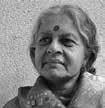






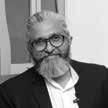


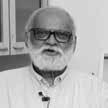






7. Meticulously create an excel chart with tasks and responsibilities for each of your EC members. But don’t dwell on it for long because sooner than later FOAID will have taken over and you will come to appreciate that they are much better at it than us.
8. Be creative and save money wherever possible. After all, money saved is money earned for the Institute.
Ar Amit Sukhthankar Chairman, Goa Chapter

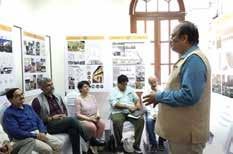




It has been our privilege and an honour to host the IIA National Awards 2020. My heartiest congratulations, not only to all the winners, but also to all the shortlisted architects. After all, it has never been about the Awards as much as it is about the discussions, devised as the means to further architectural education. On our part, we hope we have been able to do justice to its sanctity. Now having concluded this enormous task, I can finally relax, ponder and pen down a few thoughts on it. If it feels somewhat poetic, then it has perhaps got to do with the destressing effect that it has left for me in its aftermath.
So here’s a quick compilation of the dos and the don’ts to recall in the making of the IIA National Awards. This is strictly for the benefit of those eager innocent Chairmen intending to walk the path after me:
1. Start by preparing an accurate budget. An inflated budget will scare you before the event while an incomplete one will scare you later. Seek help from the Centre. You can count on their experience.
2. Circulate a professionally prepared money bowl called an ‘appeal brochure’ among as many vendors as you know. Remember the rejection rate could be as high as 20:1.
3. Don’t be disheartened, it’s not a wedding proposal that has been rejected. Put your entire goodwill on the line, grow a thicker skin, but stay steadfast.
4. There is no such thing as too many sponsors. But there is certainly such a thing as too many exhibitors. Aim to limit their numbers. They take up space. 8 is just a sweet number.
5. Don’t fool yourself that fund collection is a collective responsibility. It is the sacred prerogative of the Chairman. Opt for bridge funding through your EC in the interim period. They will certainly extend a helping hand.
6. Select a smart lady within your EC to handle negotiations and to manage money. Don’t leave it to men.
9. Give up on the idea of fancy hotels for a venue. They are overrated, expensive and prone to criticism, no matter what. Find any venue that is sufficiently functional, so long as it has a heritage value. These are the sort of places that have found a place closer to the heart of an architect and come protected against any criticism.
10. On the big day, keep only key responsibilities with yourself and your most trusted EC members. This would include jury hall management, presentation hall management and drink counter management. Do not entrust the bar to someone who has an affinity for filled up glass bottles, however trusted he is.
11. Bring in an international keynote speaker if possible to pep up the first evening. A musical evening with a classical Indian instrument may also set the tone for a serious day that is to follow.

12. Engage with students and bring in as many of them as possible as volunteers. Don’t use them as cheap fodder, but encourage them to participate in the enthralling presentations and jury discussions. This event can single-handedly match up to an entire year's learning at school.
13. Keep the event simple, crisp and devoid of elaborate paraphernalia that come attached with special invitees and chief guests. There’s already too much on your plate.
14. Finally, remember that this event is not all done unless you have paid off everyone that you owe money to, have delivered on all your commitments and have finally compiled this summary of dos and don’ts for the JIIA report.

- IIA Goa ChapterAr. Orty Soares
Research - WINNER
Dr. Dakshayini R. Patil Associate ProfessorBMS College of Architecture, Bangalore. dsjoshi08@gmail.com
Dr. Prof. Mamatha P. Raj Director & ProfessorBMS College of Architecture, Bangalore.
This is a summary of the original research paper. It was originally published in partly based on the doctoral thesis completed by Dr. Dakshayini R. Patil under the supervision of Dr. Mamatha P. Raj under Visvesvaraya Technological University, Belagavi, Karnataka. It was published in URBAN INDIA, a Journal of the National Institute of Urban affairs (NIUA) Vol. 39 Issue 1, Jan.June 2019. ISSN-0970-9045. (P. 112 to 133). Print version only.
This research paper published in Urban India, Journal of NIUA, 2019 aimed at devising a methodology of assessment towards designing the physical milieu of urban spaces in residential neighborhoods towards pedestrian mobility. The primary target user group are elderly citizens (60+ years). Walking as a fundamental prerogative right of all- walking to work, for exercise, to shop or for joy is a basic characteristic of sustainable neighborhoods in cities. For elderly walking is a preferred mode of commutation to access basic needs in their immediate neighborhoods. Bangalore is one of the cosmopolitan cities, popularly known to be a Pensioner’s paradise & Garden city housing over 10 million population. However, from generally observed & expressed perceptions, public spaces have faced the wrath of urbanization and become hostile to pedestrians. Probing the concerns led to realization that urban space has not been assessed in any definitive manner to arrive at resolving the impending issues. Thereupon, the research developed ‘Elderly pedestrian audits’ to gauge the walkability as a model of assessment. Strategic proposals as derivatives from the audits are proposed to design walkable neighborhoods.
Key words: Pedestrian Audits, Urban space milieu, Elderly citizens, Design strategies
The research sought understanding urban public space phenomena and their affinity to host walkable mobility, specifically for the target user group of elderly citizens. The study was conducted in four selected neighbourhoods in Bangalore city. With the impacts and aftermath of urbanization, the city is fast becoming hostile to people on foot, which is anti-thesis to sustainable growth paradigm of present times. The study includes survey carried out in two sets of adjacent residential
neighbourhoods with relatively higher elderly population: Basavanagudi- Chamarajpete & Vijayanagar- Govindrajnagar.
The research began with the impending question: ‘Do neighbourhood public spaces provide safe and easy pedestrian mobility to elderly residents?’ The perceptions of Indian streets are precarious; cities are seemingly planned for motors, utilities, and other processes necessary to support urban life. While doing so, pedestrian becomes the last priority element; more so impacting the vulnerable users such as elderly, physically challenged or children. Whereas it is proved that ageing need not become a constraint to lead a normal, engaging and socially vibrant life (WHO, 2002). Elderly demographics are fast increasing in India as is worldwide (GOI, 2011).
Urban space milieu is a complex phenomenon constituting multiple factors of influence. There has been a change in the traditional Indian family structure; families are becoming nuclear and elderly parents are left on their own, making it imperative that they remain independent in the society. 42% of Indian male elderly continue to work even after crossing 60; 13% aged 80 & above reveals research conducted by Population research center, ISEC (TNN, 2013). A survey in 2014 for the Government of Karnataka state has revealed that only 20% footpaths are safe for pedestrians in Bangalore. In 2014, according to Bangalore City Traffic Police, 50% of road accident fatalities involved pedestrians. A research survey shows every fifth head injury case reported as casualty at NIMHANS was a pedestrian (Pruthi, 2012). 29% of pedestrians killed on Bangalore roads in 2017 were senior citizens over 60 years (Times of India, Jan 18, 2018, based on report by The Footpath initiative, an urban project). Pedestrians in Bangalore are at risks while using streets as compared to other cities with a low safety index of 0.63 (MoUD, 2008).
To devise a verifiable empirical measurement system, research objectives are to assess mainly three parameters: on-ground status of urban spaces, elderly citizen’s mobility aspects and co-relational analysis of the two. Towards this, a methodology has been formulated involving field observations coined here as ‘Elderly pedestrian audits’ as below.
During field survey in each study module, number of times each inventory element acting as barrier to mobility is entered in the log sheet expressed as E-scores. The model arrives at a ‘Level of criticality- L’ (%) individually for streets, crossings, and streetamenities interface. Average tendency of an inventory element
1 Barriers to elderly mobility
Quantify the types & extent of barriers that pose dangers to safe, smooth, linear mobility paths along streets and sidewalks.
Perceptions of elderly and their behavioral patterns.
is expressed in Levels of 0, 1, 2, 3 indicating criticality posed by that element. Further, for assessing the implications on elderly mobility in the public spaces ‘Pedestrian impact assessment (PIA) is deduced, numerically and with a corresponding rating scale from low to very high impact.
Final mean scores from surveys revealed that neighbourhood public spaces in Bangalore are not favourable to elderly to walk, in terms of the environment with physical and psychological implications. Other factors such as design of public spaces, contractors implementing civil works, labour skills, multiple stake holders, civic bodies, political & vested interests further add to the apathy of pedestrians.
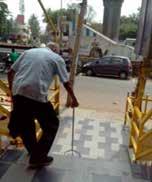


Perceiving safety & ease to approach junctions & to safely cross streets.
12 streets as samples selected. Survey module of 25 m stretch on every third street in the study area.
List of 26 inventory elements (each assigned with a code) that pose as barriers to mobility.
(Eg: Vehicle parking, encroachments, utility poles, debris, broken or missing sidewalks etc.)
05 junctions selected for investigation.
List of 08 inventory elements that pose dangers to crossings (Eg: Sidewalk, turning angles, uncontrolled crossing etc.)
3 Street-amenities interface (shopping, clinic, park, etc.)
Degree of barrierfree transition- entry into & exit fromamenities (built or unbuilt) to streets.
08 elderly frequented amenities selected for survey.
List of 05 inventory elements that hinder approach or entry to built and unbuilt facilities (Eg: Approach path to amenity, ramps/steps, floor finish etc.)
A path analysis led to conception of ‘Wholesome pedestrian mobility’ with a five-point objective, emphasizing eased walking experiences for elderly. Strategies are evolved as derivatives of the three audits & termed as ‘Elderly pedestrian-mobility framework’.
The design principles of elderly pedestrian realms are based on three main requisites - Navigation (walkable), Thresholds (crossings), Access (amenities). Each of these is essential to complete the walkable loop and shall remain incomplete when even one factor fails in design; unobstructed linearity along streets- sidewalks being the prime intent along with the added characteristics of supporting pedestrian infrastructure. Hence, design of the public space milieu in residential neighborhoods towards elderly walkability is a derivative of the understanding and measurement of the physical environment as a system of interconnected loop.
1. Patil, D R & Raj, M P. 2019. Modeling for Elderly mobility in urban neighbor hoods: Pedestrian Audits as tools of assessment & proposals. URBAN INDIA, a Journal of the National Institute of Urban affairs (NIUA) 39-1. pp112 to 133

2. WHO publication. April 2002. Active ageing: a policy framework. WHO/NMH/ NPH/02.8
3. National Policy for Senior Citizens. March 2011. Government of India.
4. Mukherji, S. TNN. 70% employed seniors forced to work. May 22, 2013
5. Pruthi et al., ‘Magnitude of pedestrian head injuries & fatalities in Bangalore, south India: A retrospective study from an apex neurotrauma center’, Indian J Med Res. Dec 2012; 136(6): 1039–1043. PMCID: PMC3612309
6. MoUD. 2008. Study of Traffic and Transportation Policies and strategies in urban areas in India, Final report.
Different studies have shown that architects and non-architects have different preferences Jeffrey and Reynolds (1999) studied the differences in aesthetic “code” of architects and non-architects, and argued that buildings constructed according to the “code” of architects is less likely to receive popular acclaim. Brown and Gifford (2001) concluded that typically, architects cannot predict the non-architect’s aesthetic evaluation of architecture. Therefore, a potential conflict exists between architects and non-architects, who may have different expectations from a building. The paper presents a computational methodology to quantify the differences in visual perception of originality of the tower typology between architects and non-architects.
Throughout the history of architecture, the tower typology has been a symbol of power and wealth, the identity of city skylines, and iconoclastic landmarks for human navigation. In many ways, towers (or skyscrapers) exhibit the pinnacle of architectural and engineering design (Peet 2011). This research uses the design of Absolute Tower D designed by MAD Architects - a twisting tower with elliptical floor plan - as the original design against which architects and non-architects are asked to evaluate the originality of design variants.
This is a summary of the original research paper. The original paper was published in Computer-Aided Architectural Design. Design Imperatives: The Future is Now (Eds. Gerber, D., Pantazis, E., Bogosian, B., Nahmad, A., Miltiadis, C.), CAAD Futures 2021. Communications in Computer and Information Science, vol 1465. Springer, Singapore in March 2022. DOI: https://doi. org/10.1007/978-981-19-1280-1_13. The paper is available at: https://link.springer.com/chapter/10.1007/978-981-19-1280-1_13.
This research uses a computational methodology that can be used to quantify (see Fig. 1) and predict any kind of subjective evaluation of design. The methodology combines crowdsourced design evaluation with the statistical power of deep learning. The methodology has four key steps mentioned as following –
1. Defining design variants: The first step in the process is to collect or generate de-sign variants that can be evaluated.
2. Crowd-sourced evaluation: The second step in the process is to get the design vari-ants evaluated by relevant group(s).
3. Neural network training: The third step in the process is to train a deep neural net-work with the evaluation data (output) and the design parameters (input) that de-fine the design variants. Through training, the neural network learns to appropriate the solution space.
4. Predicting subjective evaluation: On the completion of training of the neural net-work with sufficient accuracy, the fourth step is to predict subjective evaluations of a larger new set of design variants.
AND
VISUAL PERCEPTION OF DESIGN ORIGINALITY
Design variants of Absolute Tower D were defined and generated by a parametric Grasshopper definition of the original design. The original design can be parametrically represented by only five parameters – the two radii of the elliptical floor plan, total number of floors, floor to floor height (or total height) and total rotation (or floor to floor rotation). In order to have design variants of similar visual weightage, total number of floors and floor to floor height are not varied to generate design variants. In addition to the three other parameters of the original design, nine additional parameters are added to the parametric definition. These additional parameters change the shape of the floor plan from ellipse to a four-legged star to a square and to a rhombus, control the nature of the rotation of floor plates (linear or bezier), change the state of the balconies (present or absent), and scale the floor plates towards the top and the bottom of the tower.
The second step in the process of quantifying subjective evaluations is to evaluate the design variants. To accommodate testing data to measure the accuracy of neural network, this research has used 250 data samples (design variations) for crowd-sourced evaluation. Figure 2 shows 24 out of the 250 design variants. The 250 design variants are evaluated by sixty architects as well as sixty non-architects. The non-architect participants exclude people associated with other design fields. The architects and the non-architects were asked to rate the design variants against the following question –
“How would you rate the visual relationship of the displayed designs with respect to the reference design?”
A Likert scale was used to collect the evaluations that had qualitative descriptions of ‘Plagiarised’, ‘Similar’, ‘Different’, and ‘Original’ as categories. The design variants were shown alongside the reference design (original design). Each design variant has two originality scores – one for architects (Originality
score (ar)) and one for non-architects (Originality score (non_ar)). For every design variant i, the originality score is calculated by equation 1 as follows -
Originality score(i) = (∑n 1 L(i)(n)× W) ⁄ r (1)
where, i = Design variant identifier r = Number of Likert evaluations per design variant L = Likert evaluation W = 0.00, if L(i)(n) is ‘Plagiarised’ 0.33, if L(i)(n) is ‘Similar’ 0.67, if L(i)(n) is ‘Different’ 1.00, if L(i)(n) is ‘Original’
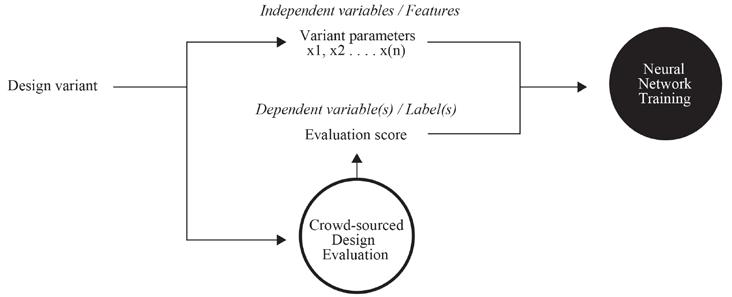
Correlation matrices were generated to understand which independent variables play a major role in the visual perception of originality. The analysis of the correlations reveals that seven out of the twelve independent variables are inversely correlated to the dependent variables. Floor plan mid-point movement (midpt_move) exhibits highest correlations with the originality scores of architects (r = 0.29) and non-architects (r = 0.22). This independent variable changes the shape of the plan from an ellipse to a four-legged star.
Radius 2 of floor plan (plan_r2) exhibits the second highest correlations with the originality scores of architects (r = 0.16) and non-architects (r = 0.21). This independent variable controls the horizontality of design variants, thereby reducing slenderness with increase in value. The nature of the two independent variables with highest correlations with dependent variables (midpt_move and plan_r2) indicates that when visually comparing towers (or design variants) of the same height, both architects and non-architects tend to subliminally concentrate more on visual features that horizontally control the overall silhouette of the towers.
Fig.
extrusion variant
Presence or absence of balcony (bal_state) has the lowest correlations with the originality scores of architects (r = -0.50) and non-architects (r = -0.49). Additionally, it exhibits the lowest absolute difference in correlations (|∆r| = 0.01) between architects and non-architects. This suggests that when visually comparing towers, both architects and non-architects tend to ignore features that affect local surface articulation.
Total rotation (tot_rot) exhibits the highest absolute difference in correlations (|∆r| = 0.20) between the originality scores of architects (r = -0.17) and non-architects (r = -0.37). This would appear to indicate that architects tend to be more visually sensitive towards rotation of floor plates. Conversely, nonarchitects tend to see rotated towers as a visually homogeneous group without much regard to finer differences in the amount of rotation.
The third step in the process is to train a neural network with the evaluation data. On the completion of training of the neural network with sufficient accuracy, the fourth step is to predict subjective evaluations of a larger set of design variants. The trained neural network model for architects can predict originality score of design variants with root mean square error of 0.08, R2 score of 0.81 and accuracy of 91.35%. The trained neural network model for non-architects can predict originality score of design variants with root mean square error of 0.07, R2 score of 0.83 and accuracy of 90.04%. As part of step 4, the two trained neural networks were used to predict the originality scores of 15,000 design variants.
The percentage distribution of the originality scores of 15,000 design variants by architects as well as non-architects are compared to gain insights. The nature of the percentage distribution bins indicates two differentiators between architects and non-architects (see Fig. 3). Firstly, the tallest bins
of architects are closer to ‘Original’ (1.00) than the tallest bins of non-architects. It implies that architects tend to be more lenient than non-architects at seeing design variants as original. The second differentiator is that the tallest bins of architects are taller than the tallest bins of non-architects. It implies that architects tend to have a higher consensus than non-architects at reading the visual perception of originality. Additionally, the numerical analysis of the originality scores reveals that an architect is 17.14 times likely to see a design variant as ‘Original’ instead of ‘Plagiarised’, whereas, for a non-architect, the likelihood drops down to 5.26 times.
Subsequently, the comparative relation between the originality scores by architects and non-architects was ascertained. The average originality score by architects (0.76) is 0.16 higher than the average originality score by non-architects (0.59). In other words, the average originality score by architects is 27.74% higher than the average originality score by non-architects. In as many as 92.01% of the 15,000 design variants, architects’ originality score is higher than non-architects’.
All of these observations reiterate that architects tend to be more lenient than non-architects at seeing design variants as original. It may be argued that architects are trained to observe the nuances of visual difference between artefacts. Consequently, what may seem like same artefacts to non-architects will look more varied (~ comparatively original) to architects. The other takeaway is that architects have a higher consensus than nonarchitects at evaluating the originality of design variants. This phenomenon may be attributed to similar rigour of academics and training of architects compared to a more diverse academic and professional background of non-architects.
Subjective evaluation of the visual perception of originality of the rotating tower typology by architects and non-architects is predicted by training two deep neural networks with crowdsourced data of 250 data samples. Use of neural network allows

Fig. 3: Percentage distribution of predicted originality scores by architects and non-architects better understand the aesthetic sensibilities of a client. The client may be asked to rate few design options generated by the parametric definition of a design concept. The options may be rated for a variety of keyword-driven subjective opinions, e.g., originality, beauty, appropriateness, etc. Subsequent to training a neural network with the collected data, design may be optimised in tune with the client’s subjective opinion(s) along with the regular objective design goals of energy consumption reduction and daylighting.
the appropriation of the entire solution space by using limited number of training data samples. Predictions of 15,000 design variants are tabulated to quantify the differences of originality scores between architects and non-architects. It is concluded that the average originality score by architects is 27.74% higher than the average originality score by non-architects. Within themselves, architects tend to have a higher consensus than non-architects at reading the visual perception of originality. Nonarchitects tend to see rotated towers as a visually homogeneous group without much regard to the amount of rotation.
The methodology of training a neural network on crowd-sourced data marks a departure from the top-down evaluative guidelines published by experts to a more inclusive bottom-up evaluation by end users. The methodology can be used to quantify subjective evaluation of any kind. Beauty or safety perception of urban streetscapes can be predicted as a part of urban design aid by training a neural network with crowd-sourced ratings of pictures of urban streetscapes.
The outcome of this study has implications on the decisionmaking of cityscape preservation and on the architect-client interaction. The decision to preserve or facelift properties and precincts in cities are usually taken by architects, planners, art historians and politicians. The quantitative difference in visual perception of design between architects and non-architects indicates that without direct representation of residents, such a decision-making body may miss out on properties and/or precincts that may have sentimental value for the residents. Secondly, the methodology used in this paper can be used to
1. Brown, G., Gifford, R.: Architects predict lay evaluations of large contemporary buildings: Whose conceptual properties?. Journal of Environmental Psychology 21(1), 93-99 (2001).
2. Jeffrey, D., Reynolds, G.: Planners, Architects, the Public, and Aesthetics Factor Analysis of Preferences for Infill Developments. Journal of Architectural and Plan ning Research 16(4), 271-288 (1999).
3. Peet, G.: The Origin of the Skyscraper. CTBUH Journal I, 18-23 (2011).

The design of Airaa Academy is predicated on the idea of ‘Participatory Space’. The programme components (classrooms, staff rooms, offices, and so on) are shuffled around a simple grid to afford spaces of multiple scales, for large congregations and quiet reflection. This modulated, naturally ventilated and lit central volume celebrates the idea of chance encounters and Louis Kahn’s notion of the school as a place to exchange realisations under the shade of the trees, where the teacher does not know she’s the teacher and the students don’t know they are the students. In this way the school becomes a place of casual interaction and intuitive learning.
Directed by Sunitha Kondur and Bijoy Ramachandran, Hundredhands is a multidisciplinary design studio whose work draws on a keen sense of the urban. In their projects, often represented in patiently executed analytical drawings, the architects have redirected their focus on the urban context by returning to the questions of scale, character, spatial and visual impact, and remaking the public domain, all of which is so vital to the tempestuous urbanism of Indian cities.

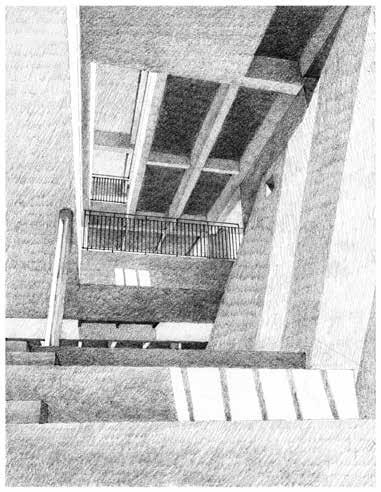
These ‘in-between’ spaces reflect Kahn’s notion of a society of rooms. The circulation spine has varied configurations from large platforms for congregation, balconies for prospect out onto the play fields and beyond, quiet nooks for small groups to work, and bridges across various levels offering wide vistas within and beyond the building. This space has a large skylight above. Cool air comes in from the ground floor, from the large open expanse of the play fields travels up this variegated internal space, gets heated up under the skylight and moves out through large openings on the top floor. Though brilliantly lit the space is cool and comfortable throughout the year.
These ‘in-between’ spaces reflect Kahn’s notion of a society of rooms. The circulation spine has varied configurations from large platforms for congregation, balconies for prospect out onto the play fields and beyond, quiet nooks for small groups to work, and bridges across various levels offering wide vistas within and beyond the building. This space has a large skylight above. Cool air comes in from the ground floor, from the large open expanse of the play fields travels up this variegated internal space, gets heated up under the skylight and moves out through large openings on the top floor. Though brilliantly lit the space is cool and comfortable throughout the year.





The primary school is housed in large environments with two levels – a mezzanine with areas for instruction and a large lower level where groups of mixed-age children work and play. These environments are naturally lit, ventilated and have access to landscaped terraces for outdoor activities. Though organised on a regular grid which is expressed in the walls and roof, the playful organisation of the program creates a sense of fluidity and informality.

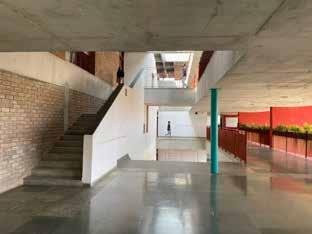
Gardens are integrated into all the terraces on multiple levels and a lush tropical garden splits the reception area from the rest of the school metaphorically separating the profane from the sacred world. One is always connected to this notion of ground on all the floors.

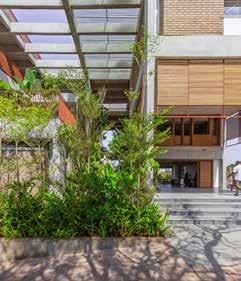

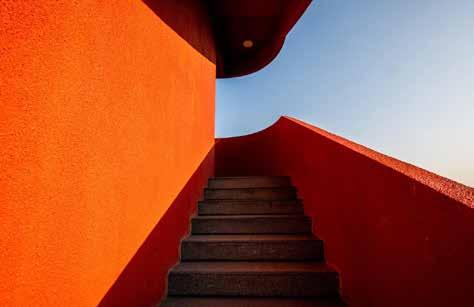
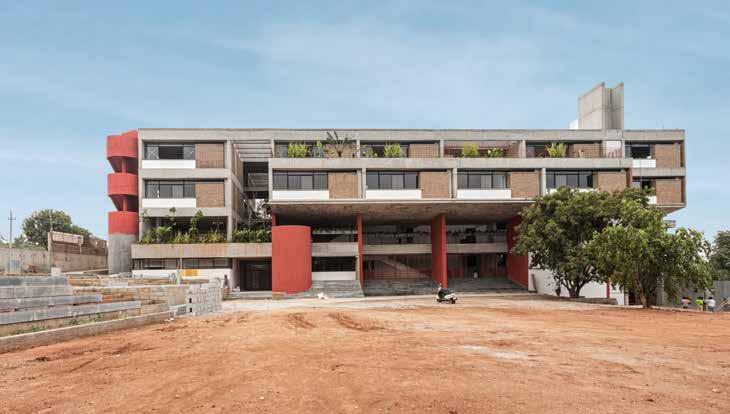
As an eco-sensitive architecture and landscape design firm, Idea Design focuses on everything one can see, hear, smell, touch and sense. The firm looks to question how physical environments, from open spaces and landscapes, roads and infrastructure, to proposed buildings, affect people. The practice aims to unite function, aesthetics, environmental qual ity and economic considerations to give their projects a distinctive sense of place and identity.
As an eco-sensitive architecture and landscape design firm, Idea Design focuses on everything one can see, hear, smell, touch and sense. The firm looks to question how physical environments, from open spaces and landscapes, roads and infrastructure, to proposed buildings, affect people. The practice aims to unite function, aesthetics, environmental qual ity and economic considerations to give their projects a distinctive sense of place and identity.
As an eco-sensitive architecture and landscape design firm, Idea Design focuses on everything one can see, hear, smell, touch and sense. The firm looks to question how physical environments, from open spaces and landscapes, roads and infrastructure, to proposed buildings, affect people. The practice aims to unite function, aesthetics, environmental quality and economic considerations to give their projects a distinctive sense of place and identity.
by the government of Tamil Nadu, is an environmentally significant project that has become a model for Urban Landscape Ecological Restoration. The project restores 58 acres of the Adyar Creek, which is part of the Adyar Estuary and consists of 350 acres of Adyar River’s sea mouth.
project that has become a model for Urban Landscape Ecological Restoration. The project restores 58 acres of the Adyar Creek, which is part of the Adyar Estuary and consists of 350 acres of Adyar River’s sea mouth.

This Tholkappia Poonga Ecological Restoration Project, initiated by the government of Tamil Nadu, is an environmentally significant project that has become a model for Urban Landscape Ecological Restoration. The project restores 58 acres of the Adyar Creek, which is part of the Adyar Estuary and consists of 350 acres of Adyar River’s sea mouth.
The Chennai corporation had used the creek as a garbage dump yard, with several city level storm water and solid waste drains draining into the sea mouth through this patch of land. The area existed in complete neglect, the water PH was acidic, chemical contamination was high and the ecosystem was found to be degraded.
The Chennai corporation had used the creek as a garbage dump yard, with several city level storm water and solid waste drains draining into the sea mouth through this patch of land. The area existed in complete neglect, the water PH was acidic, chemical contamination was high and the ecosystem was found to be degraded.
The Chennai corporation had used the creek as a garbage dump yard, with several city level storm water and solid waste drains draining into the sea mouth through this patch of land. The area existed in complete neglect, the water PH was acidic, chemical contamination was high and the ecosystem was found to be degraded.


1 2 3 4 5 6 7 8
Medicinal Plant Garden
Sacred Grove
Aromatic Garden Child and Mother Care Garden
Navagraha Garden
Barn Own Point Chelonian Garden Butterfly Garden
LEGEND
Tropical Dry Evergreen Forest Hillock Mangroves
Mangrove Associates Meadows and Grass Lands Reeds and Marshes Mud Flats

The history and geomorphological evolution of Adyar river and estuary was studied. This included its seasonal behavior, cyclical changes and the impact of urbanization on this eco sensitive area. Various ecosystems of the Coromandel coast were visited by the team for detailed case studies to understand the flora and
Fresh Water Pond
Storm Water Retention Reservoir Wetlands
Storm Water Inflow Brackish Water Wetlands Fields
Farm and Vegetable Garden Nursery Avenue Trees
of Estuary, which included a baseline survey of the status of the current ecosystem. An ecological site analysis was conducted and detailed assessment of edge conditions were done for the 58 acres of site area. The findings indicated how degraded the ecosystem was, when compared to other estuaries along the
An ecological restoration plan was therefore devised for 58 acres of the site area. The concept design had to consider city level
Large earthen berms were proposed along the periphery of the park to bury all the debris and rubbish below them. This enabled a visual

With the help of the local community, artists and student groups, the estuary was restored into a beautiful oasis with fresh water and brackish water ecosystems, developing its own forests, swamps, mudflats and mangroves. The effort resulted in creating a picturesque ecosystem, with over 100 species of birds and fish, that are seen thriving among countless amphibians, reptiles and small mammals.The Tholkappia Poonga Ecological Restoration project has today become a classic example of a successful urban ecological restoration project in the country.
With the help of the local community, artists and student groups, the estuary was restored into a beautiful oasis with fresh water and brackish water ecosystems, developing its own forests, swamps, mudflats and mangroves. The effort resulted in creating a picturesque ecosystem, with over 100 species of birds and fish, that are seen thriving among countless amphibians, reptiles and small mammals.The Tholkappia Poonga Ecological Restoration project has today become a classic example of a successful urban ecological restoration project in the country.
artists was with ecosystems, swamps, effort ecosystem, birds among and Poonga has successful project
The history and geomorphological evolution of Adyar river and estuary was studied. This included its seasonal behavior, cyclical changes and the impact of urbanization on this eco sensitive area. Various ecosystems of the Coromandel coast were visited by the team for detailed case studies to understand the flora and fauna of freshwater and brackish water ecosystems of the coast. Detailed urban design studies were conducted in the 350 acres of Estuary, which included a baseline survey of the status of the current ecosystem. An ecological site analysis was conducted and detailed assessment of edge conditions were done for the 58 acres of site area. The findings indicated how degraded the ecosystem was, when compared to other estuaries along the coromandel coast.


An ecological restoration plan was therefore devised for 58 acres of the site area. The concept design had to consider city level storm water drains, tidal variations in the brackish water ecosystem of the estuary, managing huge amounts of debris, rubbish and organic waste. A detailed technical plan for ecological restoration was developed. The entire park was divided into a combination of freshwater and brackish
water ecosystems. The plan involved solutions for total water management during storms, tides, spring tides, floods and drought situations.
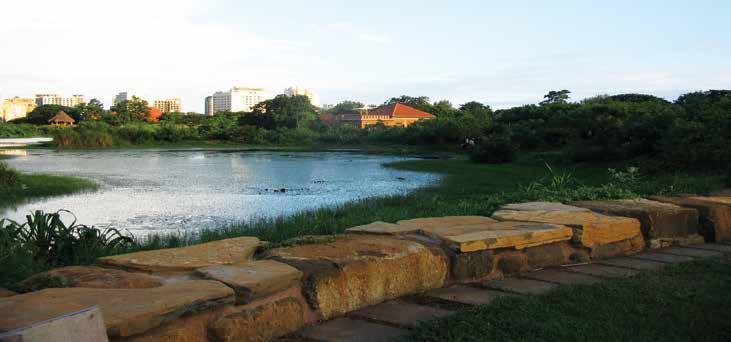
Large earthen berms were proposed along the periphery of the park to bury all the debris and rubbish below them. This enabled a visual and sound buffer from the surrounding urban edges bringing in much needed privacy that helped in the restoration of plants as well as terrestrial, aquatic and avian fauna.
With the help of the local community, artists and student groups, the estuary was restored into a beautiful oasis with fresh water and brackish water ecosystems, developing its own forests, swamps, mudflats and mangroves. The effort resulted in creating a picturesque ecosystem, with over 100 species of birds and fish, that are seen thriving among countless amphibians, reptiles and small mammals.The Tholkappia Poonga Ecological Restoration project has today become a classic example of a successful urban ecological restoration project in the country.
OF THE

Indesign is a Kottayam based architectural practice, headed by James Joseph. The firm, over the last two decades, has successfully completed a plethora of projects within residential and conservational typologies. Indesign aims to cultivate their creative zest by working on projects that are innovative, responsive and responsible to the environment and society.
Indesign is a Kottayam based architectural practice, headed by James Joseph. The firm, over the last two decades, has successfully completed a plethora of projects within residential and conservational typologies. Indesign aims to cultivate their creative zest by working on projects that are innovative, responsive and responsible to the environment and society.
Set in an idyllic locale, with nature at her pristine best, Elakadu Vasathi is a haven of peace and tranquillity. Utilising minimal building materials, the farmhouse is a carefully crafted creation that blends harmoniously with its surroundings and creates an ambience that is truly magical.
Set in an idyllic locale, with nature at her pristine best, Elakadu Vasathi is a haven of peace and tranquillity. Utilising minimal building materials, the farmhouse is a carefully crafted creation that blends harmoniously with its surroundings and creates an ambience that is truly magical.
Minimal impact on nature was a focal point of the design process, from the initiation of the project. A site with a huge rock formation, covered with thorny outcrops, which lay neglected and unfit for cultivation, was chosen for the farmhouse. Not a single truck load of soil was either taken out from the site or brought in. A fifteen year old Manjiyam tree was the only tree that was cut, and the timber, later used for furniture.
Minimal impact on nature was a focal point of the design process, from the initiation of the project. A site with a huge rock formation, covered with thorny outcrops, which lay neglected and unfit for cultivation, was chosen for the farmhouse. Not a single truck load of soil was either taken out from the site or brought in. A fifteen year old Manjiyam tree was the only tree that was cut, and the timber, later used for furniture.
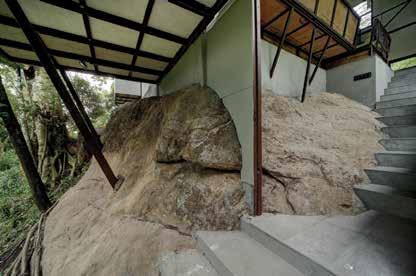
Elakadu Vasathi is the result of having ventured on a path less trodden, to address pertinent questions of land and material. Care was taken to leave behind as faint a carbon footprint as possible, while keeping construction and operational costs at a possible minimum. No two structures were identically designed as each intervention employed a sensitive approach to challenges of terrain, user requirements and spatial deliberations.
Elakadu Vasathi is the result of having ventured on a path less trodden, to address pertinent questions of land and material. Care was taken to leave behind as faint a carbon footprint as possible, while keeping construction and operational costs at a possible minimum. No two structures were identically designed as each intervention employed a sensitive approach to challenges of terrain, user requirements and spatial deliberations.
The 133 sq.m. farmhouse is designed in such a manner that the large, glass faced, living space acts as the core of the house, blurring the inside outside divide to create a feeling of unhindered expanse. The spaces amalgamate as a single entity, creating a perfect place for the family to come together. The living space is designed to be flexible, with the ability to be used in multiple formats. The seating in the living area can be used for the dining space, while the couch in the living area along with the dining seating, can be converted into beds. The space carved by the staircase, meanwhile, provides for a sofa-cumbed. The steps are carved along the rock formation. In a similar fashion, the ceiling of the ground floor bedroom and verandah form the cot on the first floor, accessed through the bridge.

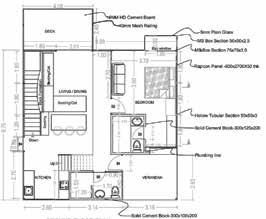


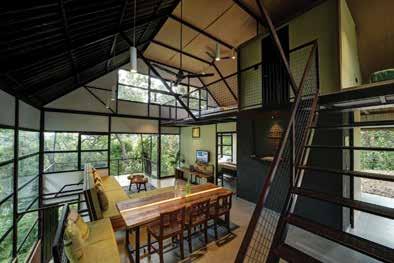

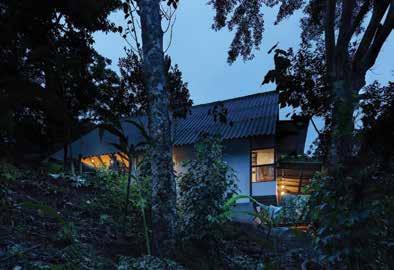

The design attempts to intervene in the compelling landscape with the use of minimal materials. The entire structure is designed with square tubular sections. The spacing of structural members was designed to ensure no material wastage, and to create door and window frames where necessary. The lengths of the tubular sections were calculated and fixed such that the smallest pieces and off-cuts were used either as furniture or lighting fixtures. Paper tubes were cut and used as lighting fixtures as well. Walls where necessary, were built with Everest Rapicon panels, placed on track with tongue and groove joints between tubular load bearing members. These panels could be dismantled and reused as and when necessary.
The design attempts to intervene in the compelling landscape with the use of minimal materials. The entire structure is designed with square tubular sections. The spacing of structural members was designed to ensure no material wastage, and to create door and window frames where necessary. The lengths of the tubular sections were calculated and fixed such that the smallest pieces and off-cuts were used either as furniture or lighting fixtures. Paper tubes were cut and used as lighting fixtures as well. Walls where necessary, were built with Everest Rapicon panels, placed on track with tongue and groove joints between tubular load bearing members. These panels could be dismantled and reused as and when necessary.





Interior Design - Non Residential - WINNER
Architect Deepak Guggari
Pimpri-Chinchwad
Pimpri-Chinchwad
Architect Deepak GuggariArchitect Deepak Guggari
VDGA
This workspace for an electronic components manufacturing unit called for a design that resonated with the brand’s philosophy around constant innovation . The interior planning was approached with a unique concept of using honeycomb cardboard partition walls. In addition to being recyclable, biodegradable and cost effective,the material’s hexagonal inner cellular structure provides exceptional compression strength and rigidity.
This workspace for an electronic components manufacturing unit called for a design that resonated with the brand’s philosophy around constant innovation . The interior planning was approached with a unique concept of using honeycomb cardboard partition walls. In addition to being recyclable, biodegradable and cost effective,the material’s hexagonal inner cellular structure provides exceptional compression strength and rigidity.
This workspace for an electronic components manufacturing unit called for a design that resonated with the brand’s philosophy around constant innovation . The interior planning was approached with a unique concept of using honeycomb cardboard partition walls. In addition to being recyclable, biodegradable and
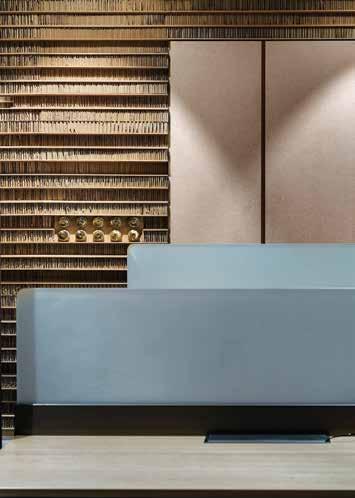

VDGA
VDGA
Founded by Architect Deepak Guggari, VDGA focuses on deriving architectural solutions through study, analysis and exploration of visual, spatial, formal, social and technological ideas. The studio’s goal lies in creating ‘timeless meaningful spaces’ and continues to explore intelligent ideas around the optimum use of natural light, ventilation and locally available natural building materials. The design philosophy is based on understanding the needs of the user and developing responsive designs that are culturally and geographically rooted. The Studio has a range of ongoing projects, which includes hospitality,institutional, residential, corporate and neighbourhood development projects in India, U.A.E and Vietnam.
Founded by Architect Deepak Guggari, VDGA focuses on deriving architectural solutions through study, analysis and exploration of visual, spatial, formal, social and technological ideas. The studio’s goal lies in creating ‘timeless meaningful spaces’ and continues to explore intelligent ideas around the optimum use of natural light, ventilation and locally available natural building materials. The design philosophy is based on understanding the needs of the user and developing responsive designs that are culturally and geographically rooted. The Studio has a range of ongoing projects, which includes hospitality,institutional, residential, corporate and neighbourhood development projects in India, U.A.E and Vietnam.
Founded by Architect Deepak Guggari, VDGA focuses on deriving architectural solutions through study, analysis and exploration of visual, spatial, formal, social and technological ideas. The studio’s goal lies in creating ‘timeless meaningful spaces’ and continues to explore intelligent ideas around the optimum use of natural light, ventilation and locally available natural building materials. The design philosophy is based on understanding the needs of the user and developing responsive designs that are culturally and geographically rooted. The Studio has a range of ongoing projects, which includes hospitality,institutional, residential, corporate and neighbourhood development projects in India, U.A.E and Vietnam.
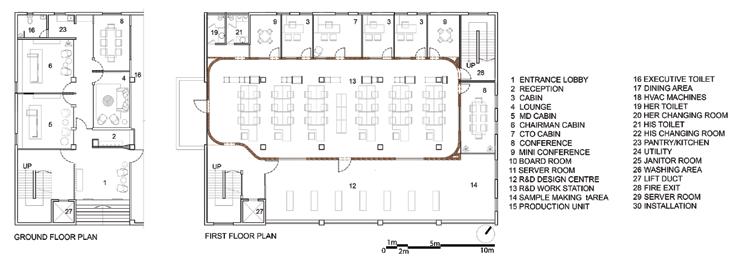
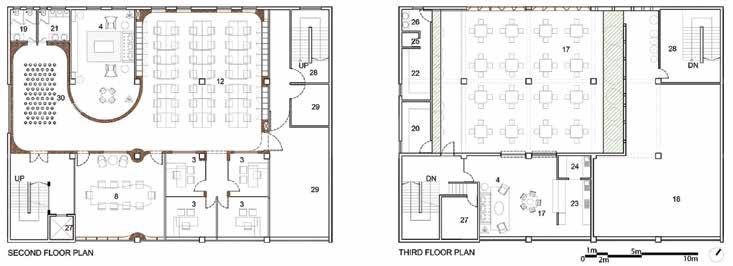


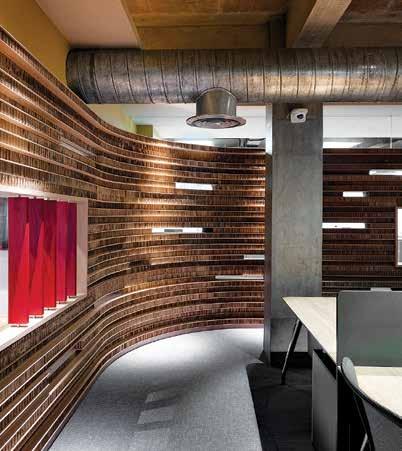
The studio’s observations of the section of the material developed their aesthetic approach. A transverse cut through the nodes of the hexagons revealed sharper fins whereas a longitudinal cut through the board revealed uneven, wide bands. This combination of sharper fins and wider bands when used in combination with the MDF bands, created interesting patterns with light and shadow.
The studio’s observations of the section of the material developed their aesthetic approach. A transverse cut through the nodes of the hexagons revealed sharper fins whereas a longitudinal cut through the board revealed uneven, wide bands. This combination of sharper fins and wider bands when used in combination with the MDF bands, created interesting patterns with light and shadow.
Free-flowing curved partition walls were composed of layers of honeycomb boards.The heights of the walls were dictated by the thickness of the boards and layers. The walls required precise workmanship, demanding careful cutting of the board and sandwiching it between layers of MDF.Openings were created along the walls to add visual interest.
Free-flowing curved partition walls were composed of layers of honeycomb boards.The heights of the walls were dictated by the thickness of the boards and layers. The walls required precise workmanship, demanding careful cutting of the board and sandwiching it between layers of MDF.Openings were created along the walls to add visual interest.

The interior scheme responded to the raw, industrial nature of the honeycomb cardboard and followed suit. Electrical and AC ducts were kept exposed .Natural stones like Cudappah, Basalt, Dholpur, and Tandur have been used extensively in the interiors. Exposed brick walls and natural stone evokes an earthy atmosphere in the enclosed dining and a semi-open canteen on the terrace.
The interior scheme responded to the raw, industrial nature of the honeycomb cardboard and followed suit. Electrical and AC ducts were kept exposed .Natural stones like Cudappah, Basalt, Dholpur, and Tandur have been used extensively in the interiors. Exposed brick walls and natural stone evokes an earthy atmosphere in the enclosed dining and a semi-open canteen on the terrace.
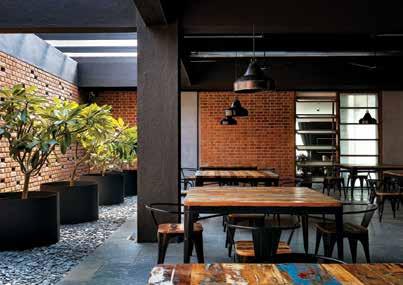
Mumbai Architect
This regenerated public space located in Mumbai was once a derelict, neglected, narrow staircase, functioning as a dump-yard, frequented by drug addicts. Abraham John architects approached the local councillor with an ambitious plan to convert the staircase into a multipurpose community space, in a city starved of open spaces. 3 years and numerous hiccups later, the Stephen’s steps were completed in 2019, giving close to 2000 sqm of space back to the city: 5 stories high, 100 m long, 12 m wide. This place making project created an efficient, eclectic space that knitted together the cultural and communal fabric of the area, encouraging citizens to employ alternate modes of transport.
This regenerated public space located in Mumbai was once a derelict, neglected, narrow staircase, functioning as a dump-yard, frequented by drug addicts. Abraham John architects approached the local councillor with an ambitious plan to convert the staircase into a multipurpose community space, in a city starved of open spaces. 3 years and numerous hiccups later, the Stephen’s steps were completed in 2019, giving close to 2000 sqm of space back to the city: 5 stories high, 100 m long, 12 m wide. This place making project created an efficient, eclectic space that knitted together the cultural and communal fabric of the area, encouraging citizens to employ alternate modes of transport.

This regenerated public space located in Mumbai was once a derelict, neglected, narrow staircase, functioning as a dump-yard, frequented by drug addicts. Abraham John architects approached the local councillor with an ambitious plan to convert the staircase into a multipurpose community space, in a city starved of open spaces. 3 years and numerous hiccups later, the Stephen’s steps were completed in 2019, giving close to 2000 sqm of space back to the city: 5 stories high, 100 m long, 12 m wide. This place

Abraham John Architects is a multidis ciplinary Architecture, interior design, landscaping and urban planning studio founded in 1967 by Abraham John. The Bombay based practice combines the strength of experience with a contempo rary perspective and a focused attention to detail. The design approach of the studio focussing on reconnecting architecture with nature, make optimum use of space, natural ma terials, lighting & landscape to reinvent and transform spaces.
Abraham John Architects is a multidisciplinary Architecture, interior design, landscaping and urban planning studio founded in 1967 by Abraham John. The Bombay based practice combines the strength of experience with a contemporary perspective and a focused attention to detail. The design approach of the studio focussing on reconnecting architecture with nature, make optimum use of space, natural materials, lighting & landscape to reinvent and transform spaces.
Abraham John Architects is a multidis ciplinary Architecture, interior design, landscaping and urban planning studio founded in 1967 by Abraham John. The Bombay based practice combines the strength of experience with a contempo rary perspective and a focused attention to detail. The design approach of the studio focussing on reconnecting architecture with nature, make optimum use of space, natural ma terials, lighting & landscape to reinvent and transform spaces.
Additional space was acquired within the site by absorbing a part of the street and getting rid of illegal parking. Mural artists who were invited through an open call, and helped by local volunteers, and children from the adjoining slum, brought colour to the steps. A 5 weekend long art and community festival was organised to celebrate and bring to life this new open for all civic space.
Additional space was acquired within the site by absorbing a part of the street and getting rid of illegal parking. Mural artists who were invited through an open call, and helped by local volunteers, and children from the adjoining slum, brought colour to the steps. A 5 weekend long art and community festival was organised to celebrate and bring to life this new open for all civic space.


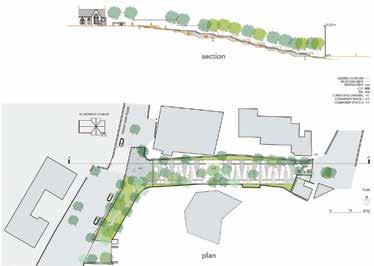
The St. Stephen’ steps project now stands to enhance the quality of life for the local families and communities. This cycle-friendly shortcut has become home to people of all ages, genders, cultures and socioeconomic backgrounds who are seen here everyday, cycling, playing, singing and enjoying this public space. During community events, one can see the affluent and the poor sit together on the same steps, sharing viewing space of all forms of art, free of cost.
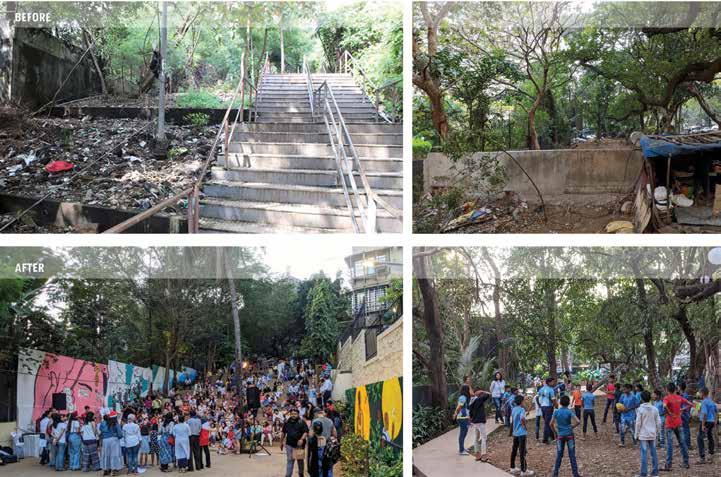

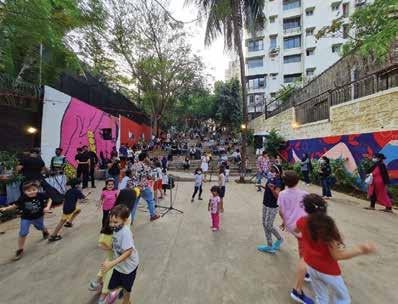


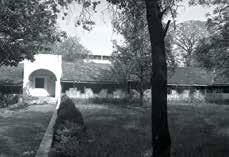

Nashik Architect Dhananjay Shinde
Located in the heart of the proliferating city of Nashik, within the context of constant change and development, the Udajee Early Years project dealt with the restoration of a boarding facility established in 1920, for the Maratha Vidya Prasarak Samaj school. The campus in its 100 odee years of existence, has been a time honoured expression of community space, and has developed an irreplaceable relationship with the social and the physical fabric of the city. A textbook example of early 19th century domestic architecture prevalent in rural Maharashtra, the single storeyed structure was a composition of modest spaces arranged around a continuous running veranda.
Located in the heart of the proliferating city of Nashik, within the context of constant change and development, the Udajee Early Years project dealt with the restoration of a boarding facility established in 1920, for the Maratha Vidya Prasarak Samaj school. The campus in its 100 odee years of existence, has been a time honoured expression of community space, and has developed an irreplaceable relationship with the social and the physical fabric of the city. A textbook example of early 19th century domestic architecture prevalent in rural Maharashtra, the single storeyed structure was a composition of modest spaces arranged around a continuous running veranda.
Located in the heart of the proliferating city of Nashik, within the context of constant change and development, the Udajee Early Years project dealt with the restoration of a boarding facility established in 1920, for the Maratha Vidya Prasarak Samaj school. The campus in its 100 odee years of existence, has been a time honoured expression of community space, and has developed an irreplaceable relationship with the social and the physical fabric of the city. A textbook example of early 19th century domestic architecture prevalent in rural Maharashtra, the single storeyed structure was a composition of modest spaces arranged around a continuous running veranda.
The firm headed by Dhananjay Shinde creates a versatile body of work ranging from residential and commercial to health care, educational and restoration. In the last 30 years, the firm has to their credit a wide spectrum of projects executed with sensitive detailing and Design flexibility.
The firm headed by Dhananjay Shinde creates a versatile body of work ranging from residential and commercial to health care, educational and restoration. In the last 30 years, the firm has to their credit a wide spectrum of projects executed with sensitive detailing and Design flexibility.
The firm headed by Dhananjay Shinde creates a versatile body of work ranging from residential and commercial to health care, educational and restoration. In the last 30 years, the firm has to their credit a wide spectrum of projects executed with sensitive detailing and Design flexibility.
Owing to the harsh exposure to tropical monsoons and with no major recorded repairs, the three acre campus with over 22,000 square feet of built space was abandoned and left in neglect for over a decade. The orthogonally formed campus consisted of multiple structures, and was incrementally developed to meet spatial requirements over time.The ambition of this restoration project thus lay in treating this heritage campus with utmost respect, considering the ethos of school. The restoration therefore proposed a measured intervention that confronted the existing built environment through simple mediations.
Owing to the harsh exposure to tropical monsoons and with no major recorded repairs, the three acre campus with over 22,000 square feet of built space was abandoned and left in neglect for over a decade. The orthogonally formed campus consisted of multiple structures, and was incrementally developed to meet spatial requirements over time.The ambition of this restoration project thus lay in treating this heritage campus with utmost respect, considering the ethos of school. The restoration therefore proposed a measured intervention that confronted the existing built environment through simple mediations.
Owing to the harsh exposure to tropical monsoons and with no major recorded repairs, the three acre campus with over 22,000 square feet of built space was abandoned and left in neglect for over a decade. The orthogonally formed campus consisted of multiple structures, and was incrementally developed to meet spatial requirements over time.The ambition of this restoration project thus lay in treating this heritage campus with utmost respect, considering the ethos of school. The restoration therefore proposed a measured intervention that confronted the existing built environment through simple mediations.
The existing building was restored to house a Kindergarten and an Education museum. The design process started by following the same architectural language as the historic structures. Along with reviving a landmark for the city, the aim was also to create a public space for Nashik, that could bring together people from varied backgrounds and cultures.
The existing building was restored to house a Kindergarten and an Education museum. The design process started by following the same architectural language as the historic structures. Along with reviving a landmark for the city, the aim was also to create a public space for Nashik, that could bring together people from varied backgrounds and cultures.
The existing building was restored to house a Kindergarten and an Education museum. The design process started by following the same architectural language as the historic structures. Along with reviving a landmark for the city, the aim was also to create a public space for Nashik, that could bring together people from varied backgrounds and cultures.
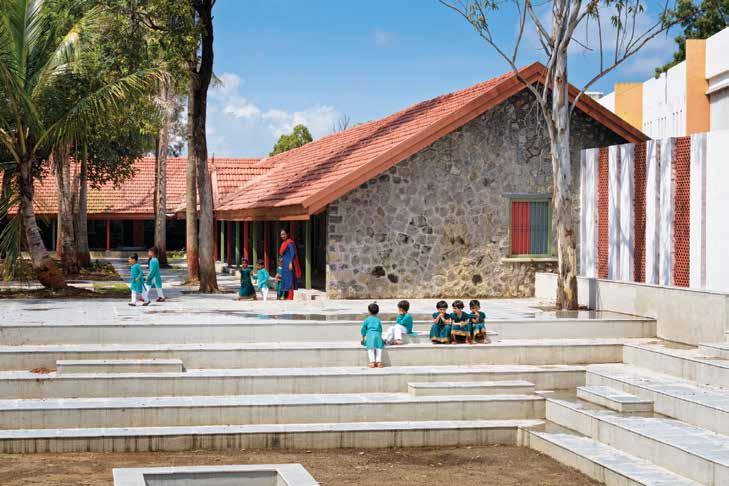
The perceptively simple plan, two sizable inward-looking buildings existed on a site that were divided by a thoroughfare connecting to an industrial workshop beyond. This in-between space was viewed as an opportunity to re-evaluate and redefine the relationship between the spatial design of the campus. By providing an alternative road to the workshop, a large pedestrian plaza was created, highlighted by a 300 seater amphitheatre and garden areas. The pedestrian plaza with large shady trees, and the structure’s long veranda create a much needed public space through a meaningful intervention that respects the planning history of the site. Being the collective heart of the plan, this central
The perceptively simple plan, two sizable inward-looking buildings existed on a site that were divided by a thoroughfare connecting to an industrial workshop beyond. This in-between space was viewed as an opportunity to re-evaluate and redefine the relationship between the spatial design of the campus. By providing an alternative road to the workshop, a large pedestrian plaza was created, highlighted by a 300 seater amphitheatre and garden areas. The pedestrian plaza with large shady trees, and the structure’s long veranda create a much needed public space through a meaningful intervention that respects the planning history of the site. Being the collective heart of the plan, this central open space also attempts to
open space also attempts to tie the disjoint blocks and render a defined articulation to the scheme. The verandahs extend into various paved and landscaped sit-out spaces within the courtyard and create distinct microclimates and habitable spaces.

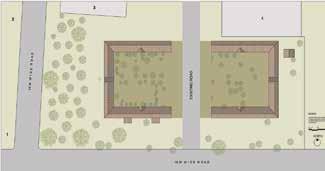
tie the disjoint blocks and render a defined articulation to the scheme. The verandahs extend into various paved and landscaped sit-out spaces within the courtyard and create distinct microclimates and habitable spaces.

The scope of the restoration work extended to the landscape as well; protecting the existing vegetation, whilst creating spaces of solitude to engage and learn, much like a Gurukul.The flexible articulation of spaces explored variations within in-class learning, extra-curricular activities and the idea of play in the open-to-sky courtyards.

The scope of the restoration work extended to the landscape as well; protecting the existing vegetation, whilst creating spaces of solitude to engage and learn, much like a Gurukul.The flexible articulation of spaces explored variations within in-class learning, extra-curricular activities and the idea of play in the open-to-sky courtyards.

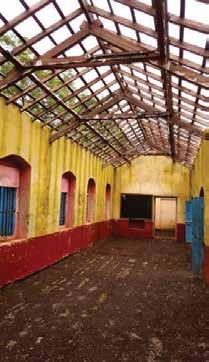
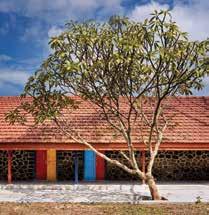
world character to the small cellular spaces. This Architectural language was carried forward within the renewed design vocabulary. The trusses were strengthened with metal fasteners and new mangalore tiles were installed with an additional decorative ceiling. The air gap between the two ceilings provided for much needed insulation. The flooring was completely refurbished with a combination of plain and patterned cement mosaic tiles.

doors
retained,
in bright primary colours. The
fauna
dimension to the educational experience,

the classrooms a landscape for the students to develop autonomy and curiosity. Many areas of the school complex are open, simple and reprogrammable, adapting to the multiple functional obligations.


Sanjay Puri Architects are listed in top 100 architects worldwide by Archdaily. Architizer, New York includes Sanjay Puri Architects in their list of the top 136 design firms worldwide. The firm tops the list of WA Community, UK award winners across the world. Winning the World Architecture Festival’s Best Housing object of the Year 2018 in Amsterdam and the World’s Best Residential building in the LEAF Awards, London, the firm has won over 225 awards including 150 international awards and 80 National awards.
Situated in the wine-growing region of India, the site for the Aria hotel is gently contoured, rising up 9m from the north to the south. The entrance to the hotel is located at the lowest level in the north, facing a large river and a dam with hills beyond. The southern side, meanwhile, rises up into hills in close proximity to the site.
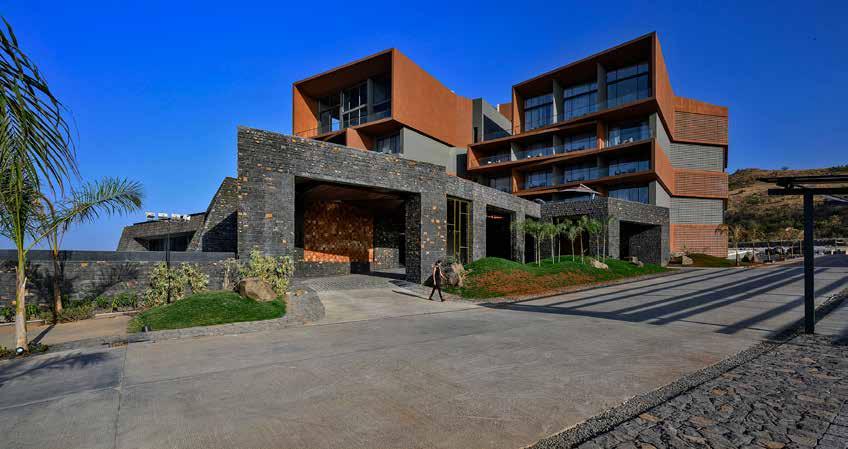
In addition to the 60 rooms and other typical hotel facilities, the client’s brief for Aria hotel included a large banquet hall of 15000 sq. ft area. Since the banquet hall would have large gatherings it is accessed directly from the road frontage at the
lowest level of the site. The public facilities including the hotel lobby, restaurant, bar, spa & business center occupy a higher level, 6 meters above the banquet hall entered directly from an ascending approach road.
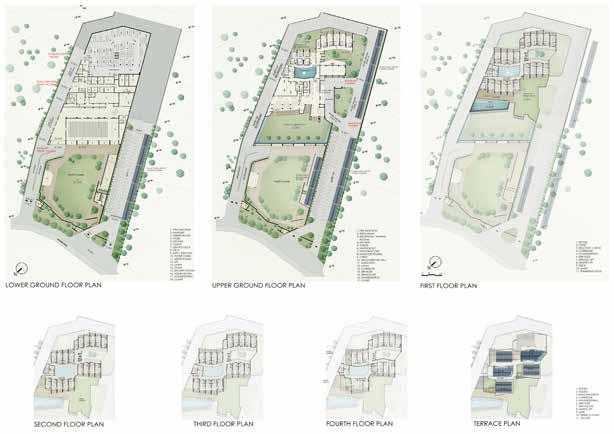

Each level of the hotel is integrated with the natural contours of the site, minimizing land cutting & landfill. No soil was taken out or brought into the site while constructing, making the construction both economical and sustainable. Over fifty percent of the walls were built with natural black basalt stone, available in close proximity to the site. All the circulation spaces are naturally lit & ventilated rendering the building energy efficient. Solar panels on the rooftop, over the banquet kitchen & parking areas, generate fifty percent of the electrical energy required for the hotel. Rainwater harvesting tanks, with water recycling & reuse, further add to the sustainable methods adopted for the design of this hotel. All the rooms, restaurants, spa & banquets open into sheltered balconies & decks that provide outdoor usable spaces whilst minimizing the heat gain into the internal volumes.


Aria Hotel is designed contextually, responding to the site contours, the views of the surroundings, the climate & the materials creating a web of experiences within its different volumes. The rooms at the higher level are oriented to face the river in the north or the immediate hills in the south, with open circulation spaces that are naturally ventilated with skylit courtyards. On each floor, the rooms form rectilinear cuboids that are angled differently creating balconies that frame the picturesque surroundings, with 2 floor high suites at the topmost levels. Painted in terracotta color stucco, these frames are juxtaposed with the black basalt stone walls of the lower floors.
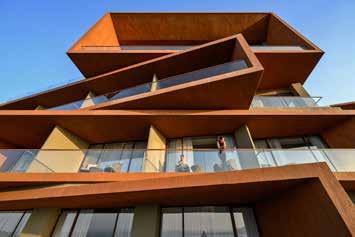


‘Sustainable Gain’ was taken as a pro bono project under the Corporate Social Responsibility (CSR) initiative of the Indian Institute of Architects and came under the aegis of an initiative called PRISM, ( Promoting Regional Schools to International Standards through Multiple Interventions). The project addressed the renovation of a 112-year old school, which was on the verge of closure. The design attempts to explore how architecture can become a medium that questions the societal imbalance arising from the inefficient functioning of public schools and the resultant growth of private schools.

Karapparambu GHSS emphasises the freedom for students to learn and grow by providing an open distinctive educational system. It encourages students to have a relationship with their environment and claim ownership of it. Sustainable schools are the teaching tool that brings together environmental education and community engagement. All three dimensions of sustainability, social, economic and environmental, are achieved through the project.
DAC believes that design is an evolutionary process, a principle that has been established as the core of the practice. Works of DAC lie in the realm of Architecture and Urban Design, with projects that involve revitalization and refurbishment of noted historical assets. The firm has won several state and national awards for their excellence in Architecture.
Calicut Architect Nimisha Hakkim
The school before renovation
Socially Responsible Architect - WINNER
The school is located near the Karaparamba junction at Calicut. An emphasis on the larger context, respecting the social fabric, combined with a resolve to address the social balance makes the project an architectural expression of commitment.
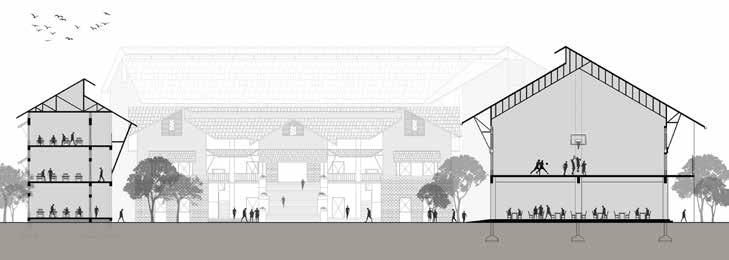

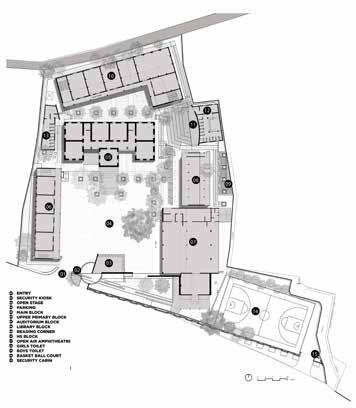
The renovation design of the school involved modifying certain structures and demolishing and rebuilding others. Architectural interventions with respect to size were consciously resorted to, to create feelings of pride and confidence towards the space and create positive energy within. An alternative perspective towards an educational space in which the opposing voids and valid spaces come together to bring about a sense of place, independence, and uniqueness; the educational building has been spread out and elaborated as an educational neighborhood, celebrating various views and landscapes, green spaces, playgrounds, and rest spaces.
With the aim of doing away with the visual language and perception of a typically imagined government school in India, the spatial design and form point the way for community involvement in schools. The green and sustainable design of the school is conceptualised by rainwater harvesting systems, solar panels and bio-composts, and incinerators. These features engender a social and environmental responsibility amongst the students.

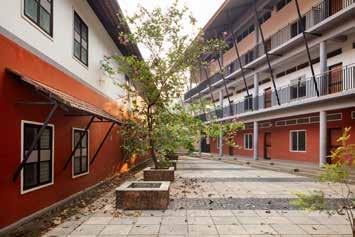
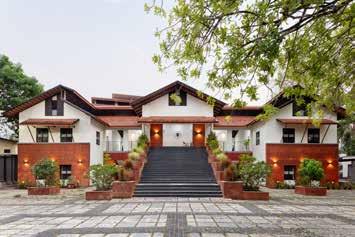

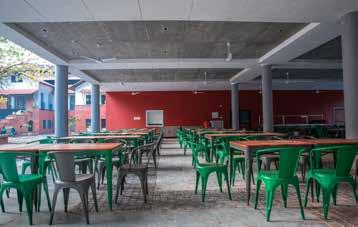
Edavani village is home to the Kurumba tribe, the smallest and most vulnerable group out of the three tribes found in Attappady. Located a hillock away from the inter-state border between Tamil Nadu and Kerala, Edavani village lies in the remote periphery of the forest belt, with very little access to forms of social and physical infrastructure.
The proposed project attempts a prototypic intervention towards affordable incremental housing, in remote, tribal contexts like Edavani. By way of learning from the local community and understanding indegenious forms of technology, the proposal aims to create selfsustaining life systems through the medium of architecture.


Zero studio is a creative design studio based at Malappuram, Kerala, driven towards creating contextual solutions, with the user at the centre of their design process and decisions. The studio values spaces, details and design considerations that prioritise the user. The studio’s approach is adaptive to each project, attempting to achieve a balance within functionality, aesthetics, context, climate, material, cost and project timeframe.



All hamlets in Edavani are situated within remote forested areas located in hill tracts with natural precipitous rocky ridges and deep gorges at ranges of 2000 to 3000 feet above sea levels. The indegenious huts in the region use multi-linear patterns to form the general layout of a typical hamlet. A wide courtyard once faced each hut to accommodate congregational activities. These spaces, however, were later encroached by dwelling units due to growing family sizes, leading to a loss of character and improper planning.

Basic elements of the design evolve from first principles of placemaking, creating congregational spaces, shared courtyards and multipurpose areas within dwellings. A spatial hierarchy is maintained from private to semi private spaces, eventually leading into common public spaces. This spatial system has been achieved through a strategic clustering of the unit modules.
The project attempts to revive vernacular building materials in the region by using materials like bamboo, reed and mud, such that villagers can build their own dwellings in incremental modules to meet with the growth of the household size.


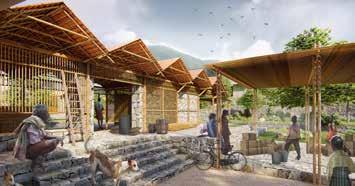

The unit module consists of three simple spaces in the form of a hall, a bedroom and a kitchen with an attached verandah. While these units are similar to the traditional units, they are elevated from the ground level to maintain thermal comfort, moisture resistance and continuous airflow within the structure. Shelter for livestock is accommodated under the elevated structure. A framework of wooden poles form the base of the flooring,upon which Hurudees or hollow mud blocks are placed and finally finished with hand printed clay floor tiles. The walls are constructed out of clay panels using bamboo fibers and mud, while the roof is covered with handmade roof tiles.


Dar & Wagh is an architecture and interior design studio founded by The practice believes in using drawing and diagramming as a process of arriving at structural and spatial order. The design approach celebrates the project drawings and diagrams, which are layered with materials and details responding to the character of place, idiosyncrasies of clients, climatic and financial constraints.
The existing Row-House sits within in the 1960’s Siglap district of Singapore. It is one of the first post-independence developments and owners of such row houses are ‘encouraged’ to conserve their facades by the Urban Authority. The house sits within a 24 m x 6.8 m plot. The existing interior space was dark and heavily dependent on artificial light and ventilation. The client’s ever changing collection of possessions and curios guided the design of a neutral canvas of well proportioned, interconnected spaces.
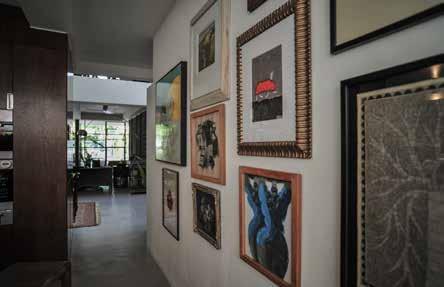

The floor and ceiling were opened up to create a skylight, which intersects with the geometry of the existing timber trusses in the center of the house. Perforated aluminium fins, shaped like fish scales, were designed to temper the glare of the harsh, tropical light. The ensuing patterns of light and shadow are captured in the court while creating a living environment bathed in soft light.
Once the staircase was realigned, the ground floor subscribed to an open floor planThe upper floor has small rooms that offer cozy,enclosed spaces in contrast to the interconnected living-dining-kitchen.



The clean contemporary interior palette consisted of a raw polished cement floor offset against crisp white stucco. Dark stained joinery adds warmth and is reminiscent of traditional hardwood Peranakan furniture of South-East Asia. Within this backdrop, the stair and railings in black metal and woven brass add a layer of detail.
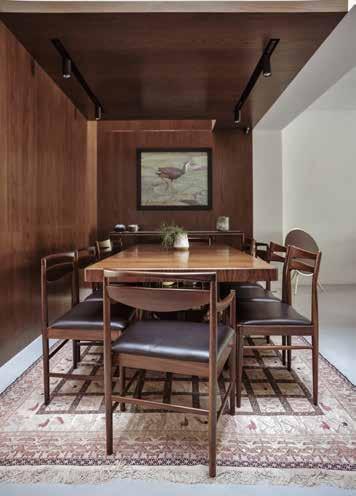

The house, once planned with modernist rigour had been through numerous owners and their iterations. The design approach to the street façade was to bring back its former modernist image,layered within verdant tropical greens of the entry garden.
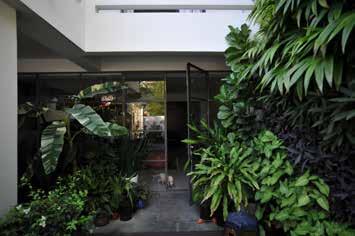
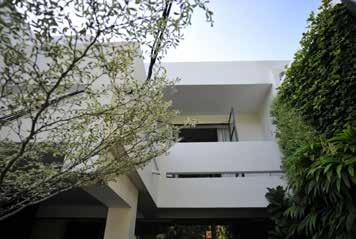
Isometeric plans-new vs old

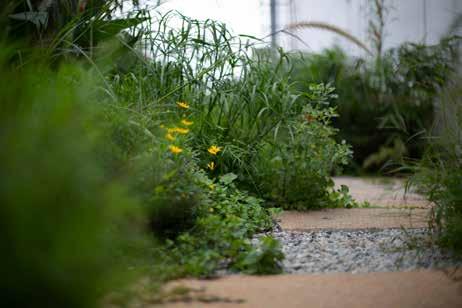
Bangalore International Centre, Bangalore
Architect Varna S. DharFounded by Varna Shashidhar, VSLA is a Bangalore based landscape practice that explores hands-on approaches in the creation of contextual landscapes. The studio’s focus lies in the intersection of the built and the natural world, and in the ecology and aesthetics of everyday South Asian landscapes. VSLA believes in the power of design to change the environment and consistently works on pro bono projects of public interest. Projects undertaken by the practice have included degraded and ecologically sensitive environments.
This project explores the design of landscape for a vibrant public institution to enable dialogues across cultures, religions , societies and economies at the heart of Bangalore. The site is situated in a dense neighbourhood, besides a derelict park and army land. It adjoins the city’s storm water channel and this ‘Nala’ determined the design of the landscape. Due to the high programmatic built requirements (including a 185 seat auditorium, seminar rooms, art gallery, café) and associated services , the amount of open space available was very limited.

The site is located in a dense neighbourhood with high noise levels. The area comprised highly degraded and polluted soils, experiencing constant seepage from the nala. The pollution,waste discharge and water stagnation seen in the nala creates an unsightly foam along the surface as well as an offensive odour.
The key intention was to treat the site as an ecological corridor, an amenity for the visitors and residents of the neighbourhood while mitigating further pollution of the nala .Conceived as a performative landscape that aims at creating an urban ecosystem, the project also looked at ecologically linking the greenway-nala corridor with the larger open spaces. The neighbouring park and army open lands were seen as an opportunity to form a riparian buffer along the nala.


The design looked beyond the site constraints and aesthetics to create a public amenity, in addition to contributing towards environmental remediation. The landscape was conceived of as a space that would encourage experiences of engaging with the site amongst the visitors to the institution.
The areas developed include a linear public garden at the entrance, a permeable greenway which forms a rain garden at the rear, and a surrounding buffer landscape with a biological pond.

1-Linear Garden 2-Permeable Linear Grenway/Raingarden
3-Biological Pond 4-Buffer 5-Driveway
Location:
1-Democratic Public Institution (our site)
2-Neighborhood Park (derellict)
3-Army Grounds
4-Polluted Nala
Due to the limited open space available for planting in the project especially towards the entrance, the front garden has been planned as two linear stretches of greenery. This provides a proximal, whimsical experience of the landscape to the building occupants of the building,connecting the edge of the site to the peripheral street trees. From within the building, the occupants feel a connection with two experiences of nature, one whimsical and the other sedate. The garden is designed to be accessible by people with disabilities and senior citizens.
The lobby of the building opens out to the bio pond and buffer landscape. Despite the narrow size and the low depth of the pond, the vegetation around the pond and buffer still engulfs the occupants. The planting in this area was designed to allow the visitors in the lobby to feel an expanded sense of greenery and a visual contiguity with the neighbouring park landscape .

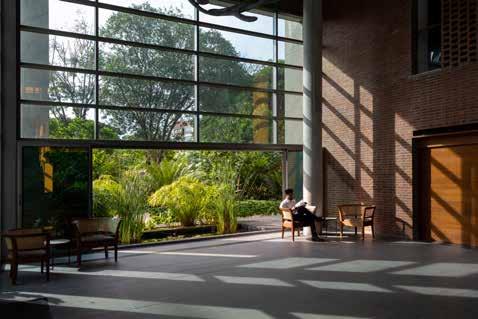
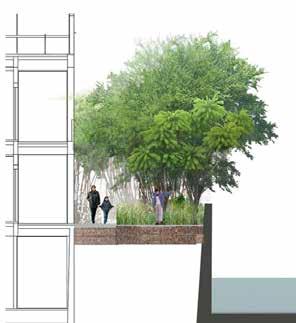
Envisioned as a multisensorial, pervious urban wilderness that attracts urban wildlife, the greenway consists of a meandering walkway through a rain garden. Local, dry-laid chapadi stone and aggregate have been used to design the walkway. The landscape enables biological filtration, improving stormwater quality through an exposure to dense vegetation, gravel, soils before slow infiltration, The water then collects in a perforated subdrain,thereby reducing pollution of the adjoining nala. The design favours the use of native and adapted species of plants which require minimal maintenance.Plants like Cymbopogon, Nerium, and Cyperus alternifolius facilitate the removal of pollutants in the stormwater and have been used extensively in the project.





GROND FLOOR PLAN EXPERIENCE CENTRE
LEGEND:
Entry Deck
Outdoor Seating
Lounge
Reception
Lift Lobby
Services
Women’s Toilet
Men’s Toilet
Cafe
Back of house
Secondary Entry Deck
Pitstop
FIRSST FLOOR PLAN EXPERIENCE CENTRE



LEGEND:
Transaction Area
Viewing Deck
Common Lounge
Discussion Kiosk
Toilet
Lunch Room
Board Room
Training Room
Workstation
Discussion Room
Cashier’s Counter
Manager’s Cabin
The brand identity is reinforced by incorporating the Giga brand colours in various design elements. These colours are taken into the flooring, the glass partitions, open shelving and even the façade. The facade is designed using colored cement board louvres. These louvres protect the southern and western facades of the building from harsh sunlight and create a strong visual language.
The interior space is designed to be bright and airy. A North light truss brings in ample natural light throughout the day to avoid artificial sources of lighting. Simple metal and glass partitions separate the office spaces from the visitor area. The neutral and warm colours of the cement flooring,false ceiling and the wooden storage units invoke a sense of lightness in the discussion and transaction zones.
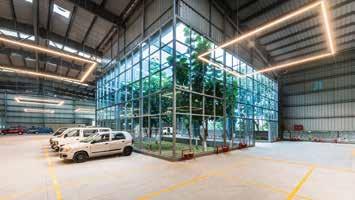
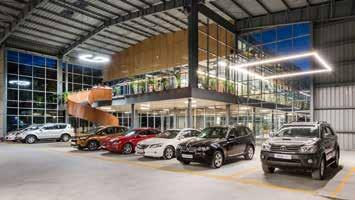



Hundar Village, Ladakh
Architect
Latha Raman Jaigopal
Latha Raman Jaigopal
Stonehedge has been envisaged as the first high-altitude, all-weather resort in Nubra Valley. Situated at 10000 feet above sea level in Ladakh, and reliant on a single axis of connectivity, the project faced challenges of working in sub-zero temperatures.
Stonehedge has been envisaged as the first high-altitude, all-weather resort in Nubra Valley. Situated at 10000 feet above sea level in Ladakh, and reliant on a single axis of connectivity, the project faced challenges of working in sub-zero temperatures.
Run by Architects Jaigopal Rao and Latha Raman Jaigopal, The studio engages with the design of earth-friendly built environments. The practice has undertaken projects in the hospitality, residential and educational sectors, in addition to conducting studies for central and state governments on various sustainability aspects. The studio envisions and endeavours to create fullysustainable villages and townships that can be enjoyed by all segments of the population
Run by Architects Jaigopal Rao and Latha Raman Jaigopal, The studio engages with the design of earth-friendly built environments. The practice has undertaken projects in the hospitality, residential and educational sectors, in addition to conducting studies for central and state governments on various sustainability aspects. The studio envisions and endeavours to create fullysustainable villages and townships that can be enjoyed by all segments of the population
Run by Architects Jaigopal Rao and Latha Raman Jaigopal, The studio engages with the design of earth-friendly built environments. The practice has undertaken projects in the hospitality, residential and educational sectors, in addition to conducting studies for central and state governments on various sustainability aspects. The studio envisions and endeavours to create fullysustainable villages and townships that can be enjoyed by all segments of the population
The design approach incorporated local processes and resources in creating solutions for heating, insulation, water management, lighting, aesthetics, tiling, woodwork, and joinery. This would ensure the self sufficiency of the building.
The design approach incorporated local processes and resources in creating solutions for heating, insulation, water management, lighting, aesthetics, tiling, woodwork, and joinery. This would ensure the self sufficiency of the building.
Stonehedge has been envisaged as the first high-altitude, all-weather resort in Nubra Valley. Situated at 10000 feet above sea level in Ladakh, and reliant on a single axis of connectivity, the project faced challenges of working in sub-zero temperatures.
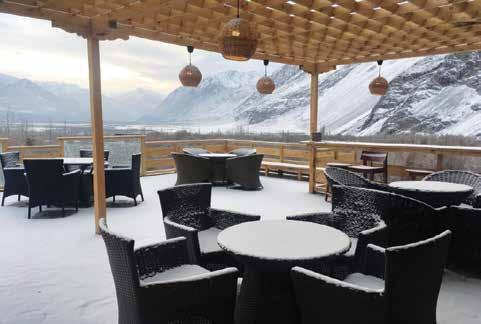


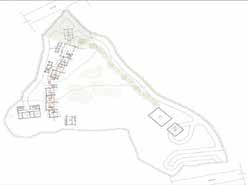
The massing takes on a linear profile, the terraces and rooms designed to enjoy the view of the surrounding mountains. The rooms were infused with bright colors and natural fabrics, reflective of the cheerful and warm outlook of the Ladakhi people and also to create a synergy with the clear skies of the mountainous region. Traditional methods of insulation were used to reduce the carbon footprint using materials such as local stone, mud plaster, rush weed and local wooden furnishings.The different hues of the local stone were used to create visual interest along accent walls. The rush weed was treated with a polyurethane coating, and added to textural palette within the rooms.Soft cove lighting and open balconies have been meshed with an open dressing area to create an aura of spaciousness by optimizing the ambient light in the living spaces.
The massing takes on a linear profile, the terraces and rooms designed to enjoy the view of the surrounding mountains. The rooms were infused with bright colors and natural fabrics, reflective of the cheerful and warm outlook of the Ladakhi people and also to create a synergy with the clear skies of the mountainous region. Traditional methods of insulation were used to reduce the carbon footprint using materials such as local stone, mud plaster, rush weed and local wooden furnishings.The different hues of the local stone were used to create visual interest along accent walls. The rush weed was treated with a polyurethane coating, and added to textural palette within the rooms.Soft cove lighting and open balconies have been meshed with an open dressing area to create an aura of spaciousness by optimizing the ambient light in the living spaces.

The outdoor café has been designed to afford an expansive view of the majestic mountain ranges and showcases flooring specially eked from different types of stone found at the site itself. The use of formal table linen, colorful spreads and crockery are a deliberate attempt to contrast the rugged backdrop and climate with the contemporary resort.
The outdoor café has been designed to afford an expansive view of the majestic mountain ranges and showcases flooring specially eked from different types of stone found at the site itself. The use of formal table linen, colorful spreads and crockery are a deliberate attempt to contrast the rugged backdrop and climate with the contemporary resort.
The outdoor café has been designed to afford an expansive view of the majestic mountain ranges and showcases flooring specially eked from different types of stone found at the site itself. The use of formal table linen, colorful spreads and crockery are a deliberate attempt to contrast the rugged backdrop and climate with the contemporary resort.
The outdoor café has been designed to afford an expansive view of the majestic mountain ranges and showcases flooring specially eked from different types of stone found at the site itself. The use of formal table linen, colorful spreads and crockery are a deliberate attempt to contrast the rugged backdrop and climate with the contemporary resort.


The project encourages sustainable practices in recycling water and waste, producing its daily requirement of vegetables and milk within its own farm. The design also advocates for natural lighting and ventilation systems, the use of mud brick architecture for insulation and the use of local materials for the interiors. By using local materials and details in the design, the project involved local craftsmen, weavers and mud-brick makers. This brought a layer of authenticity to the design, and strengthens its contextual relevance.
Stone Hedge

The project and waste, milk within lighting for insulation using local local craftsmen, layer of relevance.

The project and waste, milk within lighting for insulation using local local craftsmen, layer of relevance.
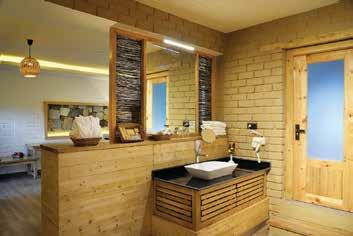


Founded by Uday Andhare and Mausami Andhare, Indigo architects is a collaborative studio practice. Their work elucidates the primacy of ‘place’ over ‘form’, exploring many overlapping layers of the formal and informal, to bring about a rich spatial experience in seemingly simple gestures.The studio believes that ‘architectural expression’ rooted in these sensibilities, can define a language that belongs to its time and place. The firm attempts to explore contemporary rootedness in their architectural design, landscape planning and interior design projects.
Ajrakh is one of the oldest types of block printing on textiles and is still practiced in parts of Kutch. The process involves creative use of vegetable and mineral dyes such as indigo, madder, fermented iron, along with natural mordants like alum and harde. While Ajrakh fabric is used extensively amongst the pastoral communities, it is treated as a prized artefact in the international contemporary textile/ apparel industry. The Ajrakh studio would become a physical landmark in the village for matters related to the crafts and the community.
The site was originally a block-printing shed that sat in an open courtyard adjacent to the family home of Dr. Ismail Khatri, the community patron, and acclaimed master craftsman. The proposed studio would be seen as a community resource for the dissemination of the 4500-year-old craft and a model for other artisans in the neighbourhood to emulate.




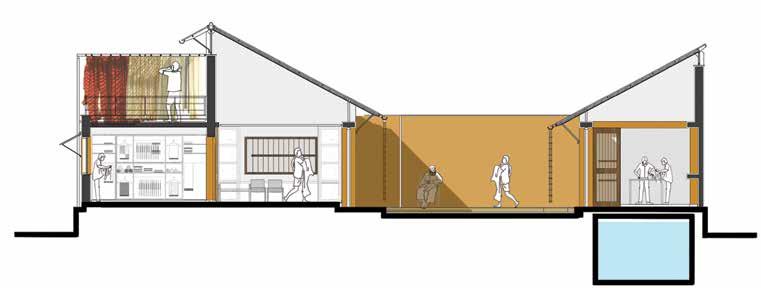

The plan of the new studio draws from the design of the original Khatri family home in Dhamadka Kutch. It comprises a distinct layering of spaces from the public to the inner working private courtyard with a wall separating the house from the workspace. The design strategy engages two volumes oriented lengthwise, united by an open court and held at the two short ends by services. The central open court acts as a buffer between the public functions and the focused inner workspace, becoming a processing space for dyeing textiles and an informal social place.
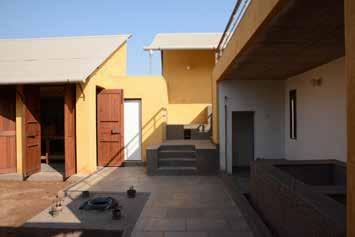



The first volume holds the public interface and comprises the entry, a small office/studio space, a retail shop, and a large hall
for public meetings and film screening. Films on the craftv of Ajrakh are screened on a regular basis in this hall.The second volume is the printing workshop flanked by a storage area, the wood-fired chulha (wood stove) and wash area for dyed yardage.Large doors with operable louvres reveal a porous interior along the east-west axis. Deep shade, shadows, and patterns on lime-plastered walls provide ornament, depth, and refuge at different times of the day.
The climatic response is highlighted by using stored rainwater to cool the RCC slabs, confining masonry construction with the use of lime mortar, and using highly emissive dolomite plaster to ensure thermal comfort along with seismic stability.


Ar. Ajay Sonar was born in a family working in the construction industry from the last 3 generations. He graduated from the College of Architecture, Nashik, after which he worked in Mumbai for a period of 2 years before setting up his own practice. He is an Alumni of ‘Glenn Murcutt masterclass, 2014’ organised by Australian architecture foundation in Sydney, Australia.
The main intention of this project was to enhance and exaggerate the ‘as found’ spatial condition of the site. The given site was located in suburban Nasil in a typical stilt space of an apartment building, abutting a vast forest reserve along the Northern side. This necessitated that the compound wall of the building, along the length of the forest reserve, be taller, and at least 8 to 9 feet in height. Placed between a semi covered stilt and a tall wall, the site had an ambivalent character that was animated by a play of light and shadow. This created within it a cavernous space, sombre, yet with a cheerful atmosphere. Once this spatial quality was discovered, the intention of the project was clearly articulated to enhance this spatial quality through careful, minimal spatial articulation.

The first decision that supported the existing spatial quality of the site, was to render the entire space in one single material, that of the Indian Patented Stone. In order to create a sense of homogeneous space, minor corrections were made to the existing elements of the space. For example, the existing columns, which were uneven in sizes, and oriented in different directions, were corrected by making all of them as square columns. This created a sense of weightiness, rhythm and order in a space akin to the rock-cut cave temples found around Nasik.
The second decision was to frame the drama in varying daylight conditions - the open court at the entrance; the studio space at the end of the site; the passage and informal waiting space between the entrance and the studio; the meeting space and the water court.
The third spatial intervention looked to craft an open and flexible floor plan, along with an equally open section, that would allow the studio space to swell and contract.


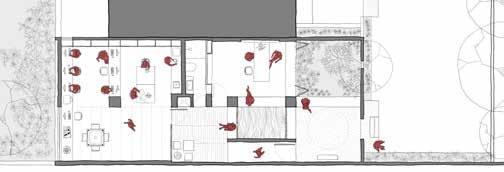

The entrance court has a vast circular skylight, to frame the sky, but also to create a semi shaded gathering space, at the studio’s threshold. A narrow passage leads from the entrance court to the studio space and is marked by a narrow slit of skylight, adding to the linearity of the space, while making it feel more spacious. A small informal waiting space is carved between the passage and studio space and is punctuated by a smaller circular skylight.


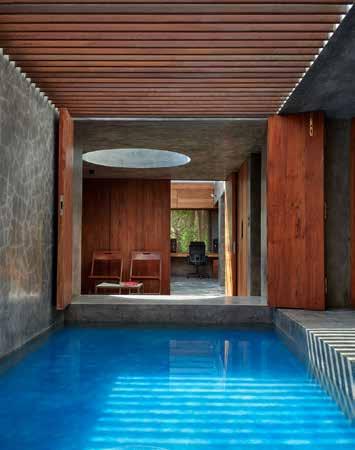

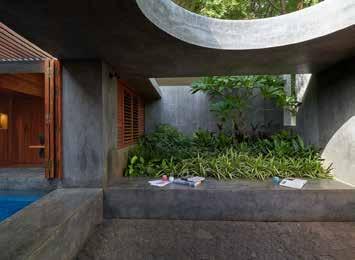
The meeting space opens to a skylit water court, with pergolas, with the landscaped court forming the backdrop for the meeting space. The water court also opens towards the waiting space and the entrance court, making it a pivotal space of the design which is experienced from almost any part of the project.
The free plan of the studio with ample natural light and loose furniture, creates flexible environments, allowing for the studio space to swell and contract to adapt to various kinds of events. Sliding-folding enclosing devices enable the entire studio space, from the entrance to the end of the studio, to be mouldable and open for reconfiguration.

Murali Architects creates a versatile body of work within architecture and Interiors. The practice has worked with various typologies such as residences, corporate offices, institutional, retail & hospitality. Murali Architects’ distinct style, seen in their residential Projects, looks at the reinterpretation of traditional architecture, by revamping dwellings in the contemporary world, through the synthesising of the past, present and the future. The firm explores design solutions that are contextual, creating unique typologies of spaces that revolutionise their spatial experience.
The JJ memorial is a social and collective structure commemorating the life of Ms J. Jayalalitha, the late chief minister of Tamil Nadu. The museum and knowledge centre was envisioned as a monumental, prodigious structure with intriguing curves and angles, blending with the waves that flow on the marina coast in Chennai. The overall planning follows the symmetrical planning concept, incorporating a hierarchical spatial planning system.
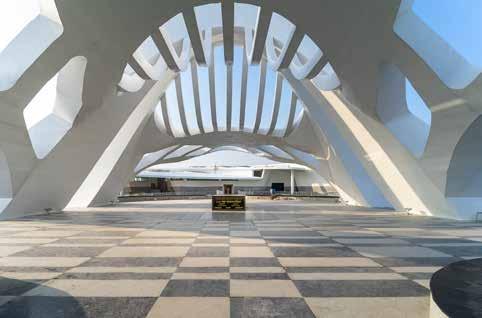

The cast in a situ, exposed concrete monument was conceived as an experiential environment through the creation of deep, intertwining and interlaced inclined walls. Symbolising the form of the phoenix bird, the structure looks to reflect Ms. Jayalalitha’s inner spirit and her personality committed to fighting back under all circumstances. The majestic wings of the phoenix are abstracted and portrayed through the use of exposed concrete. This Phoenix has two main 16m high ribs, with each rib supporting a 16 m long cantilever of wings, there is no common tie between the two ribs. Each rib pierces into the foundation in the form of two columns. The structure is further stabilised by an 18m long pile foundation. Self-compacting concrete has been used to erect these two monolithic concrete structures.
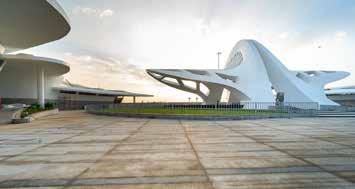

Two major parts of the building program are located symmetrically, on either side of the phoenix monument. The museum is located at the northern end and the knowledge centre on the southern end. Both these buildings were however planned with subtlety and humility, allowing the monument to dominate the landscape. Both these spaces align with the flowing nature of the monument and act as supporting systems for the phoenix.
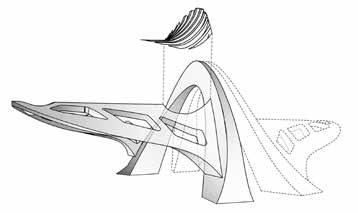
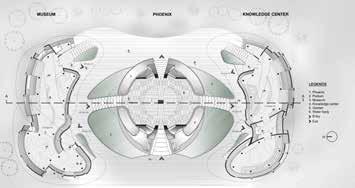

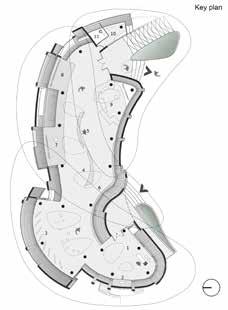
A shell-like Roofing system has been incorporated for both the museum and the knowledge centre. The roofing has been segmented using three shells, with a play of levels. The roofing flows to create large cantilevering roofs for the entrances of both the buildings, allowing for a modern and grand welcome.
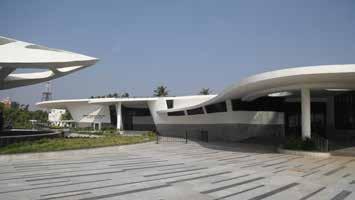
A progressive layering of the inclined RCC walls creates for an interesting play of light within the building. The museum
building boasts of an oculus on the roof, that brightens up the interior space through filtered and diffused light that enters via a prismatic glass. The exterior form fluidly assimilates with the inner spatial arrangements of the museum and the knowledge centre.
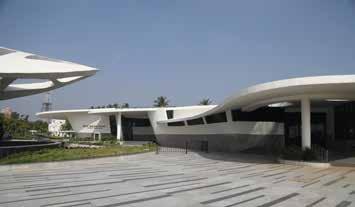



This seamlessness creates an ease in circulation and functional arrangement, producing a clear flow between the architectural language and the landscape design.

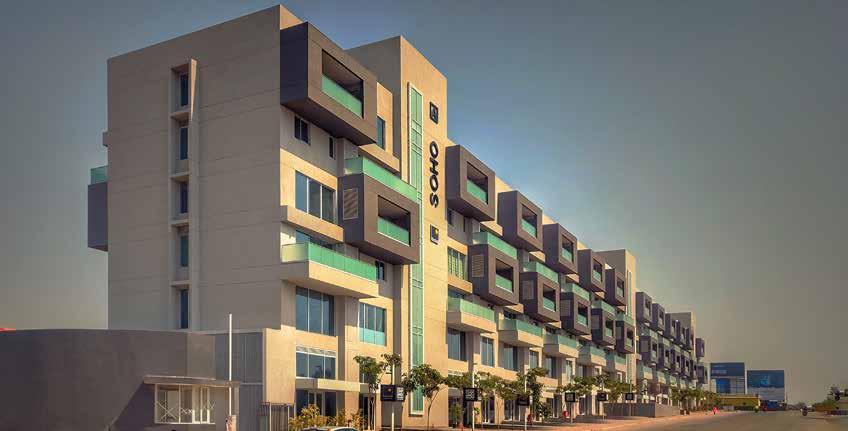
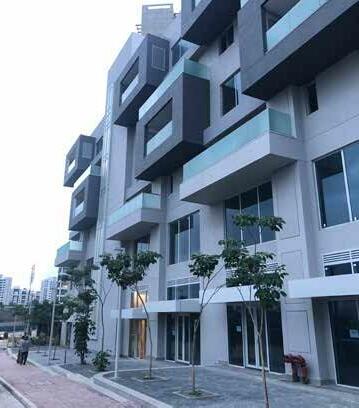
The inspiration for this project was drawn from the SOHO neighbourhood of lower Manhattan. With boutique retail and Al fresco dining cafes at the street level, lofts for artist and independent professionals with small offices at the upper levels, this low-rise building combines the idea of “Live and Work” seamlessly.The site measuring 180 metres X 27 metres has a 6-meter drop in elevation from one end to the other. This drop provides a great opportunity to create multi-level retail spaces.
Ganti & Associates Inc. is an architectural and lighting design practice committed to design from concept to realization. For nearly a decade, Ganti & Associates (USA), have been designing built environments, master planning, hospitality, space planning, and architectural lighting for clients in the United States, Africa, and India. GA celebrates purity of form and simplicity in expression across their projects, focusing on sustainable and responsible design approaches. Using cutting-edge technology like BIM, virtual reality and 3D printing, GA follows an integrated and cohesive design philosophy, delivering holistic design solutions.







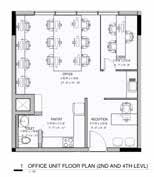


Modularity has been a focus in the design approach. The enduser has the freedom to convert their units into a residential space or a space that is part residential -part commercial or even have the unit be completely commercial. Each module is made of two units which are interlocked, providing maximum views and facilitating cross ventilation. A double-heighted living room in each unit enhances the volume within the unit, making the interior space feel larger.


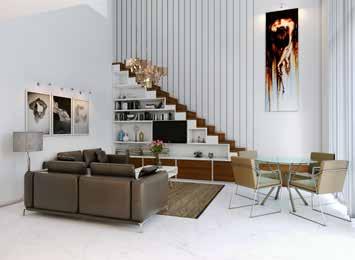

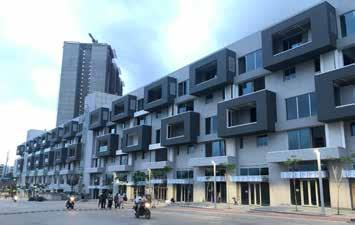

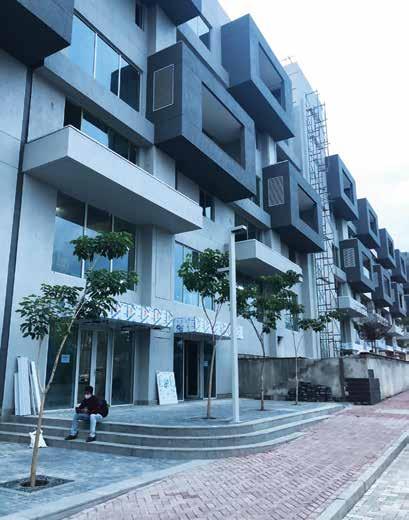

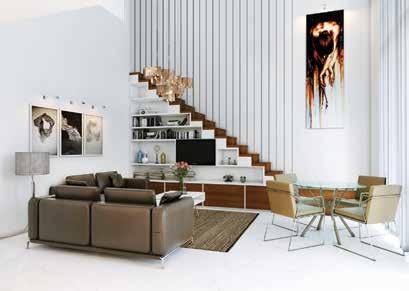

Mr. NM Salim graduated with a B.Arch in 1971 from CET Trivandrum. and set up his organization "N M Salim and Associates" in 1972, over 50 years the establishment handles architectural, interior designing and urban planning. He and his team work together to achieve architectural excellence in every project they undertake. He has received several awards for his outstanding and innovative works in the field of architecture. He was the recipient of the Indian Institute of Architects Award 2000 for designing the best public building in India - International Convention Centre - at Kochi. He also received award for designing and constructing of a Low Cost House for the Kerala State Housing Board in 1982. Mr. N. M Salim's work on his own residence pre-qualified for the 2001 Aga Khan Award for Architecture. The Le Meridien Hotel building. Cochin and the MES Engineering College, Kuttipuram also pre-qualified for the Aga Khan Award for Architecture. He and his team are at present involved in prestigious projects for residential, commercial. hospitality and institutional buildings locally as well as abroad.
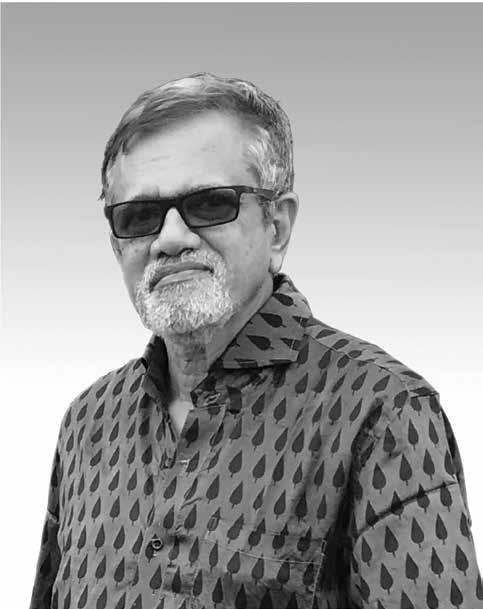
Ar. Vivek P.P [VPP]: Salimka, you are one of our greatest inspirations in architecture since I started practising 18 years ago. If you remember right, we had come to your house for a case study during our college days. How do you see this journey in architecture inspiring hundreds of architects like us?
Ar. N.M Salim [NMS]: Yes, yes. I do remember that all of you visited my home. Nikarthil, then shortlisted for Aga Khan Awards, was indeed a talk among the fraternity and students and architects from many institutions kept visiting us. About the journey, it’s been 50 years! 2022 is my 50th year of practice and I relished every bit of it and still enjoy the practice of architecture.
VPP: Wow, 50 years of practice! That’s phenomenal. In this long and inspiring journey, how has your approach to projects changed? Also, according to you, how has the scenario changed in Kerala, especially in Calicut with the growing number of architectural firms?
NMS: Now, I don’t want to design everything that comes my way like before. I would want to design a particular project only if I think there is something worthwhile to explore that I can enjoy doing. Architecture is getting very popular these days, especially in Calicut. The city has made a name for itself when it comes to being able to maintain its quality. This could be a trend that spreads throughout India. I am very proud of my fellow architects, especially the young ones who made sure the legacy of Calicut is held high. There is a sense of quality, sensitivity & values among Calicut architects. It’s the result of years of collective effort. I am proud that I could play the pivotal role in establishing the practice of architecture here at Calicut. Now people are coming from all over India to meet and employ architects from here. The popularity of the profession is also enhanced through IIA National awards, one of which we hosted here in Calicut. Even with the number of firms I never felt like there is an unhealthy competition because the number of buildings & kinds of projects are also increasing with time. And yes, we had a problem during the pandemic but now things are getting better and there is enough work for everyone around.
VPP: Yes, Architecture is very popular now and we, the young ones practising in Calicut certainly have that advantage. But I’m sure it wasn’t the same when you were

of our age. What we enjoy right now are the fruits of your hard work. How was it then Salimka ?
NMS: Yes, it wasn’t easy. When I graduated in architecture in the year 1971, people would not even know to spell the word, “architecture”. We were often called engineers or simply designers. The journey from there is rewarding, as we made people aware of the importance of architecture with every new building we designed. People then started to respect our involvement and acknowledged the importance of architecture. Initially, it was among the private sector and slowly the Government also realized the need of involving architects in all scales of projects. Nowadays I am happy people approach architects for all kind of projects in varying scales, which was not the case then. We made our own road.
VPP: In course of decades of your practice, were you influenced by a particular style or were you trying to develop your own style? There are some evident influences of Mughal and Middle Eastern architecture in many of your buildings including MIMS hospital while you have also done some very minimal contemporary designs which still stand as timeless structures; on the other hand, your own home is completely different with an organic design. Did you have a preference for styles or did you want to try them all?
NMS: None of my buildings is of a particular design style. Everything is a blend of different styles according to what that project demanded. Every design is done according to the site with respect to what the clients want and its context. The Le Meridian Hotel and Convention Centre, Kochi which pre-qualified for the Aga Khan Award for Architecture, 2004 is also a traditional kind of design with its sloping roof, and for that, I have taken inspiration from heritage buildings like Pathmanabhapuram Palace. I have also drawn inspirations from the Hozur Kacheri, the Old Collectorate Building of Calicut which was demolished earlier. I still have photos of the same. That building was my inspiration for the Malabar Palace hotel design way back in early 90’s. I have taken features like gable windows, laterite, and sloping sunshades from that beautiful building. I was actually recreating the cultural memory of Kozhikode through that attempt, and it still stands tall among all other modern constructions in the city. It’s not about any particular style, it’s about being truthful & contextual in each and every project.
Ar. Vivek P.P [VPP] and Ar. N.M Salim [NMS] converse about everything about the latter’s legacy spanning half a century, from carving out a respectable position for architects in Kerala, to personal hobbies and anecdotes with some great advice for future architects. This conversation covers the veteran architect’s journey in the field of architecture to his design principles and beliefs.
VPP: Do you think there is a distinction between good architecture and commercial architecture. Should we look at both together or separately? In general what kind of projects do you like more?
NMS: You may not make money by just practising good architecture. Not just in architecture, but in any profession, you can’t make money if you are just doing good work. You need to take risks & accept challenges. When I started practising, I had nothing, but eventually, I balanced both good and commercial architecture together and it happened naturally. You shouldn’t be only focusing on commercial architecture; you do good architecture and naturally the commercial side will come along. I like residential projects more, and then hotels and hospitals, but I ended up designing more hospitals than hotels.
In the hospitality sector, we have been working for decades now. Projects like Le Meridian Kochi & Malabar Palace Calicut were done in the early 90s and are still among the best properties. But when it comes to hospitals, the technologies are changing day by day. So in order to get updated, we still depend on consultants and get ourselves relevant to the time.
VPP: What do you think was the golden period for you? Which are your favourite projects till date? We talked a lot about N.M. Salim as an architect, what about N.M. Salim as a manager? Is he like a hardened manager or someone who notices every minute detail or someone who builds a strong team that in turn leads the office?
NMS: I would say the 2000s was my chosen golden period because my major hospital projects happened in this era. We had started incorporating new technologies also during this time. There was a time when I had 80 odd staff in my office. I had started it with one employee and right now I have around 40 employees here. Still, I get into every minute detail in every project. I have an engineers’ team to do the engineering side but for the design side, I still go through everything. I love designing interesting & challenging structures.
My all-time favourite is my own house and Le Meridian. The design of the Indoor Stadium Kochi (1993) is also very complex because the whole weight is suspended on four pillars. It is the riskiest project I have ever done and many engineers criticized me saying that it won’t stand. I had structural engineers in my office even at the very beginning stage. We only gave a few projects outside for structural design; everything else was done by us. This was to avoid delays if any design changes were required. But it helped me to take some bold decisions in structural design.
My other major projects are, MIMS medical college Wayanad, Twin Tower Lakeside habitat facing Hebbal river, Bangalore, BGRT ( a 12 lakh sq ft IT building which is the first platinumrated green building in the country), Orchard Green Residential apartment Bangalore, His Grace residential apartment, BGRT data centre at Mumbai, Multistorey residential complex, Super Stone in Calicut, Cyber Park Calicut (Kerala Govt. ), Kuttipuram MES Engineer college (also pre-qualified for Aga khan award 2004), Public library

Calicut, Kannur university. St. Believers residential school Thiruvalla, multi-storey apartment & shopping in Qatar and a multistorey apartment in Ceylon. Apart from these, we have also designed the Master Plan for the Bekal tourist project (1000 acres) with the help of international architects which was the first one of its kind in Kerala.

VPP: What do you think makes a good architect? Other than the architects you had previously mentioned, who else do you follow?
NMS: We can see the proportion of Taj Mahal done in that particular era so perfectly, So I think a degree is not important but conceiving the proportion right is important for architects. When it comes to proportion we can see it clearly in Charles Correa’s designs, the proportions within the building, & outside the building. Crafting spaces within the building was his special skill. I like Bimal Patel and the way he uses brick as a building material. Sanjay Puri is also doing some good projects.
VPP: Why did you take architecture and how did that interest grow? And since you haven’t had any famous architects to lead you during that time, from where did you find your inspiration? Also, when did people start recognizing you by name, because you are the one who took the pioneering step in the state to start familiarizing the term architecture to the people? You were not just familiarizing the word ‘architecture’ but also making it a celebrity profession.
NMS: I graduated in the year of 1971. Frankly, I wanted to be an architect. My brother is a civil engineer from Trivandrum College of Engineering. I once went to his college and visited the architecture department. That is when I developed my interest in architecture. I was in the fourth batch and the first batch just had four students. I had designed two residences when I was already in my third year. When I was studying in Trivandrum, Charles Correa’s Kovalam Project was going on and I got to meet him personally during the construction. My batch mate Ar. Gopakumar was the site engineer of that project, which led me to know more about Ar. Charles Correa. That was my first inspiration from any architect. People usually don’t understand who is an architect, but when we talk to them, they will get to know us. People used to approach me with a plan asking for to make elevations out of it thinking that’s architecture. So, making them know the term & the practice architecture was my toughest job in the initial years. In 1975 I changed my office to stadium building and in 1977 I bought a home of 10000 sqft and moved my office there and at that time my popularity increased. I got married after I moved to the house, and my family has been a great support since then.
VPP: Nowadays we have a number of options- you can practice, you can research, you can write on architecture, you can get into planning, furniture designing, product designing, landscape architecture etc. but during your time there wouldn’t have been these many options right? Also when you started practising, there wouldn’t have been computers, or architects to work with, draftsmen with good knowledge, engineers etc.
NMS: No such options were available at that time. I didn’t intend to start private practice immediately after my studies
but I was forced to do so. I had worked for J.C. Alexander Sir for one year in Trivandrum. I am basically from Cherthala and both my sisters were settled in Kozhikode, so I used to visit them a lot. Eventually, I settled here. I had a diploma graduate to do drafting; he was actually a mechanical diploma graduate. When I started my very first office next to my home which was 90 sqft, I got a good number of projects from there itself. Aradhana Tourist Home was my first major project, and then chest hospital etc. happened in the 70s. The current office is my fifth office. Architect Meera is the one who started using computers in our office for the first time. We started using computers in 1995, before that all drawings were handdrafted. Computers have increased efficiency and helped in speeding up the processes. Also, it has helped in scaling up the practice. But it hasn’t influenced my designing process because I still use hand sketches. I do sketch and freehand drafting. I wake up at 5 in the morning and till 7 I sketch.
VPP: How would you describe yourself as a person? Disciplined or daring. What is the role of your office and family in your growth? Do you paint or draw anything other than architectural drawings? What is your daily routine?
NMS: More than discipline, I would like to say that I am a daring person. I’m not afraid of anything, I’m ready to face anything. I myself have so many problems and have faced many difficulties, still, I overcame everything. That is more important than money.
My elder son Aadil is an architect too. I wanted him to become an architect because I want someone to follow all that I have made in these 50 years of establishment. Gradually, he will be taking over the establishment because I don’t want to lose the reputation that I earned. My wife is an artist and has a keen interest in whatever I design and she also comments on the designs and criticizes as well. My younger Son Adeep is successfully running a real estate & project management firm. So I am pretty happy the way life has treated me.
I think all architects need to have three things- good mathematics skills, geometrical skills and common sense. Scientists- they don’t have emotions, but artists know emotions. Artists don’t have any problems. I don’t have any problems. When we face any problem, artists know how to handle it easily. God has given me a boon, the daring attitude to face anything. See politicians, they are so daring, neither money nor wealth is important only guts are important.
I wake up early in the morning and draw concepts as perspective drawings that I show my wife for her opinions. I read five papers a day for one hour in the morning because I want to get updated about everything happening around me. My working time is from 5 in the morning to 6 in the evening. I do either swimming or Yoga in the morning. I walk for half an hour in the evening too.
VPP: An Architect is not just someone who constructs buildings, but also one who has a vital role in society. Once when I got to talk with Ar. B.V. Doshi he told me that he dreams of a time when the architect is among the key policymakers of society because everyone can’t think like an architect; we are educated to solve problems easily. You are friends with major policymakers, politicians, and people who lead Kerala. How did these relationships become, did that automatically happen and has it helped you in this field? You have never gone behind any kind of power politics. Was it a decision taken by you?
NMS: See when you have contacts with these people you will automatically become popular. When I had a talk at NITC Calicut I remember you standing up and asking questions. It was around 22 years ago. We then worked on the Canoli Canal project even though it didn’t happen. See we are all busy professionals, we have no time, and I won’t go behind stardom or fame or politicians leaving my profession aside. My profession is my passion. I want to be known as an architect. That’s it.
VPP: Many of the senior practising architects of Kerala would have worked under you or along with you at some point in time. You have in that sense moulded more than a generation of architects. How do you see their progress and the change they have inspired in the field?

NMS: I’m very proud of all who have worked under me and have excelled in their practices later. Yes, there weren’t many practices during the 80s and 90s and so many have practised under me. I am happy that I could guide their initial years of architectural journey and most of them have created longlasting impacts in the field of architecture not only locally but at national and international levels.
VPP: Have you set targets and plans in your life? What are the next ones? Any advice to the next generation?
NMS: I take life as it comes. I have gone through many ups & downs. But my daring and positive attitude towards life helped me to live life very happily. I still enjoy my daily routines, morning yoga, reading newspapers, coming to the office, discussing projects, attending meetings and meeting friends and partying with them. So my advice to the next generation also is to find your happiness in life and to dedicate your life in full for that. I believe my son will continue the legacy of NMS architects for a long time and I am looking forward to working along with him in the coming years.
Ar. Vivek P.P. is currently the Chairman of IIA Calicut Centre. He is the founding partner of the award-winning practice, de earth architects. He is also a governing council member and trustee at the Avani Institute of Design, Calicut. He graduated from the National Institute of Technology and completed his Masters in Urban Design at the National University of Singapore. His works have been widely published and his practice has won several awards at the state and national levels, including the recent ID Honours 2022. He was also bestowed with IIA Most Outstanding Member Award (2016).
vivekpp@deearth.com

Evidence suggests that the history of architecture is as old as the history of mankind. From the construction of ancient huts and caves to present modern structures, technology and learning have advanced diversely in different corners of the world. The architectural profession in India has been one of the key professions since the Vedic ages and almost all ancient Indian scriptures have direct or indirect mentions of the profession. Many scholars have written books exclusively on the profession discussing various experiences and principles. In ancient times, there was no formal arrangement to learn this art other than the verbal transfer of knowledge from scholars to their disciples across generations. In ancient kingdoms, before British rule in India, this art was mostly limited to royal families who carried out city maintenance and beautification works in those times. Soon after British rule in India and with the expanding cities and growing population, municipal boards were introduced to maintain, beautify and plan cities. Madras Municipal Board was the first board in India which was formulated in 1687 followed by the Bombay and Calcutta Municipal Boards. Around 1900, almost all Indian cities of that time had municipal boards which were taking care of all maintenance-related activities.
To impart strong legal statures and make the boards democratic, central acts were also passed by the British government. With the passage of time, all construction-related activities were added to the domain of Municipal boards where it was made mandatory that, in order to construct a building, one has to get
its drawings prepared and submit them to the Municipal Board for prior approvals before commencing the construction. This led to the requirement for many trained architects / related professionals which further paved the way to start formal architectural education in India. In order to cater to these requirements, the British government started the very first college, Sir J.J. College of Arts in 1913 in Bombay. Later on, similar new art colleges were also started in Madras, Calcutta, Patna, Lahore and Lucknow. These art colleges provided formal education in the field of various arts and architecture. Initially, formal education in architecture started with diploma courses in which the graduates were called draftsmen. Later on, the education was upgraded to degree courses and graduates were called architects. These colleges were completely governed and controlled by the-then governments.
After India’s independence from British rule, Indian cities started to grow rapidly along with many new advances in building construction materials and technology. Once again, the need was felt to increase the number of trained architecture and engineering professionals. Hence, the Union and State Governments started new engineering and architectural institutes. Here, the main shift was to attach architectural education with engineering colleges rather than the British philosophy to merge architecture with other fine arts. Being a fine art, architecture was closely considered with other fine arts while in independent India it became a part of engineering education.
With the passage of time, towns and cities were expanding and the design of buildings become complex due to limited space and resources. The rules and regulations prescribed in the municipal boards pertaining to the buildings became outdated. Hence most of the states of the country started to enact different acts to deal with the complexities of expanding cities. The Maharashtra Government enacted the Maharashtra Regional and Town Planning (MRTP) Act in 1966, the Rajasthan government enacted the Rajasthan Urban Improvement Trust Act in 1959 and the Uttar Pradesh government enacted the Regulation of Building Operation Act (RBO) in 1958. RBO became the first act which emphasized city master plans, while later on, other improved acts such as the U.P. Urban Planning and Development Act 1973, along with many special development authority acts came into existence for various purposes. Till around 1973, most of the states were having Development Authorities. Under the bye-laws of these Acts, different technical educations such as Degree and Diploma in Architecture, ITI Draftsmen, Civil Engineering etc. relating to designing and supervision of the buildings without any difference in levels of competence were added. After the third Five Year Plan, the Planning Commission paid attention to the construction sector and formed a panel of experts to study the problems of the construction sector and give recommendations. The Panel submitted its recommendation in 1968 to prepare a National Building Code to unify the building regulations. The responsibility was entrusted to the Indian Standard Institution (now Bureau of Indian Standards), to prepare this document which was published in 1970 as the first edition. After Independence, as the country was progressing, architects started raising their voices for their separate identity, which was intensified later on by the Indian Institute of Architects.
Notably, on May 1917, a meeting was held at the residence of a professor of Sir J.J. College of Architecture, Bombay where the foundation of The Architectural Students Association was laid, which later on became the Bombay Architectural Association in August 1922. Soon, it become so popular that membership started to spread throughout the country. In order to nationalize the association, it was again renamed The Indian Institute of Architects (IIA) in September 1929. Soon after the existence of the Commonwealth Association of Architects (CAA), The Architects Regional Council of Asia (ARCASIA) and the International Union of Architects (UIA), the Indian Institute of Architects became a member of all of these which helped IIA to make its international existence felt by providing various international platforms.
It was in the historical year 1966, when a Nairobi-born and raised architect, Dr. Jai Ratan Bhalla became its president. He started the first national convention in 1967 and started using this platform to spread awareness about the profession of architecture by inviting the President of India, Cabinet Ministers and other dignitaries to the National Conventions as chief guests. Unfortunately, National Conventions could not be held regularly till 1984, after which, these conventions are being regularly being held and are hosted by different Chapters or Centres of IIA. Dr. Bhalla also convinced the Government of India to conduct architectural competitions for prestigious projects and further managed to get significant support from the then Prime Minister, Mrs. Indira Gandhi. Simultaneously, the conferences of CAA and UIA were also
organized in India which further contributed to the awareness of architecture as a profession in India.
Dr. Bhalla continued to upgrade the Institute by revising the constitution of IIA and tried his level best to educate the mass about the services of architects. Guidelines for the scale of charges (professional fees) for the professional services were also formulated by him during his IIA tenure, which, in the absence of any statutory law, were adopted by other professional bodies and even the governments. Dr. Bhalla also started formulating the frameworks of a separate statutory law to regulate the profession and its education in India. It was a historic coincidence that when Dr. Bhalla was busy convincing the Government of India at different levels about the need for this law, he met Piloo Modi, Member of Parliament from Bombay. Ar. Piloo Modi was not only a prominent personality in the Parliament as a writer and thinker, but was also an architect. He wrote many books on different subjects and being a thinker, he was established as a brilliant speaker in the Parliament in those days. With the historic meeting of these two great personalities, the foundation stone for the Architects Act was laid and very soon conceptualization of the Act and its framework started with their joint efforts.
Dr. Bhalla started to devote the majority of his time to political meetings and environments for drafting the Bill. After years of hard work and persuasion, the Bill got approved by the Upper and Lower Houses of the Parliament in 1970. However, because of the dissolution of the Assembly just after the passing of the Bill, it could not become an Act. While preparing the draft of the Bill, the complete documents from many countries following similar Acts were made available to the government officials. Due to the unavailability of the internet and lack of technological advancements in those days, this was a challenging task. In some countries, only the title of ‘Architect’ was protected while in others, the complete architectural practice was protected. There was an organization called the Institution of Engineers which was in strong opposition to this Act. In those days, many of the parliamentarians in the Upper and Lower houses were engineers which made it easy for the Institution of Engineers to take them into their confidence in opposing the Architect’s Act. Ar. Piloo Modi was the only architect-parliamentarian at that time. Despite this fact, being an extraordinary orator, he was heard and managed to get the Bill passed. The Institution of Engineers was primarily opposing the act to protect the practice of civil engineers in architectural services. Their plea was if the architectural professional practice is protected for architects, it may become an unemployment disaster for thousands of civil engineers who predominated in huge numbers at that time. The repute of the Institution of Engineers could be well understood from the fact that three ex-chairmen of the Institute were ministers in the then government. Ar. Piloo Modi and Dr. Bhalla were trying their level best to explain to the Government that this Act was required in the public’s interest to save the masses from acting non-architects, as in those days, anybody could claim to be an architect and fool anyone by providing substandard advice and professional services. Despite various efforts by Ar. Modi and Dr. Bhalla, the Institution of Engineers succeeded in convincing the Government that the Act was being framed only for the benefit of Architects.
Despite continued tensions in the environment, Dr. Bhalla did not stop trying to convince the Institution of Engineers. Being Chairman of the IIA, his role also demanded that he continued to convince the concerned persons and authorities. Finally, an agreement was made with the Institution of Engineers that the scope of works shall be deleted for the Act and all the civil engineers who have been practising in architectural works until five years before the date of enactment shall be given registration as ‘architects’. After long and tiring deliberation, there was no choice left but to agree to this and after these amendments, the Act was again presented to the Parliament. Due to repetitive mass protests, the Act was forwarded to the Joint Select Committee. This Committee had 27 members, including the Chairman of the Committee. Out of these 27 members, 7 were from the Rajya Sabha and 19 from the Lok Sabha. Once again, the onus of deliberations and explanations to the Joint Select Committee, Ministries and Institution of Engineers was on Dr. Bhalla as he was the Chairman of IIA and he undoubtedly spent all of his time and energy for this cause.
Still, the main objection was from the Institution of Engineers citing that this Act was for the benefit of architects, while Dr. Bhalla continued to explain that the Act was for the public interest, citing that there are predominant penal provisions for architects in case of misconduct. It became very challenging to explain the role of architects in building design and construction to the Select Committee as civil engineers, electrical engineers, plumbing engineers, etc. had been practising this profession for long. When the Act was being discussed, engineers also highlighted to the Select Committee that there are only about 2000 architects in the country and making a separate Act for such a small community was not required. These arguments continued for a long while. The Select Committee held many subsequent meetings with Ar. Mohammad Fiazuddin, the Director of the School of Planning and Architecture, Delhi and various senior officials of the Institution of Engineers and finally, the Select Committee submitted their recommendations to the Ministry in favour of the Architects Act and the revised Bill was presented to the Upper and Lower Houses of the Parliament by Mr. Nur-Ul-Hasan, the then Education Minister. The Bill was passed again by both Houses in 1972, in which the scope of work was removed and provisions were made to register all persons practising the profession till five years before the enactment. Other than this, a tribunal and appellate authority were formed for those non-architects who had to register themselves. Later, the tribunal processed many such applications, while on the other hand, the formulation of laws and framework for creating the Council of Architecture was under process till 1974. In 1975, the Council of Architecture (CoA) came into existence and all the work relating to the profession was taken over by the CoA. Considering the outstanding contribution of Dr. Bhalla to the profession’s cause, the Government of India nominated him as the first President of the Council of Architecture while Mr. K.V. Ayangar from SPA Delhi was deputed as the first registrar to the Council. The CoA office was initially started in IIA Northern Chapter’s office premises in Shankar Market, Delhi and later on, in 1991 shifted to the India Habitat Centre. During the 20 years of Dr. Bhalla’s tenure as the President of CoA, many laws such as the Minimum Standards of Architecture Education, Professional Conduct Regulations, Guidelines for Architectural Competitions, etc., were formed and later implemented after the Ministry’s approval.
In 1987, the All India Council for Technical Education (AICTE) was established and architecture was also added under their scope, which again paved way for new confusion, between AICTE and CoA, about who would govern architectural education. Since the Architect Act was already passed, the President, Council of Architecture as per the Ministry’s advisory, made a memorandum of understanding with AICTE to jointly oversee architecture education. A board was set up under the chairmanship of AICTE and the CoA President, which was responsible for smooth coordination between them. Later differences of opinions started to crop up among the board members which resulted in disputes. As a result, the memorandum of understanding was called-off and the matter went up to the Supreme Court of India where the Court stated that AICTE was formed under a General Act while the CoA was formed under a Special Act, hence the provisions of the Special Act would prevail over the General Act. Hence, the disputes and confusion came to rest and CoA was allowed to continue to oversee architecture education.
With the inception of this act and its provisions, the architecture profession in India started being recognized as a separate identity and gained importance as never before. It is thanks to the Act that today the rights of the masses are protected and professionals too can enjoy their identity and benefits in various forms. We are all thankful to Dr. Bhalla, Ar. Piloo Modi and all the others who devoted their time and energies to a common professional cause instead of focussing on personal gains. The battle for adding the scope of work, along with other provisions for improvements in the Act, still continues and the Council has been trying hard for this over the last 6-7 years. We are still facing the same level of aggressive lobbying by civil engineers against the Act. Currently, the amendments are being drafted and improved at the Council’s level and are to be presented before both Houses of Parliament after due processes of approval from the Ministry.
97
Ar. Rajiv Kumar Dwivedi is a practicing architect with over 34 years of diverse experience in the construction industry. He graduated in 1986 from Government College of Architecture, Lucknow. He is also active in the Uttar Pradesh Architects Association, IIA and other social organizations. His areas of work also include literature, social works, governance and academics. ardecoagra@gmail.com

The history of the IIA speaks in manifold aspects – of the struggles and influence of architectural education from one solitary centre throughout India, of the rebirth and youth of a profession which the Country had almost forgotten, of a struggle for existence and the need to have the meaning and value of Architecture and architectural service understood and attempts and experiments towards a new stage in the architecture of the country. In the Renaissance or reawakening of India, the Institute has its due place in the sphere of Architecture.
On May – 12th, 1917, the first historic meeting was held in Mr. Foster King’s bungalow, wherein the Indian Institute of Architects, was also born. At the first meeting held, the members present decided to form themselves into an association of the past students of Architecture of Sir J.J. School of Art and it was decided to christen the infant “The Architectural Students Association”.
The Bombay Architectural Association (1922-29)
The activities of the Association showed, steady progress and after Professor Cable’s term of office, Mr. Batley was elected President in 1921, and it was about this time, that members began to seriously consider an improvement in status of the Association.
Affiliation To The Royal Institute Of British Architects (1925) As for back as the beginning in 1922, there had been tentative visions of affiliation with that powerful and Empire-Wide architectural body, The Royal Institute of British Architects. On a requisition made by 15 members, a special General Meeting was called on 20th November 1924 in which Prof. Claude Bately moved the resolution of getting the final examination of RIBA to be held in India.
The Indian Institute Of Architects (1929)
Affiliation with R.I.B.A. in 1925 led to consideration of further changes in the existing Constitution and Bye-Laws. It was on 2nd September 1929 that the new body was re-organised in Bombay and officially registered as “THE INDIAN INSTITUTE OF ARCHITECTS”. Its chief objects, among others, as stated in the Memorandum of Association were;
“To continue the work of the Bombay Architectural Association founded as the Architectural Student’s Association in 1917” and “To encourage the study of Architecture, to elevate the standard of Architectural Practice and by mutual support, to promote the interests of Architects throughout India”.The Institute began its activities in the room of the Sohrab F. Bharoocha Architectural Library, 7-10, Elphinston Circle, Bombay . Later, as things improved, the Institute and Library moved into the new
and more convenient quarters which it at present occupies at Prospect Chambers Annexe, Hornby Road, now Dr. Dadabhai Naoroji Road, Mumbai .In 1929, the membership was 158. Today it has crossed the 25,000 mark.
The Indian Institute of Architects is registered under the Societies Registration Act XXI of 1860 as a voluntary organisation of Architects. The only other organisation at the national level is the Council of Architecture established under the Architects Act 1972 with the statutory duty of Registration.
On the eve of IIA reaching at crossroads at the completion of 105 years , JIIA has taken the opportunity to compile views from members and our mentors & past presidents to take their views .
The objective of this initiative is to look at IIA at 105 years and beyond . Opinions of respected mentors and officials at IIA as expressed have been listed which showcases a journey of IIA in India over the century.
Ar. C.R.RAJU
President
The Indian Institute of Architects
IIA has a rich legacy of a 105 years, enriched by the consistent efforts of the members and all those who have led the organization at various levels. The 2nd century is exciting with opportunities and challenges. This is the time to understand and practice what is in the overall interest to the society and environment, to spread architectural awareness by a conscientious approach to our services that can bring about sustainable development policies with optimal use of resources. It is essential to revitalize our membership growth by inclusive programs that instill a sense of belonging to a progressive Institution.


iiA Karnataka Centre was under the Southern Chapter, Madras. When there were more than 40 Architects in Karnataka – a Chapter was formed. Ar. P. M. Thacker (Late) was the Chairman. Then, it was under Late Sri. S. K. Karekar and Sri, P. K. Venkataramanan who chaired the Chapter.
In early 90’s I joined as a Committee member and during this period, I had the opportunity of meeting Sri, Rusi Khambata, the then President of IIA at Hubblli, when a Centre was formed there, during its formation as Hubblli-Dharwad Centre-under Karnataka Chapter.
During the Chairmanship of Sri, TVCK Vallal I was the Vice Chairman and took over as the Chairman, IIA Karnataka Chapter after Sri, Vallal’s untimely death. Then I started attending IIA Council meetings at Bombay, when Sri, Madhav Deobhakta was the President. The following year I became the full time Chairman and also nominated as the Jr. Vice President of IIA National Council. I was put in charge of activating IIA Centres.
I made it a point to visit and energise non-active Centres all over the Country! I was the first Office Beaner to visit Assam Centre, which was fully energized and turned out to be a Best Centre in India. I also activated the students’ activities by attending NASA Convention at Lucknow and other Centres. I remember (Late) Ar. Muzafar Ali Khan, Hyderabad; Ar. Engineer, Bombay Ar. Divya Kush, New Delhi who were positive and actively participated in Council meetings.
Further, as the Vice President – I was keen on buying a site / premises for our IIA HQ. Sri, Sireesh Despande was the President and the late Sri Atul Desai was the Council member, who was also the Architect / Planner for new Bombay’s Master Plan. We were very close to each other and, we met the Commissioner/ Administrator-who readily agreed to allot a land, wherein the present IIA HQ building stands. I was invited by the then IIA Council and sat on the ground along with my wife-Jaji and performed the ground-breaking ceremony!


It was during the time of Sri, Madhav Deobhakta as the President and with his efforts, the ‘prefix’ Ar. for Architects came into effect. During Ar. Divya Kush’s term – we are now owning, the Prospect Chambers Annexe (top Floor). The IIA Journal was very popular in those days under the Editor: Ar. Anil Nagrath. I compliment the present Editorial Team and its Chairman-Ar. Lalichan for publishing the Journal on regular basis with good quality and lasting shelf-life. My Greetings and Good Wishes to all the Past Presidents and their Council Members for bringing IIA to an excellent Institute in our Country today.
The Indian Institute of Architects has completed the centenary in 2017. I am happy to note that during my tenure of President in (2013-15) I could built a competent and keen to take care of various IIA activities at national and international level.
I wish IIA to stand on firm foundation and suggest following activities / directions to make IIA strong.
(i) Efficient and effective administration with the help of e-governance (including e-elections).
(ii) To make all the Centers, Sub-Centers, Chapters, and National Body accountable and maintain proper accounts at all levels.
(iii) Let us build a building campus for IIA national and international headquarters at New Mumbai in next three years.
(iv) Let us re-organize / re-orient IIA education and examination board which will contribute substantially to architectural education on the background of new trends in liberal education.
For bringing profession of architecture and communities on the common platform and making them aware about the role and importance of young and emerging profession of architecture, in creating sustainable built environment, With history spanning over 105 years, IIA has grown from merely a Mumbai based
associations of Architects, to an institution of excellence having pan-India presence. With membership currently placed at above 20,000, Beginning the journey in India, under the stewardship of professional architects, with vision and ideals , has helped in building strong foundation for rapid growth and expansion of the profession, duly supported by ideals of sustainability, affordability, cost-effectiveness, aesthetics and technological innovations, made in the art and science of planning, designing and construction of the built environment. During this eventful journey, IIA has set and achieved numerous milestones in terms of; creating numerous Chapters , centres & sub-centres at state/local levels to connect and promote mutual interaction among architects of the regions/ country; having a refereed journal to showcase the quality architectural projects across India; awarding annually best architectural projects in the country in different categories; conducting Natcon and Young Architects festival annually for promoting and disseminating latest professional knowledge and learning; holding regional/ local level seminars/workshops technologies to debate on issues and options related to art /architecture , latest materials and innovative construction technologies; recognizing the contributions made in the field of academics and profession by giving lifetime achievement awards; recognizing the merit of students in architectural thesis; providing support for promoting quality teaching- learning in the institutions imparting architectural education besides setting up of a referral Sohrab Bharucha Architectural Library”, in Mumbai, IIA also is known for its contribution in the domain of architectural education, both formal and informal , in the country by affiliating with the Royal Institute of British Architects, London. in the year 1923 and conducting associate ship examination in the year 1980.In addition, for promoting and encouraging architects in the domain of sports, IIA has launched IPL which is conducted annually in different cities of the country. IIA is continuously striving to look for new options and strategies to promote profession and academics besides looking at the interest of the professionals. Considering the fact that recent pandemics, Covid 19, has played havoc , IIA needs to evolve and devolve a new agenda and roadmap to appropriately and effectively deal with such disasters in future. Profession also faces numerous challenges in terms of architectural practice, currently overshadowed by non- qualified personnel’s; irrational building bye-laws made operational at local/state level; delay in approval of the building plans; marginalizing the role of architects in legal and institutional framework; long pending amendment to the Indian Architect Act, 1972; rationalizing the professional fee etc. Looking at the context of global warming, climate change, rising carbon footprints and urban heat island; role of architects has assumed critical importance because buildings are known to be largest consumers of energy and resources besides generators of large waste. For achieving the agenda defined in SDG 11 and meet the national target of India becoming carbon neutral by the year 2070, IIA needs to launch a dedicated program for creating awareness among architects about their role and responsibility in adopting passive approach to design; making buildings sustainable by working with nature and using natural elements of Sun , Space and Greenery to minimize global warming/climate change, to usher an era of global sustainability. IIA should also consider the option of taking forward the role of architects beyond buildings to cities to make them more livable and sustainable besides promoting dedicated research to make profession and academics more qualitative. Issue of providing adequate safety and security to Architects in the hour of crisis, also need to be considered and addressed on priority.
“Success depends on two important things. VISION- to see the invisible opportunities. MISSION- to solve the impossible things.
“Art is the human’s expression of his joy in his effortful job”. Every banyan sprouts out from a small seed which decides to grow against the gravity. Every task in this world to be initiated has to undergo enjoyable challenge to achieve.
In such case, every seed of thoughts vibrates with a spark of action in every human being. One such spark initiated and envisaged the vision to form as close network of fraternity later it formed as an association. Yes!.. On May 12th1917, it all happened as a spark in Mr. Foster Kings Bungalow. The idea formulation routed so strong and wide, today we have a expanded hat of our association in 24 chapters, 57 centres and 16 sub-centres with integrated qualified members of architects.
As we all know the major role of association as a society in activity, it promotes both profession and academic activities. To highlight we have outreach programme, qualifying exams, recognizing awards annually, celebrating architect’s festivals, enthusiastic sports activities, national conventions, student’s periodic programmes, social awareness programme and eminent architect’s reorganisation and so on. From George Wittet to the current president, the expansion of our IIA activities through their leadership being commendable and grows predominantly wider and institution’s expansion pertaining to the welfare of members been initiated to greater heights.
The protection of ‘ARCHITECT” though it’s a sigh of council responsibility, our IIA institute trying to protect from its way of operations in the built infra society with its maximum limitation as challenges. Digital media supports and new trends of life changes, predominantly with both technological development and post-pandemic existence, our institute have morphed its operations instantly and widely to update with the current trends of needs. We have to congratulate the current leadership team of IIA, who have taken all the initiative for its transformation and excellence in quality reformations.
But if anybody asks this is enough, the answer is NO. We always have extensive way of development and to think beyond and beyond… stands as greater fuel of thought for our next gen attitude for better performance. PLUNGE OF IDEAS is extra ordinary and today many stalwarts must have come with much better ideas.
To be beyond, following can also be more instrumental to go over miles of success for our institution development.
• Architecture profession should be well addressed and professional awareness has to be percolated to the society. We can adopt many ways to execute this and one among will be some social awareness periodic camps and workshops.
• “Rural internship” has to be imparted for qualifying architects from colleges, which will provide ground reality of rural operations for the future budding architects where they can experience the world of need.
• “Young Architect’s placement cell” for the just qualified architects, should be streamlined with adoptive technologies.
Society renowned architect’s offices t, private sectors, nongovernment sectors need can be fulfilled with empanelled and Qualified members who are in seeking such services.
• Any exhibitions/confluence/conference connected should get the NOC from IIA so that the institute can have awareness.
• “Entrepreneurs’ enhancement program” can formulate guide and assist the start-ups architecture consultancy with good supporting letter for MSME loans, where the position of IIA stands at recommendation and not to guarantee any individual or firms.
• “Empanelment exploration” - An empanelment can be provided to all fortune companies related to architectural profession and consultancies. Registered empanelled companies can contact institute THINKTANKS for their needs. Recommendation of Firms / Recommendation of qualified individual practising architects etc., such activities IIA can perform as non-profit activity which stands as mirror or signpost for the companies and the consultants.
• “Offspring- wing strong” - supporting the architects’ family descendants with career guidance for any admissions for their education, recommendations on placement for the seeking wards when it’s well within the parameters of IIA activities and other limitations.
• “Institute insurance for inmate” – registered IIA members with long good standing consultants will be entitled for their life insurance from institute, which may stands as good commercial support for their family. The coverage always safeguards the architect which is also fairly stands as greater responsibility of institute for good standing members.
• “Para architectural training centre” – As we know, proper training and workshops with knowledge pack capsules should be provided for the candidates who seek the best job allocations in terms as site supervision, quantity survey, quality drafting skills and project management and construction programmers. These up scaling skill training centre will also provide greater awareness and we could also extend the need of placement cell without any promise to known companies who need such skill employees.
• “School care” - inject – emphasising the value of architecture profession, the volunteers of consultants have to adopt certain secondary schools and to provide the architecture awareness and prepare the school children to have the dream of architect and presenters should impart the architect’s importance in the society. This will improve the admissions in the institute and we can also explore this activity with the assistance of the local colleges in that area.
These Ten Commandments will definitely take the IIA BEYOND from its current position and most of the other professional institutes will follow our footsteps. I hope I have shared my thoughts for all the development of our institutional activities and hoping to adopt these with better modus operandi so that our institute will be in flying colours of success.
Ar. MANGUESH R PRABHUGAONKER, along with B Arch degree, has a Masters post graduate degree in Landscape Architecture from SPA New Delhi and is a Fellow Member of IIA , ISOLA and an Associate Member of IIID. He is a National Council Member of the National Council Member, The Indian institute of Architects. He is also an Expert member of Goa state Wetland Authority and a Senate Member at School of Planning & Architecture , New Delhi . He is also an Visiting faculty at Goa College of Architecture for Post-graduation in Masters in Architecture.



Architectural Poetry is a common initiative that includes experts from both disciplines to enable the exchange of thoughts.
In this anthology, Architectural Poetry, Competition Series 2020-21, curated by Pappal Suneja, we have an encouraging amalgam of two art forms: architecture and poetry, that weave into notions as they exit-wound into imagination.

One, a concrete form after blueprint; the other, a blueprint of constellations – more ancient than story, more modern than lucid daydreaming. I have always found it interesting that Pappal conceptualized this crucible of alchemy in a unique first-of-its-kind art partnership and from it let this anthology springboard with a hope of taking the leap into the readers’ cognizance.
The poems in this book come on like light bulbs in each window, page turn by page turn. The themes traverse a diverse range from death and climate change, uncertainty and flux, vulnerability and self-relationships, to life states of ageing, freedom, insomnia, gods, and godliness. Sometimes alluring to threaded hopes and prayers, at other times confessing to the night breeze or celebrating moments in the stillphotography of textualization.
And like dragon-kites, small and large, flying off into philosophical querying or curating momentary dilemmas they never forget the base of their strings that is: the concrete slab of architecture - the city, the street, the by-lane, and gulley. Each poem becomes its own high-rise, each stanza a citadel, each turn of phrase another bay window of perspective, and the poems in this book spread wide like planned urbanity to uphold and accommodate all that its poet ever imagined.
I would like to congratulate each poet as I welcome you, dear Reader.
The joy of questioning life is a pure act that falls off the paradigms and gravity of proficiency in form or genre to become lyrical streams of unconscious writing, and it is this endeavor that we should welcome as the poets in this book embrace a need to dig into their own psyche, exploring their mind-maps – as within so without, unhindered by diktats of form and formality.
Here’s wishing them an onward journey into more poetry, stronger rhythm, and cadence as they strengthen their art and craft.
Poetry at whatever stage continues to embody cosmic energy of becalming not just the poet but the poem's readers. Safe inhabitation, then?
Poetry themes covered in the Anthology
We respond to the world and weather. We respond to ourselves. We respond. We.
Creativity should evolve between tradition and modernity. As a tree sheds deadwood on its own, we evolve with respect to
time, space, and people. change is desirable and unavoidablebeneficial or disastrous. Technology is at its brilliance, yet, we crave a safer world with sustainability and resilience - a balance between humanity and nature. A resurgence of the traditions, to which we are the first signatory for comprehending our diversity and portraying ideas in a unified approach, is what shall aid in creating today’s much needed responsive environments.
'Poetry' is a very subjective interpretation of one's thoughts and ideas. As we know that the current situation calls for a complete shift in our lifestyle and thinking. Let us give wings to our imaginations and consider 'poems' as a tool to map our incoming thoughts and musings. Open your mind and capture the essence of change that we are envisioning with each passing day. The loss of connections between diverse forms of public life needs to be rethought. The need of the hour calls for a reconceptualization and unfolding of the changed public activities and ambience associated with them.
A fundamental portion of architecture constitutes design interpretation: the art of conveyance of the basic ideology and theme behind the development of a design form, rather eloquently. So too in poetry, the spine of the theme branches out into its many abstractions, extrapolations embellished with nuance in eloquence. Even though poetry is a string of one breath, one exhalation, it embodies subconscious designing.
Let us look back at the times when human beings started living in permanent settlements along with community members, depending on each other for survival. They worked on the same road, met at nearby temples, their women congregated at the community well or hand-pumps and their children played freely on the streets, with no sense of harm as their grandmas sitting over verandah cots watched over them. All had a sense of ownership that was communal and they could quickly identify anti-social elements.
Ar. Pappal Suneja is the founder and curator of the Architectural Journalism & Criticism Organisation, India. Currently, he is pursuing a Doctorate of Engineering (Dr. Ing) from Bauhaus University Weimar, Germany and is a visiting lecturer at the Anhalt University of Applied Sciences, Dessau.
Credit: Yvonne Tenschert] pappal.suneja@ajc-india.com

Whenever one passes through places like pols, public spaces or riverbanks, each of these has its own story to tell. It’s a joy in itself to capture these stories into sketches with ink and every time these stories flashback whenever I open that book.
I have been attracted towards art since childhood and as a student of architecture, this pandemic helped me to take a step further in this direction. Heritage is our culture’s reflection and in today’s quickly changing times, it is necessary to maintain it. Therefore, my main attempt is to capture it through ink wherever I go.
People still view Surat as an industrial city so I captured Surat’s heritage through my pen. This heritage still stands boldly, showing its eternal beauty today.
Studying in Vadodara, its heritage and especially pols attract me too.
All sketches are drawn by the Author with ink on paper.





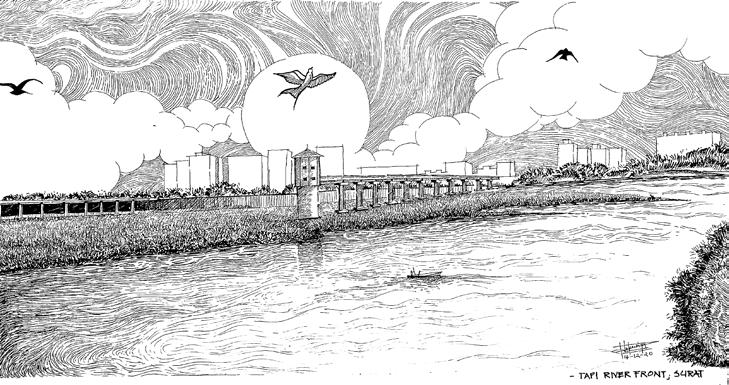
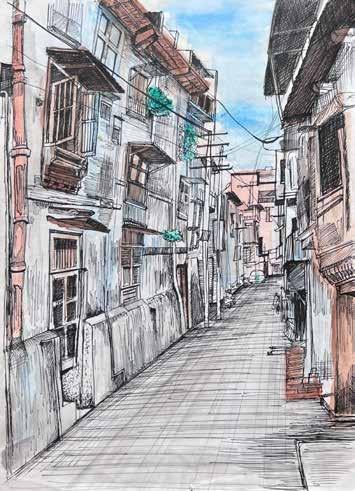



 Ar. Savar Suri
Ar. Savar Suri
Lucknow, a culturally and architecturally rich historical city in Northern India has experienced numerous influences from its conception. Having developed spontaneously on the banks of River Gomti, its origin has been said to be traced back to King Lakshman followed by multiple rules and regimes. It was however during the reign of the nawabs that the city prospered in the context of culture, arts and crafts and architecture. British influence was more evident after the first war of Indian independence in 1857 when they interfered with the fabric of the city to comply with their standards of safety, cleanliness and security, but led to the disturbance of the existing coherent urban fabric.
Most of the structures are located within, or in close proximity to the densely packed historic core of the city with inadequate infrastructure, much like other developing urban centres in India (Kantor and Nair, 2005). It seems the historical snub of the river Gomti to call Awadhi culture as Ganga-Yumuni Tehzeeb though neither of these two rivers flows through the Lucknow. The Gomti river, a loop of river Ganga, does not carry the tag of the ‘holy’ river but supported the settlements of Lucknow and its proximity. The southern bank of the river highlights the unique interaction and the adventures of Mughals, Nawabs, and colonial dynasties. The Lucknowi passion for the river and its banks is as old as the city. Today too, the river has a special place in the heart of its citizens. Lucknow’s buildings represent different
architectural styles with many symbols. More than half of the buildings constructed during the Nawabi and British periods are located in the old area of the city like Chowk, Aminabad, and Hazaratganj. Among existing architecture, there are religious buildings such as Imambara, mosques, and other Islamic shrines as well as centuries-old structures such as fenced gardens, baradaris and brick layered complexes.
This is the first significant stage of Lucknow’s architecture. There are very few monuments dating to the Sur and Mughal eras such as Lakshman Tila or Macchi Bhavan and Akbari Gate.
The history of Lucknow's architecture commenced when Nawab Asaf Ud Daula (1775-1798) shifted the headquarters of his government from Faizabad to Lucknow. Following the migration of learned men, poets, artists and soldiers from Delhi and Faizabad, this new centre became the nucleus of an urbane, literate and sophisticated society. In the last decades of the eighteenth century, the exodus from Delhi carried with it the descendants of those master architects and craftsmen who had been employed for generations by the Mughal emperors of Delhi. This phase has been further subdivided into two, the first of which dates from 1775 to 1800, encompassing the reigns of Nawab Asaf Ud Daula and Nawab Saadat Ali Khan.
It was the later Mughal tradition of architecture which was brought to Lucknow and which deeply influenced its style of buildings. Lucknow is the heartland of Indian Shiya Muslims and this fact is reflected in the architectural creations of the place. Islamic architecture is predominant in the capital city of Lucknow. Though there was excessive building activity during this time, architecturally it was a traditional phase. On the one hand, it represents the adaptation of later Mughal architecture, which was itself already in decline. On the other hand, it was also the time when Claude Martin, an influential European in the court of the Nawab, and the engineers of the British East India Company were creating buildings in Lucknow. So, during this time while Asaf Ud Daula was building his magnificent Imambara Asafi, Martin was building palaces with European elements, which were to have a deep impact on the architecture of Lucknow.
The distinctive architectural features of Lucknow’s architecture during this period are as follows:
• The use of fish as a decorative and thriving motif especially at the gates.
• Using chhattars (a kind of dome that can stand as a separate monument) like Chhattar Manzil.
• Use of baradari, a twelve-door pavilion.
• Rumi Darwaza, the flagship of Lucknow.
• Besieged herds (kind of fenced garden) like Sikandar Bagh.
• Halls covered with dome like Asafi Imambara.
• Labyrinths like Bhul Bhulaiya.
• Use of the Taikhanave.
• Use of lakhauri bricks
Asaf Ud Duala’s successor, Nawab Saadat Ali, was particularly captivated by the European lifestyle. He encouraged the construction of European buildings and took an active interest in designing his own palaces. In the second phase of Nawabi architecture (1800-1856) are those monuments, which belong to the first half of the nineteenth century, before Awadh was annexed by the British. These monuments are characterised by a hybrid style, incorporating Indo-Muslim and European elements.
The third phase comprises those monuments raised by the British between 1857 and 1947.

A number of influences have shaped the architecture of Lucknow, such as the prevalence of Persian ideology and European styles of construction. The Mughal influence has been the greatest and elements of Shiite faith are prominently seen in the architecture of Lucknow.
• The distinctive features of Lucknow architecture are the application of fish as a decorative pattern especially in the gates of the buildings.



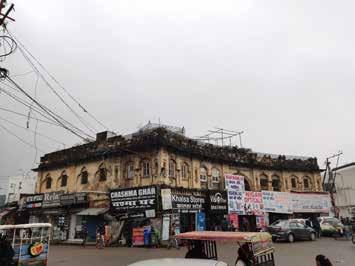
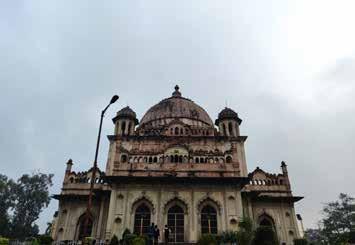

• Of the secular structures the Umbrella Palace is a prominent architectural establishment. This use of umbrella is an exclusive style of Lucknow.
• The magnificent building has large underground rooms and a dome surmounted by a gilt umbrella.
• Sikandar Bagh is a renowned garden architecture of Lucknow. There is a small pavilion in the middle of the garden which was utilised for the performances of music and dances.


• The use of sandstone and thick lime plaster with floral and geometric motifs carved in relief are also notable features of Awadhi architecture, and an important religious monument in which these elements appear is the great Jama Masjid erected by Nawab Muhammad Ali Shah.
• The massiveness and grandeur of this mosque are unparalleled in Awadh. Structurally, it follows the conventional plan of a Mughal mosque with minarets at the side.
• The facade and its lofty recessed arched entrance, with colourful paintings, are true expressions of Awadhi architecture. These are also noticeable in the Rumi Darwaza, the Sikandar Bagh Gate and the Jilokhana gates of the Hussainabad Imambara.
The architecture of Lucknow is categorised in two broad groups like the religious buildings which encompasses mosques, the Imambara, Karbala and other Islamic shrines
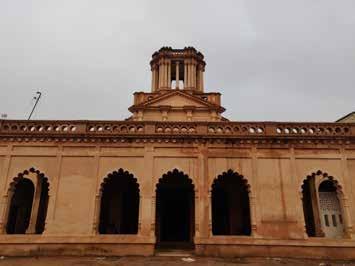
and the secular architectural specimens such as the enclosed gardens, the palace complexes and the Baradaris.

The palaces built by the Nawabs for their own use were essentially traditional in their design and layout, called ‘kothis’. These were European in style and were situated on the outskirts of the city, and were smaller in scale. They were rarely used, for their design and layout corresponded little with the lifestyles of the Nawabs and their families.
The baradari was another popular type of building found in Lucknow. The baradari (a pavilion with twelve openings) has been in use since the fourteenth century. The Sultans of Delhi, the Rajput kings and the Mughal emperors and noblemen built baradaris inside forts and palaces, in the sylvan outskirts of cities, in shikargahs (hunting parks), gardens, and along river banks. They also built baradaris in the midst of lakes or tanks, known as jal mahals.
The religious buildings of Lucknow consist of the Asafi Imambara or the Bara Imambara and the Chhota Imambara which are of great architectural importance. The renowned Bhul Bhulaiya forms a part of the Asafi Imambara complex. The architecture reflects the embellished Mughal style. The structural design of the building is devoid of any European elements or the use of iron.
The architecture of the Chhota Imambara is of the Char bagh pattern, i.e., the Mughal garden architectural style. The design pattern used in the monument is Indo-Islamic in nature but incorporates a generous quantity of Persian crafts.
The Jami Masjid Friday mosque of Lucknow is a relatively new structure and thus it has many embellishments in the Mannerist style. The exterior has stucco instead of brick finish, which makes it appear darker, while the interior is bright and colourful.
Among some of the outstanding architectural marvels of Lucknow are the Asafi Imambara, along with its towering mosque and the imposing Rumi Darwaza.
The Constantia or La Martiniere, which though not a royal edifice, is of great significance as being the most outstanding example of the European style of architecture.
The two mausoleums of Nawab Saadat Ali Khan and his Queen Khurshizadi are classic examples of the later Mughal tomb, also seen in Delhi, Allahabad, Haryana and Punjab, the great Jama Masjid erected by Nawab Muhammad Ali Shah.
 All Images Courtesy: Author
All Images Courtesy: Author
1. Gulati, R. (2018). Urban Landscape as Cultural Identity: Need for Holistic Approach at Lucknow. National Seminar, November 11-12 2018, Seminar Proceed ings, pp. 211-215.
2. Intach.org. (2013). INTACH Art and Material Heritage | INTACH Art and Mate rial Heritage. [online] Available at: http://heritageici.intach.org/
3. Kantor, Paula, and Padmaja Nair. 2005. “Vulnerability Among Slum Dwellers in Lucknow, India: Implications for Urban Livelihood Security.” International Devel opment Planning Review 27 (3): 333–358.
4. Krishna, A (2012). 'The Business of Heritage: Hazratganj, Lucknow', Context: Built, Living and Natural, Vol. 9, No. 2, Special Issue on Cultural Economics and Livelihoods, pp. 13-20.

5. Krishna, A. (2014). The Urban Heritage Management Paradigm: Challenges From Lucknow, An Emerging Indian City. Cornell.edu. [online] Available at: https://ecommons.cornell.edu/handle/1813/36044
6. Llewellyn-Jones, R (2003). Lucknow: Then and Now, The Marg Foundation.
7. Majumdar, P. (2004). Dynamics of Urban Development : the Changing Face of Lucknow. Delhi: Abhijeet Publications.
8. Nagpal, Swati, and Amita Sinha. 2009. “The Gomti Riverfront in Lucknow, India: Revitalization of a Cultural Heritage Landscape.”
9. National Geographic. (n.d.). Exploring Lucknow’s Majestic Architectural Heritage. [online] Available at: http://www.natgeotraveller.in/exploring-luc knows-majestic-architectural-heritage/
10. Nrlc.gov.in. (2019). National Research Laboratory for Conservation of Cultural Property. [online] Available at: http://www.nrlc.gov.in/
11. Oldenburg, V.T. (2007). Shaam-e-Awadh: Writings on Lucknow, Penguin India.
12. Taqui, Roshan. 2011. Hazratganj - A Journey through the Times. Edited by Rosie Llewellyn-Jones. 1st ed. Lucknow (India): Bennett, Coleman and Co.
13. Times News Network. 1998a. “Restoring Kaiserbagh’s Past Glory.” Times of India, October 23.
14. Town and Country Planning Department, 1971. “Master Plan of Lucknow”. Lucknow (India).
15. Varshney, V.B. (2018). Lucknow: The City of Heritage and Culture: A Walk Through History, Niyogi Books.
Ar. Savar Suri has over seven years of experience across varied residential and commercial projects. He has also worked previously at a high-end residential architecture and interior firms in Delhi and on bespoke residences and office spaces of niche clientele. He has recently completed his Masters in Built Heritage (Architectural Conservation). savarsuri@gmail.com


Though it took some time in coming, the NATCON 21 hosted by the Telangana chapter at Hyderabad from May 14-16th 2022 was a resounding success! Arch Utsav, as it was themed, was meant as a celebration of architecture (and life) after two years of the unrelenting pandemic, grinding lockdowns and weary webinars.
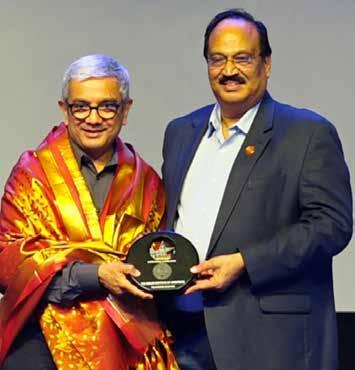



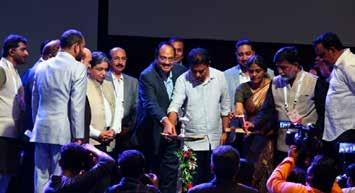
Engaging presentations, thought provoking speakers, warm hospitality, great venue, smooth organization, sumptuous food and the usual time busting sessions all added up to a memorable event. Here is a brief story in pics:
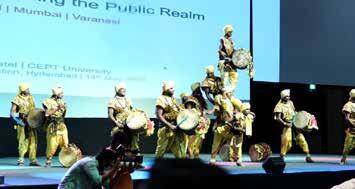
Top-Bottom:
► Ar. Sridhar Gopisetty, Convener, IIA NATCON-21 speaking on Day 1.

► Dignitaries releasing the Souvenir of NATCON 21
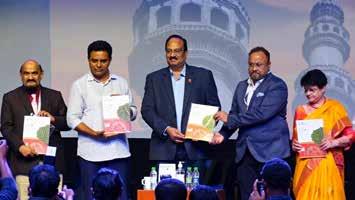
► A thought provoking talk by Ar.Prof. Mahesh Daas, President, ACSA, Boston,
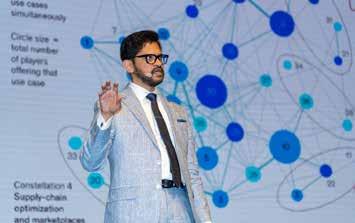
on ‘The Architecture of the Construction Robotics Revolution’.
► Ar. Mahesh Iyer
on the tips for a well-run practise.
Top-Bottom:
► Ar. Simon NAF of multi-national firm AEDAS spoke on the Challenges of Designing in India with a focus on the Pragathi Maidan Redevelopment project at N.Delhi. Here he is felicitated by Ar. Kuldeep Singh, Co- convener for NATCON 21.

► Exhibition stall of primary sponsor Radha TMT with the Minister.

► Not an Architect but an Engineer – Prof K.N Satyanarayana, Director of IIT, Tirupati in conversation with Ar. V.V.L Narasimham, Past Chairman of Telangana Chapter on ‘Sustainable Construction Technologies- Challenges and Opportunities’


Top-Bottom:
►The Role of IIA and COA were discussed amongst Ar. Habeeb Khan, President COA, Ar. C.R.Raju, President IIA moderated by Ar. Jitendra Mehta.
► Evoking Emotions through Architecture – an interesting session was moderated by Ar. G. Shankar Narayan, Vice Chairman, Telangana Chapter. Panelists were Ar. Tanuja Kanvinde, Ar. Vijaya Bhargava and Ar. Sujit Nair.

► Full house totally engrossed.
► Ar. Jagannathan Ramanan gave an enlightening talk on “A Template for Heritage Towns With Specific Reference to Srirangam”. Mr. Vinay Kumar, CEO of TSbPASS, talked about “Adopting Integrated Project Approval Systems towards Making better Built Environment”.
► Letting the hair down at the end of Day 2 !
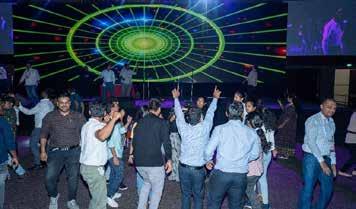
► ‘Retrospective of 100+ years of Hyderabad Architecture’ was part of the exhibition along with student competition works. Here Ar. G.Shankar Narayan is with Hon’ble Minister K. T. Rama Rao and NATCON Convenor Ar. Sridhar Gopisetty.
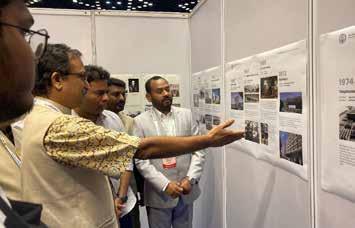
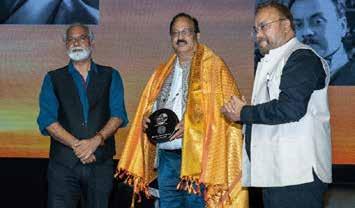
►Ar. Madhu Shanker of Pradeep Sachdeva Architects gave an engaging talk on “Adaptive Reuse of Built Heritage and Circular Economy’.




► Organising Committee of IIA Telangana led by Chairman Ar. Uday Shanker Doni all smiles after the successful conduct of NATCON 21.
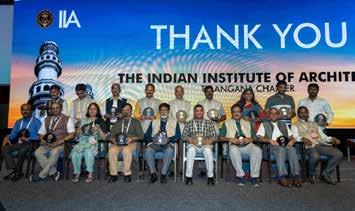
was born to Smt. ‘Devan Bai and Shri Daulat
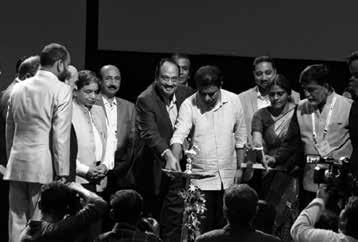
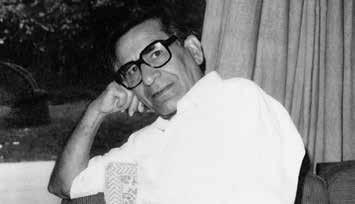

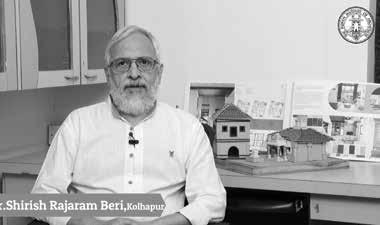
in
of
later
be known
During his professional career spanning more than six decades started with his involvement with the works of master architect Le Corbusier. He was the backbone of most of the works of legendary architects like Charles Correa, B.V. Doshi, Raj Rewal, Kuldip Singh and many more as the structural engineer of virtually most of the iconic structures designed by them. Some of his notable works include the Hall of Nations in Delhi, Salarjung Museum in Hyderabad, IIM Bengaluru, Akbar Hotel in Delhi, NCDC office in Delhi, Hindon River Mill in Ghaziabad, Municipal Stadium and Tagore Theatre in Ahmedabad, Indoor Stadium in Srinagar to name a few amongst hundreds of his works.
His extraordinary persona was a perfect combination of the mind of a visionary and innovative engineer and the heart of a passionate lover of architecture and art. He was truly the ‘reinforced cement concrete’ bond between the two noble professions of architecture and engineering.
His works are widely published in books and journals. He received numerous awards and recognitions during his long career. In acknowledgement of his lifetime contribution to the field of architecture and design, he was conferred the Honorary Fellowship of the Indian Institute of Architects during the ARCASIA Forum held at Jaipur in its centenary year in 2017, which was presented to him at a formal ceremony at the India International Centre by me as the then President of IIA.
Personally, I came in contact with him in the year 1976 when I joined Raj Rewal as a young architect. He was an almost-daily visitor to our office along with his wife Mrs. Shukla Raj as his office was upstairs in the same building. I have wonderful memories of my interactions with him which continued till he finally left for his heavenly abode. His passing has left a deep and permanent void which will be difficult to fill and shall be felt for long.
May his noble soul rest in eternal peace.
IIA Pune Centre hosted the recently concluded IIA Maharashtra Chapter convention – Mahacon 2022. It was held on 29th and 30th April 2022 at Buntara Bhavan, located at Baner, Pune.
The inauguration of the exhibition was done at the hands of the Chief Guest, Ar. CR Raju, Vice-President Ar. Vilas Awachat along with IIA Maharashtra Chapter Chairman Ar. Sandeep Bawdekar. The Convenor, Ar. Sandeep Khatpe, Chairman, Pune Centre and Co-Convenor Ar. Jyoti Panse, Vice-Chairperson, Pune Centre accompanied the honoured guests. Members of the National Council, Maharashtra Chapter and host Pune Centre were present along with other delegates.
The Convenor welcomed the guests. He felicitated the Chief Guest with Chairman Maharashtra Chapter. The Souvenir was released at the hands of the Chief Guest, Ar. CR Raju. The editor of the Souvenir, Ar. Mrinalini Sane who is also the Jt. Hon. Secretary of the Pune Centre was present. On this occasion, two tall personages of Maharashtra, Ar. Prakash Deshmukh and Ar. Vijay Sohoni were conferred with a Citation for Lifetime Award for outstanding contribution
in the field of architectural profession and a Citation for outstanding contribution in the field of architectural education respectively. Both have made their presence felt at national level at the IIA and COA respectively. The National Council members – Ar. Jitendra Mehta, Jr. Vice-President, Ar. Gyanendra Shekhawat, Treasurer, Ar. Ashutosh Agarwal, Ar. Leena Kumar and Ar. Satish Mane, Jt. Hon. Secretaries, were felicitated by two senior and well-known members of Pune Centre, Ar. Laxman Thite and Ar. Vishwas Kulkarni, also Mahacon Organising Committee members.
The President also felicitated some Mahacon Organising Committee Members as an appreciation of their contribution towards successful organisation of Mahacon – Ar. Vikas Achalkar, Ar. Shitesh Agrawal, Ar. Laxman Thite, Ar. Vishwas Kulkarni, Ar. Mangesh Gotal. Ar. Shailesh Dandane and Ar. Mrinalini Sane. This was followed the speech by Ar. Sandeep Bawdekar and then by the speech of the Chief Guest, Ar. CR Raju. Both the speakers talked of the importance of the role played by architects in the society, especially in and post Covid times. The changing roles of architects and the structures was also deliberated. This concluded the Inaugural session.
The first keynote session followed after the presentation by the sponsor Knest. Dr. Bimal Patel, Ahmedabad, as the keynote speaker, explained the theme of transition through his projects. He covered the Sabarmati Riverfront development, Ahmedabad and the Kashi-Vishwanath Corridor, Varanasi. He extensively covered urban design aspects, architectural design to socio-economic aspects that have affected in a positive way through appropriate design intervention.
This session was followed by lunch, after which, the first technical session commenced. Kohler was the sponsor. Ar. Krishna Murthy from Mumbai took the audience on a different plane. His work highlighted the extended boundaries of architecture. Landscape Designer Ar. Mahesh Nampurkar, Pune, showed a film that covered the theme of transition through the concepts of Experience, Experiment and Expression – Avishkaran, Prayog and Prachiti. A number of projects were covered from their inception to their process and completion. The transformation from a raw site to the greening of the land showed the successful transition to a useful and beautiful place.
The day’s technical proceedings ended with a panel discussion initiated by Ar. Vikas Achalkar and Ar. Shitesh Agrawal. The panellists were renowned architects having a diverse practice – Ar. Madhav Joshi, Ar. Manoj Tatooskar, Ar. Sunil Patil, Ar. Shashank Phadke and Ar. Anil Ranka. The discussion covered practical aspects of architectural practice like how to deal with corporate clients, how to plan monetary aspects, profession and business aspects of practice. The National Council office bearers’ meeting was also organised during the first day of Mahacon.
The keynote address for the 2nd day was given by Ar. Sonali Rastogi, New Delhi. The sponsor was Gujarat Guardian. Ar. Sonali spoke passionately about her projects that covered the largest building in the world – the Surat Diamond Bourse, to an academy in Jaipur, to the corporate building in Kolkata, to the tiny manufacturing set up in the inaccessible hills of Uttarakhand.
Ar. Baarish Date, an alumnus of IDC, IIT Mumbai explained about the importance and role played by graphic design and signage in architectural projects. He showcased these ideas through 4 widely differing projects – the Ayodhya temple complex, a War Memorial complex, a garden/ landscaped area of a housing society and a crematorium. The last technical session was covered by Ar. Lalichan Zacharias, Kochi. The
sponsor was VTP Realty. Ar. Lalichan explained the meaning of transition as an idea of change. This concept was examined through some of his projects – a resort and a hospital as examples. Mahacon has indeed become a benchmark for future events. The organising committee are grateful to all concerned for their contribution and unstinting support through the event and after the event.
KapilKawale, Ar. RahulDandekar, Ar. Husain Karori, worked hard to make the program a grand success.
The senior members who were felicitated includes Ar. Avinash B Dongre, Ar. Shriram R Marathe, Ar. Vasant B Ranade, Ar. Atulchandra G Mendhekar, Ar. Ramesh G Bhambani, Ar. Hemchandra N Manapure, Ar. Anand D Gawande, Ar. Indrakumar K Advani, Ar. Dilip L Naware, Ar. Vijay G. Deoskar, Ar. Mukund V. Shirkhedkar, Ar. Parmanand S Ramteke, Ar. Madhukar R Rahate, Ar. Anil V Sahasrabhojnee, Ar. Vasant M Kinhikar, Ar. Vijay K Thakur and Ar. Ashok Waghaye.
Ar. NehaJaipuriaShelke Conducted the program. Ar. AniketKhodwe proposed the vote of thanks.
The Indian Institute of Architects (IIA), Nagpur Centre organized a felicitation program to honor some of its distinguished members on 7th May 2022 at Hotel Centre point, Ramdaspeth Nagpur.

The IIA Nagpur Centre felicitated Ar. Habeeb Khan, for his reformative approach & invaluable contribution as the President of Council of Architecture, Dr. UjwalaChakradeo for her appointment as the Vice-Chancellor of SNDT University Mumbai and Ar. Lalichan Zacharias, council member for the excellent work being done as the Editor of the Journal of IIA. The Nagpur Centre also felicitated its senior members above 75 years of age for their exemplary contribution to the profession of architecture & education.
Ar. Jitendra Mehta, Junior Vice President IIA was the Guest of Honor. Ar. RavirajSarwate, Chairman IIA Nagpur Centre in his welcome address informed the gathering about the various activities taken up by the centre in the last couple of months along with the future programs.
The felicitation program was attended in large numbers by the members of IIA and special invitees.
Ar. Sunil Degwekar Vice Chairman, Ar. AniketKhodweJt. Hon Secretary, Ar. NehaJaipuriaShelke Jt. Hon. Secretary, Ar. Rajesh Kakde treasurer, Ar. PriyadarshanNagpurkar, Ar.
On January 12, Ms Arunima Shankar, an Architect, Researcher, educator and Heritage Conservationist by profession, delivered a lecture for the Arugu session titled “ Amouse filled her house- Architecture as a narration”. She is the co-founder of 'Akarmaa', meaning ' selfless action'. Akarmaa is an attempt towards developing mindfulness of one's actions through research, design & advocacy in the fields of architecture, heritage, environment and education.
As part of the Arugu sessions, Mr Biju John, CEO of iTVis innovations Pvt. Ltd. was invited to deliver a technical lecture session on “Technology trends in lighting automation” on February 9, 2022. Mr Biju John has been part of the Indian Lighting Industry for more than 25 Years. He is one of the well-known techno-commercial professional and creative entrepreneurs with a strong leadership track record. Mr John has extensive experience and knowledge in intelligent lighting, automation and UV systems. A relationship builder with an extremely large industry network and well-travelled with good global business exposure. Mr John is currently handling the Intelligent Lighting and automation business through his firm iTvis innovations Pvt. Ltd which is the hybrid partner of ESYLUX, Germany.
Keeping in view the academic interests of the IIA, Prof. Dr S. Ramesh, Professor in the Department of Architecture, School of Planning and Architecture Vijayawada was invited

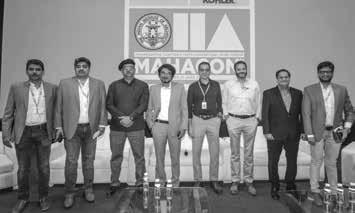
to present at the Arugu session on March 16, 2022. He has more than 25 years of experience in the professional field and has earlier served as a Chief Architect in the Municipal Corporation of Delhi. His talk was on “Appreciation of ventilation- Architectural interventions to maintain the indoor air quality in buildings.”
As part of the professional responsibility to enhance the professional network and discuss the professional issues, the IIA AP Chapter hosted an Architects Meet on March 26, 2022, at RAMCOSA, Madhav Nagar, Kakinada. Various Architects, professionals and students across the state participated in the event to share, engage and speak about architecture and the architectural profession.
The Haryana Chapter organized a program on the occasion of World Earth Day on 22nd April 2022 at Hotel Delite Grand, Faridabad. On the occasion a felicitation program for Ar. Gita Balakrishnan, who undertook a journey on foot from Kolkata to New Delhi, was organized. Ar. Gita walked from Kolkata to New Delhi covering 1700 km in about 70 days, spreading awareness about good design and its potential in changing peoples’ lives. She entered Haryana State during the last leg of her tour, before reaching New Delhi the following day.

Speaking on the occasion Ar. Punit Sethi, Chairman IIA Haryana Chapter, greeted the fraternity on the occasion of World Earth Day and reminded all architects of our collective responsibility towards protection of the earth's resources. He welcomed Ar. Gita and congratulated her on the successful completion of her mission. Ar. Gita shared with the gathering her experiences and learning and emphasized the importance of architects' role in shaping the built environment.
To commemorate the occasion Ar. Rekha Taluja Kalra, Hon. Treasurer IIA Faridabad Centre, recited a poem titled "Bas karo ab". It was a poignant expression to sensitize the audience on the importance of protecting Mother Earth. She also, through the poem, appreciated Ar. Gita's efforts to promote architecture.
The program was well attended by about 100 people from various cities of Haryana as well as New Delhi, NOIDA and Ghaziabad and was graced by Ar. Anuj Srivastava, Chairman IIA NOIDA Centre and Ar. Vijay Garg, Chairman, State Level Expert Appraisal Committee (SEAC) Delhi. The program was hosted by IIA Faridabad Centre.
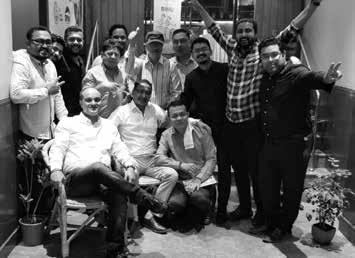
The Indian Institute of Architects - Assam Chapter celebrated Bohag Bihu/ Rongali Bihu ahead of the sevenday long festival on April 10th 2022. Rongali Bihu which is also called Xaat Bihu (xaat meaning seven) is a traditional ethnic festival celebrated in the North-Eastern Indian state of Assam and other parts of northeastern India by the indigenous ethnic groups of Assam, and marks the beginning of the Assamese New Year. Architects from all across the state gathered together with their families to celebrate the festival and the function also proved to be a re-starting point for organizing and hosting public IIA events after the lows of COVID-19. The function saw heartfelt addresses by the office bearers and performances by other members of the chapter along with bihu songs of the season.
ISVS envisages contributing to the knowledge of vernacular settlements around the world and establish meaningfulness, and relevance of vernacular traditions, and cultural practices in the contemporary world. The Seminar will comprise of paper presentations, keynote addresses by eminent scholars, workshops for students, along with walking tours in the city of Vadodara and the UNESCO World Heritage Site of Champaner.
Abstracts are invited for papers on the theme "The Potency of Vernacular Settlements". Selected papers from ISVS will be published in the Scopus indexed journal ISVS E-Journal.
Dates : 30 September - 2 October, 2022
Venue: Vadodara For more information, visit the ISVS 11 website: https://www. isvs11.co.in/

 Raheja Vivarea, Mumbai
Raheja Vivarea, Mumbai

